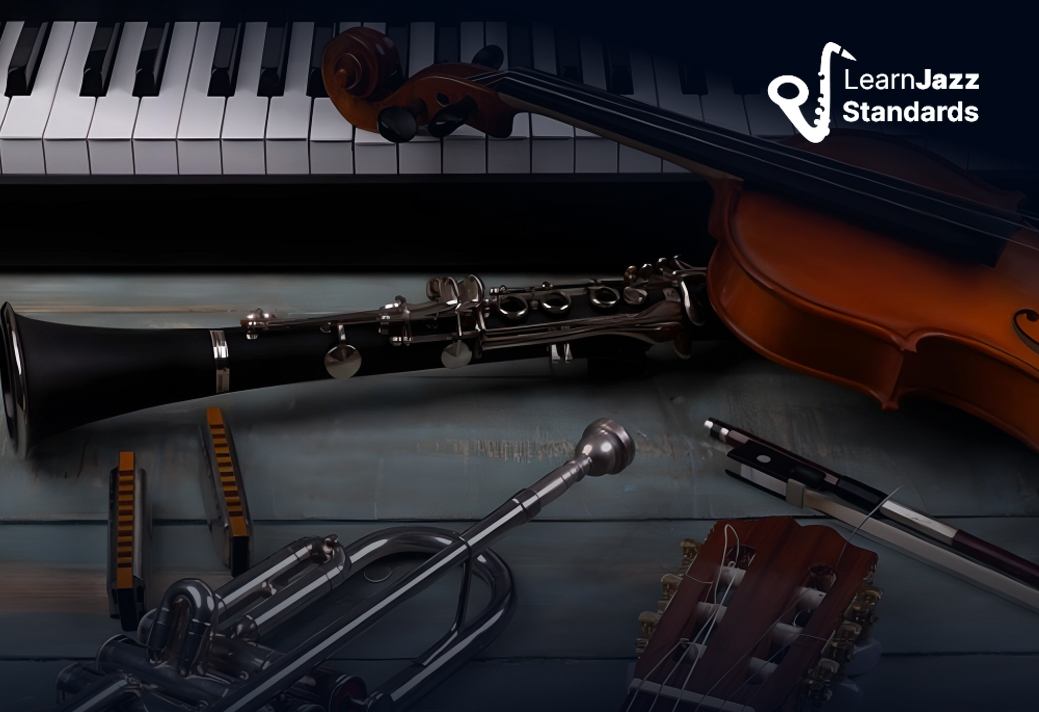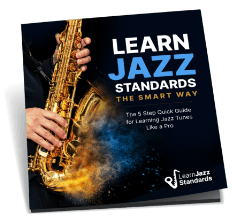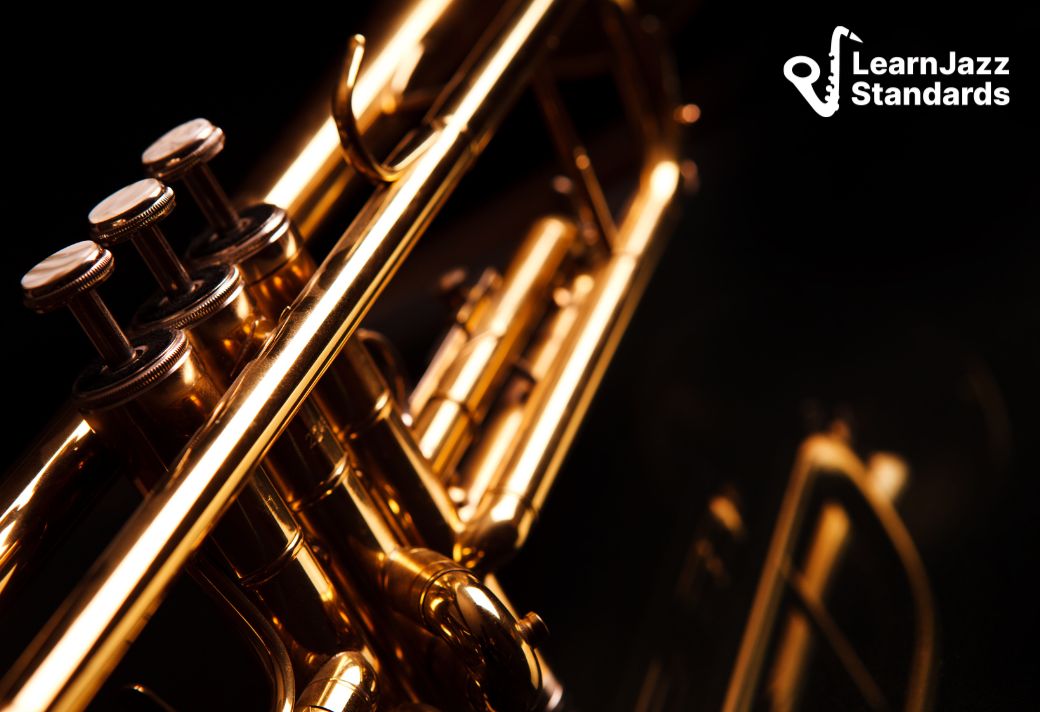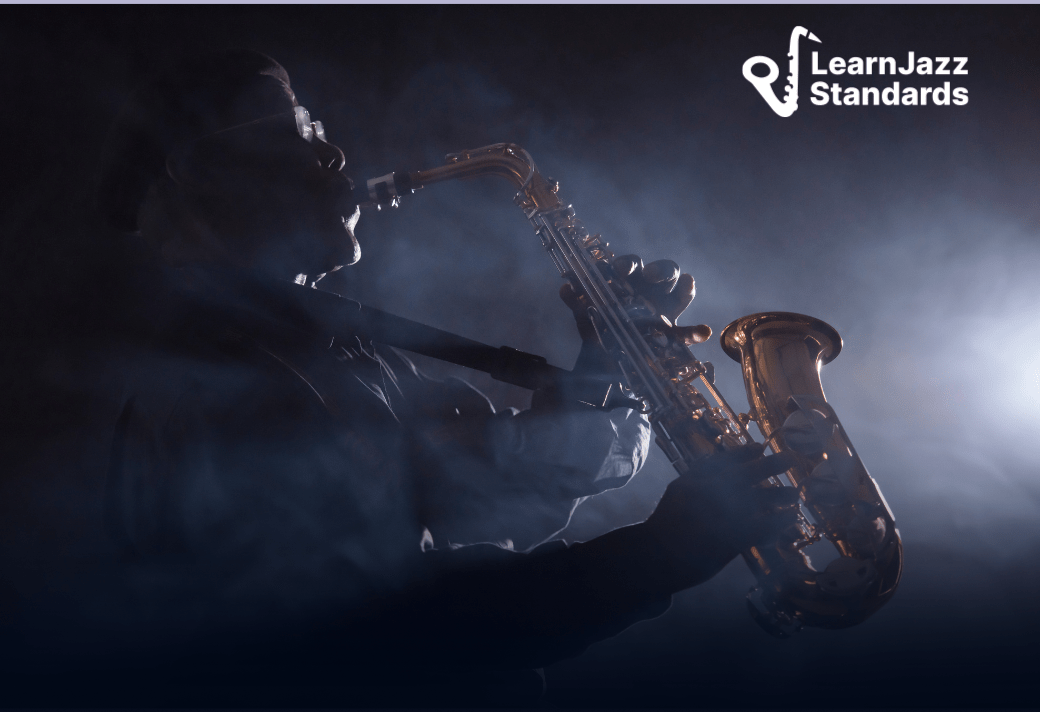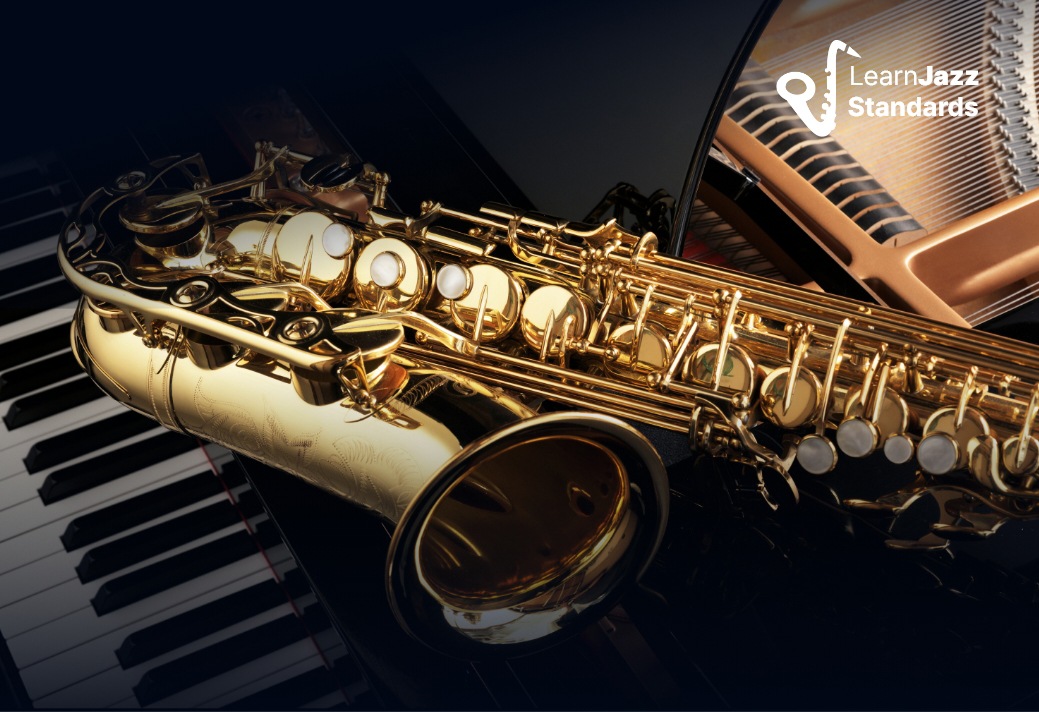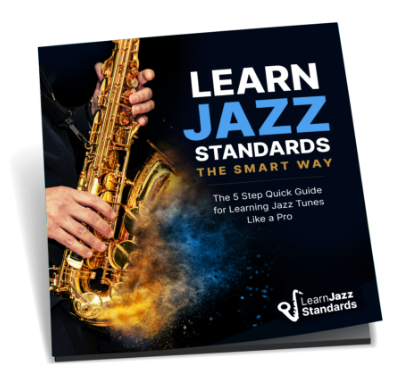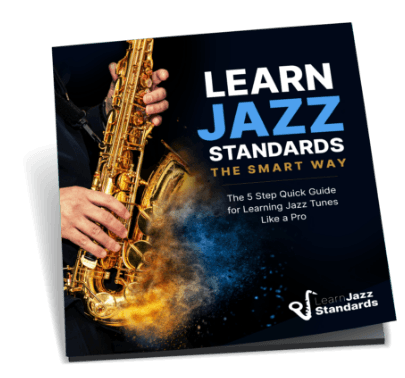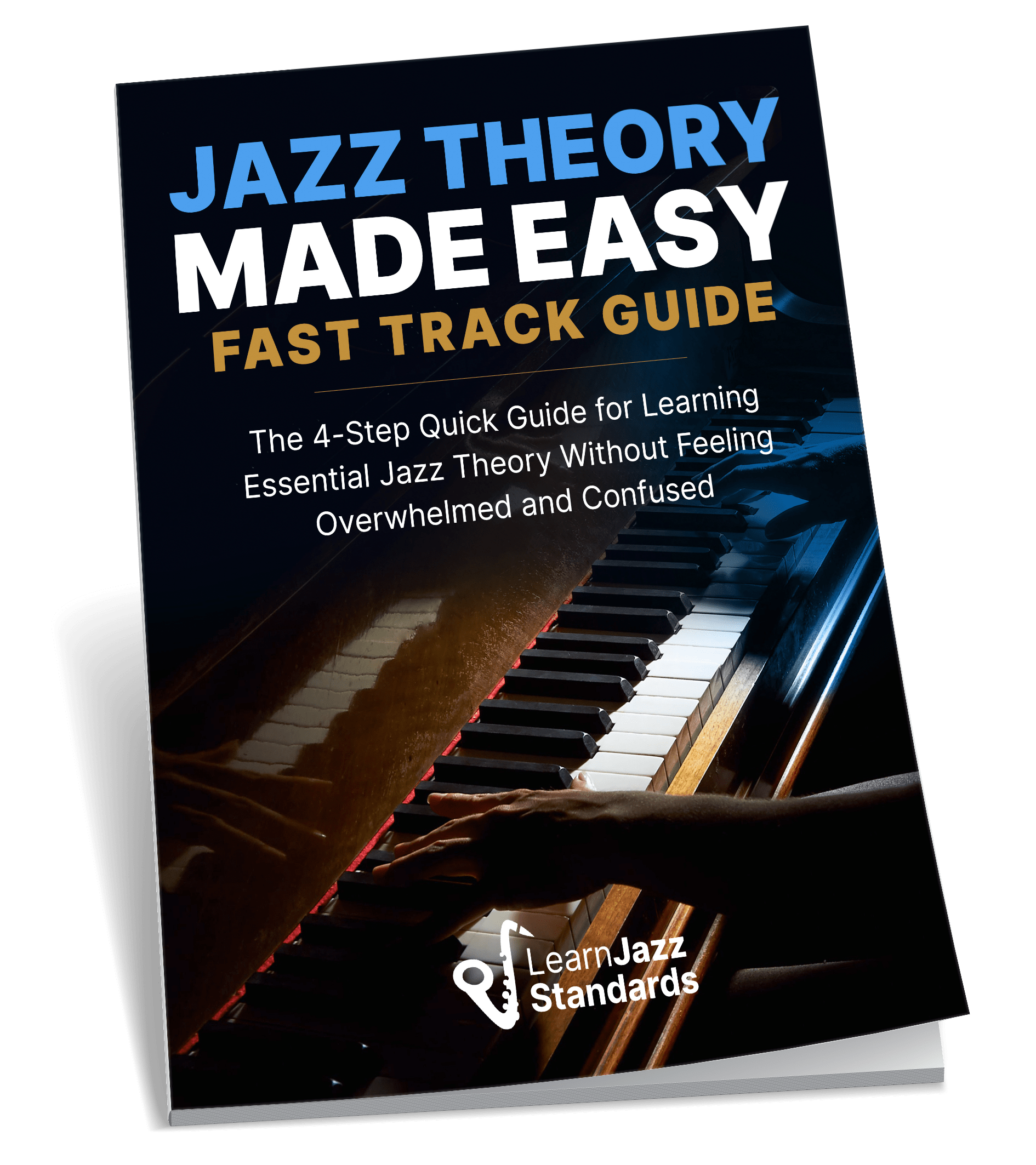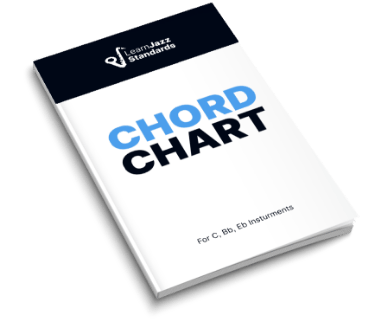The best way to learn any language is to listen to its native speakers. When it comes to understanding the musical language of jazz, there are so many famous jazz musicians you can learn from.
This list of great jazz musicians is designed to introduce you to fifty of them.
The truth is that so many great, creative, and influential jazz musicians have come and gone in the century-plus since jazz became a thing. Though this list contains fifty of the best jazz musicians of all time, the list would have to be five times larger to scratch the surface!
Consider this post a solid starting point when getting into jazz. You’ll definitely recognize some of them, but other jazz musicians on this list might not be familiar to you. One thing is for sure, however. All these famous jazz musicians are must-knows for anyone interested in jazz music.
This article will discuss why each jazz icon was so influential. We’ll be sure to provide ample listening recommendations so you can discover the best works of these famous jazz musicians!
If you want to explore the fantastic compositions and recordings of these great jazz musicians and identify the aspects of their playing and personalities that made them legends, then check out the Learn Jazz Standards Inner Circle.
Whether you are a jazz pianist, guitarist, sax player, trumpet player—or whatever—there is an abundance of materials here to help you take your jazz playing to the next level!
Improve in 30 days or less. Join the Inner Circle!
Table of Contents
The 50 Best Jazz Musicians Of All Time (Every Jazz Artist You Need To Start Listening To)
The following fifty jazz artists are on this list because of their contributions to the art form. Many artists on this list are responsible for making jazz what it is today.
“Famous jazz musician” can mean a lot, depending on who’s asking. Famous could refer to popular appeal with general audiences. However, it could also mean being famous among other jazz musicians.
This list considers both types of fame. Some of these players you may not have heard of, but each one is undoubtedly famous among their jazz musician peers, and each entrant is responsible for making jazz what it is today.
Let’s dig in.
1. Louis Armstrong
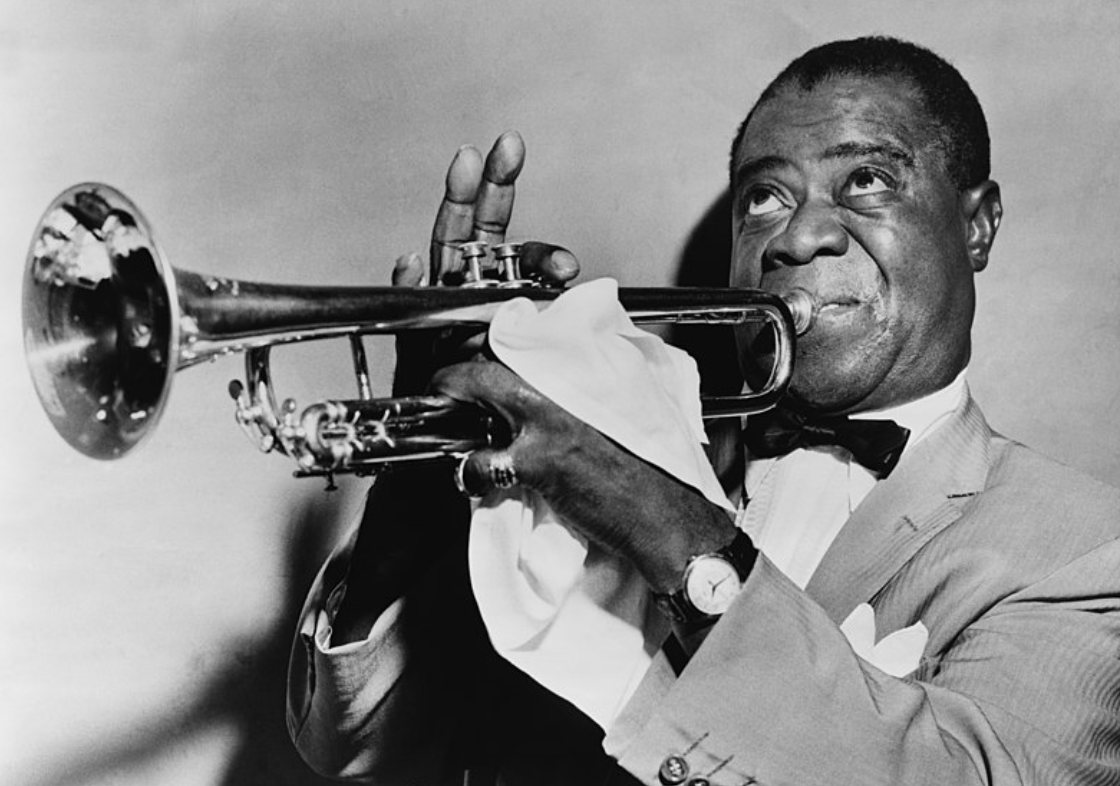
Image Source: Wikipedia
Louis Armstrong’s monumental contributions to jazz music make him one of the most influential jazz musicians ever. Referred to as “Pops” or “Satchmo,” Armstrong’s vibrant spirit, artistry, and persona have left an enduring legacy, making him a jazz icon, let alone an American icon.
Before Armstrong’s influence, New Orleans jazz emphasized collective improvisation. Louis, however, brought the soloist to the forefront and highlighted individual expression within the ensemble.
His virtuosic trumpet playing, characterized by its brilliant tone, rhythmic sophistication, and innovative improvisational choices, set the standard for jazz trumpet and continues to inspire players today.
Beyond his trumpet skills, Armstrong had a charismatic presence and infectious personality, which made him a globally revered figure. His unique, gravelly vocal quality brought a new sound to jazz singing.
His innovative approach to vocals and the early development of scat singing profoundly impacted future jazz vocalists, notably influencing artists like Ella Fitzgerald.
Louis Armstrong was among the first jazz musicians to gain international acclaim. He took jazz from the streets of New Orleans to stages worldwide, and his tours in Africa, Europe, and Asia played a pivotal role in globalizing its appeal.
With songs like” What a Wonderful World,” Hello, Dolly!” and “When the Saints Go Marching In,” Armstrong not only made significant contributions to the jazz repertoire but also reached a broader pop audience.
Louis Armstrong lived through 50 years of jazz music’s evolution!
Throughout his long career, which spans nearly all of jazz history, Armstrong continually evolved his sound as a jazz artist, adapting to different eras of jazz and collaborating with a wide array of musicians.
Listen to One of the Most Influential Jazz Musicians of All Time:
Check out this compilation of Louis Armstrong classics, spanning his 50 years of jazz playing:
2. Duke Ellington
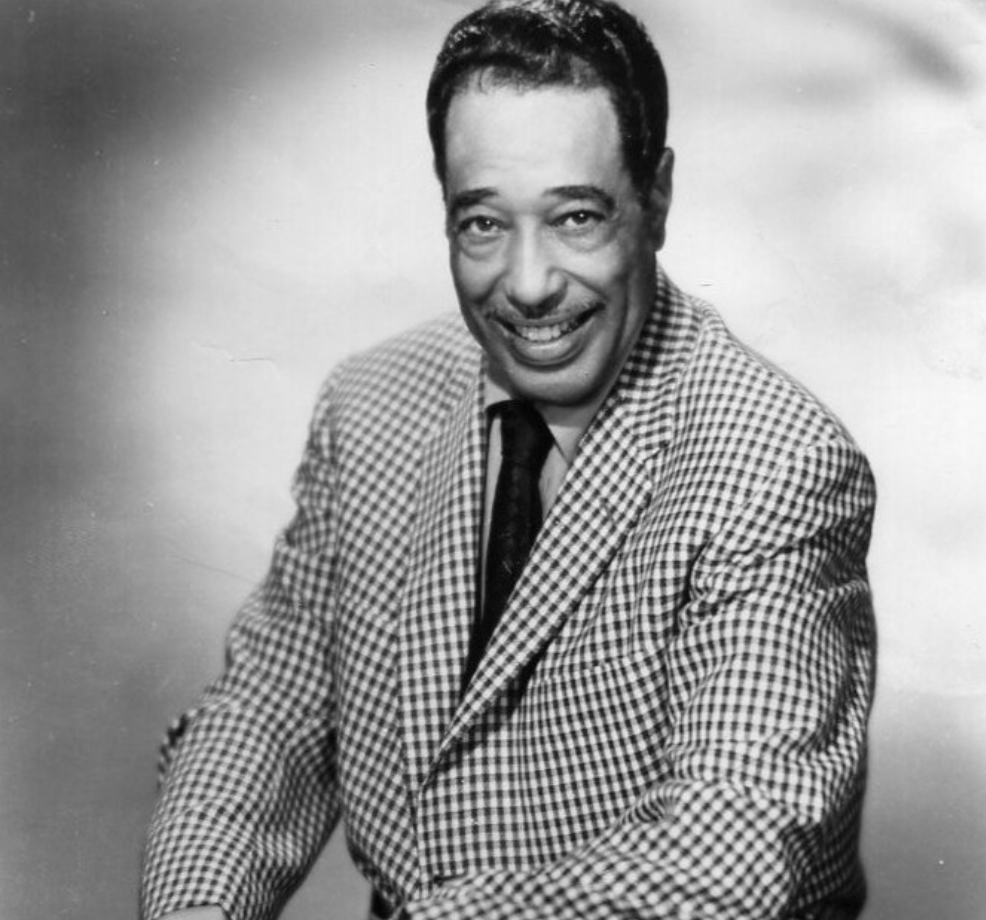
Image Source: Wikimedia Commons
Duke Ellington is perhaps the most prolific and influential jazz composer ever. His vast body of swing music and jazz compositions continues to inspire generations of musicians and listeners.
Over his lifetime, Duke Ellington wrote more than 3,000 compositions! His works ranged from short ballads to extended suites, all of which showcased his skills as a composer and his orchestra’s skills as one of the best big bands in the New York jazz scene.
The Duke Ellington Orchestra was one of the most celebrated and influential big bands in jazz history. The big band swing era was saturated with incredible talent, and Duke Ellington was able to stand apart from the competition.
Duke Ellington’s Famous Orchestra survived beyond the big band swing music era and played consistently for over 50 years!
While many of his contemporaries focused on short-form compositions, Ellington ventured into longer, more thematic works, such as Black, Brown, and Beige and Such Sweet Thunder, which showcased his ability to tell intricate stories through music.
Duke Ellington had an ear for unusual and sophisticated harmonies. He often utilized unique chord progressions and voicings that distinguished his music from other composers of his time.
His curiosity led him to collaborate with figures outside the jazz world. He worked with classical composers and choreographers and wrote for film and stage. The Duke also appeared in several Hollywood movies!
Here is Duke Ellington appearing onscreen in the Hollywood film Anatomy of a Murder (1959):
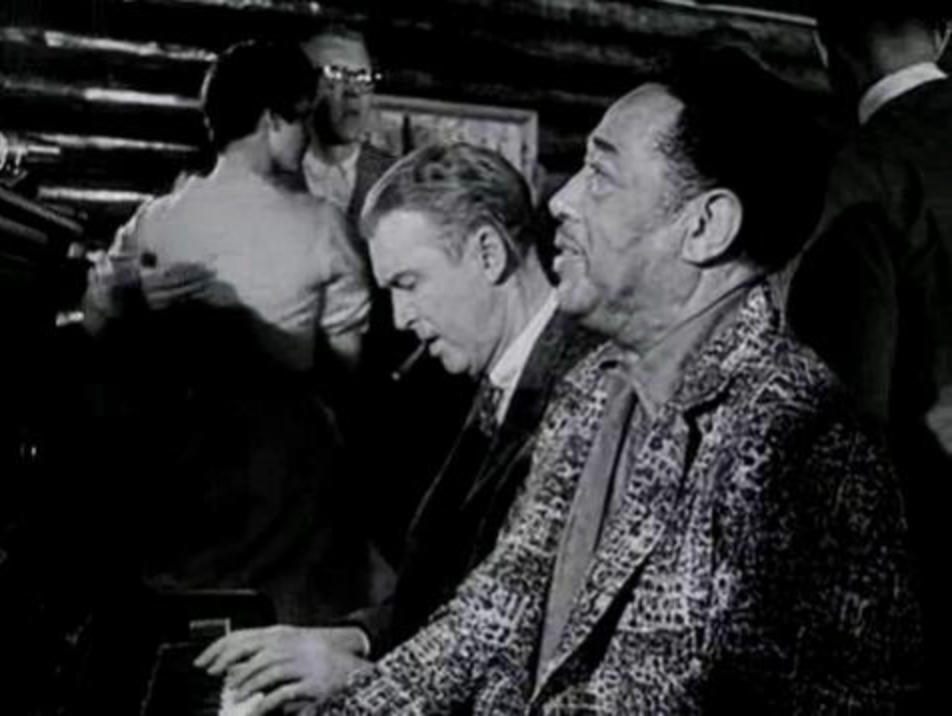
Image Source: Wikimedia Commons
Ellington often aimed to capture the breadth and depth of the African-American experience. He saw jazz as a form of cultural expression and usually integrated gospel, blues, and other forms of black music into his compositions.
Some of his most popular compositions include ”It Don’t Mean A Thing (If It Ain’t Got That Swing),” “Mood Indigo,” “Satin Doll,” and “In A Mellow Tone.“
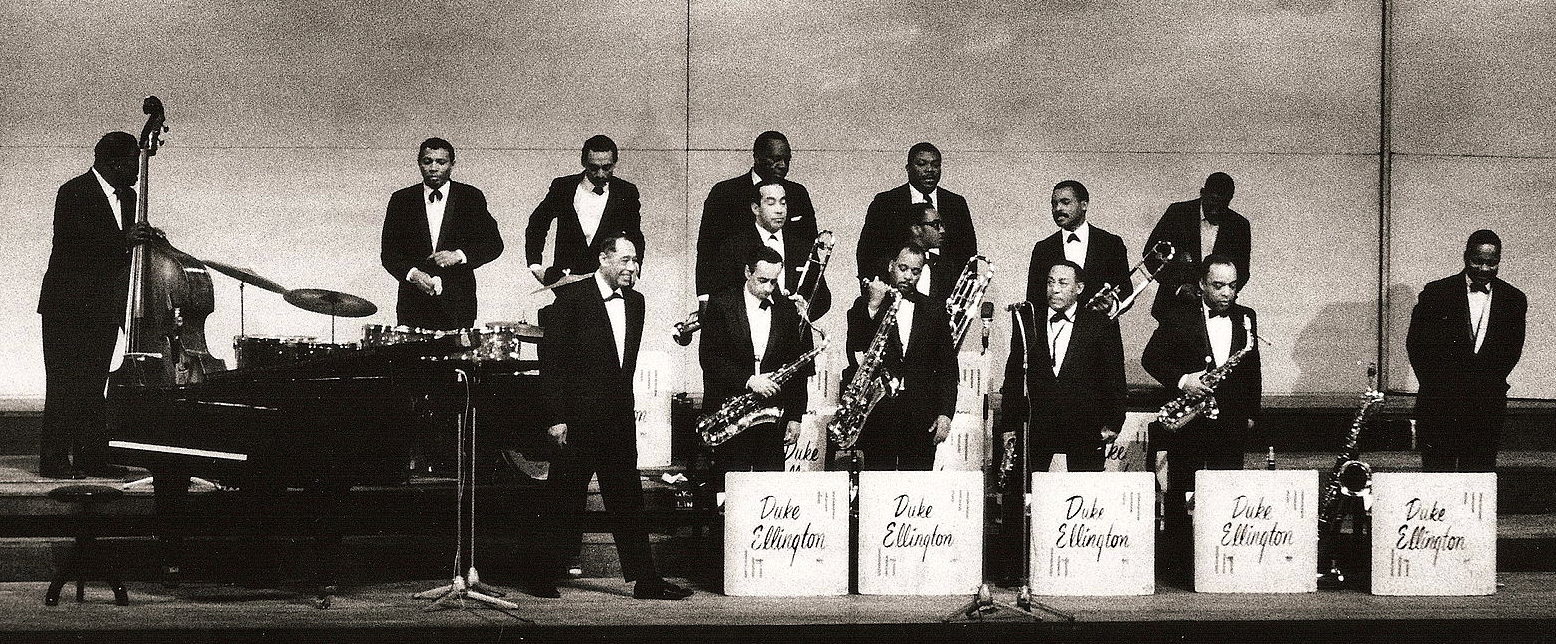
Image Source: Wikimedia Commons
See Why Duke Ellington is Considered One of the Greatest Jazz Musicians of All Time
Here is a live concert performance of Duke Ellington and his Orchestra from 1958:
3. Charlie Parker
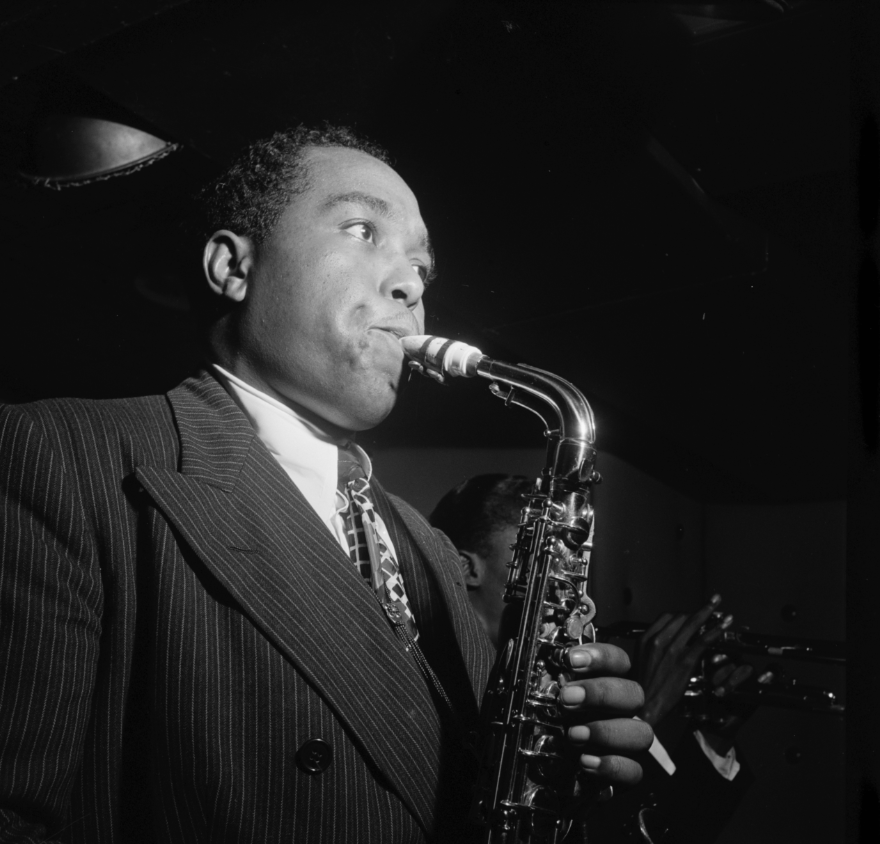
Image Source: Wikipedia
Despite a short music career, Charlie Parker left an unforgettable mark on the jazz scene. This jazz saxophonist redefined jazz improvisation and was partly responsible for a whole new jazz genre—Bebop.
Charlie Parker was a leading figure in the development of bebop, a jazz style characterized by fast tempos, virtuosic technique, and advanced harmonies. You can’t describe the bebop era without mentioning Charlie Parker.
Parker’s unparalleled skill on the alto saxophone was ahead of its time, with lightning-fast phrasing and intricate melodic lines.
Charlie Parker appeared on some of the most influential recordings in jazz history alongside other titans of the jazz scene, like Dizzy Gillespie, Thelonious Monk, Max Roach and other famous jazz musicians. Often referred to as “Yardbird” or “Bird,” Charlie Parker picked up this name when he was coming up in Kansas City, Missouri.
According to PBS, Charlie Parker was in a car that unfortunately hit a chicken that wandered onto the road. At Charlie Parker’s insistence, the driver doubled back, and they picked up the chicken or “yardbird,” so they could eat it that night.
Ever since Charlie Parker was known as “Bird.”
Check out some of his influential tunes, such as “Ornithology,” “Anthropology,” and “Confirmation,” which are considered foundational jazz standards.
Even after his untimely death at 34 and relatively short music career, Parker’s influence on jazz music persisted. Musicians across genres have cited Parker as a significant inspiration. His improvisational style has inspired or influenced every single jazz musician who came after him.
Listen to Why Charlie Parker is a Jazz Legend
Here is a recording of select jam sessions recorded at the William Henry Building in New York City around 1950:
4. Dizzy Gillespie
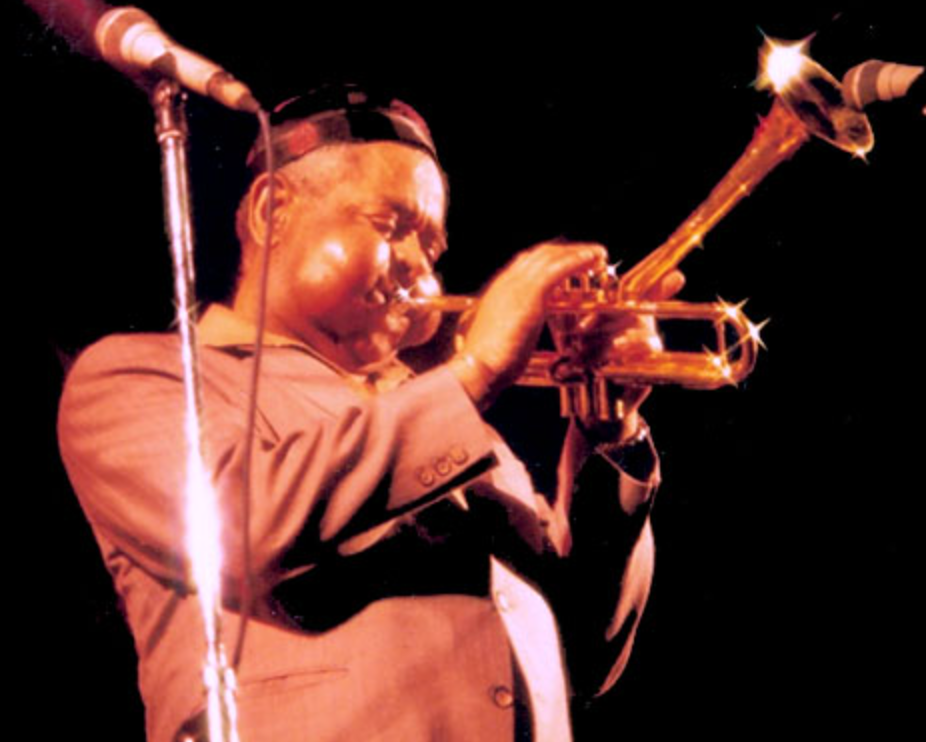
Image Source: Wikimedia Commons
Dizzy Gillespie’s role as a transformative force in jazz cannot be overstated. His commitment to musical innovation and showmanship has left an enduring legacy on jazz.
Like Charlie Parker, Dizzy Gillespie pioneered the bebop movement. This jazz style, which emphasizes individual identity through improvisation, breathed new life into jazz music after the swing era.
Known for his puffed cheeks and uniquely bent trumpet bell, Gillespie’s virtuosic technique, combined with his complex and melodic improvisations, set him apart as one of the best jazz musicians of his era.
Beyond his playing, Gillespie was a prolific composer. Tracks like “A Night in Tunisia,” “Manteca,” and “Salt Peanuts” have become jazz standards, celebrated and played by generations of musicians.
Gillespie was also instrumental in introducing Afro-Cuban and Caribbean elements to jazz, seamlessly merging them and crafting what would become Latin jazz or Afro-Cuban jazz. His collaborations with percussionist Chano Pozo were particularly influential in this fusion.
Throughout his career, Gillespie was known for nurturing young talents, including saxophonist John Coltrane and trumpeter Lee Morgan. He was committed to educating the next generation, ensuring the continued vitality of jazz.
Dizzy was more than just a musician on the bandstand—he was an entertainer. His humor, wit, and vibrant personality made him a beloved figure in and out of the jazz community.
Here’s Why Dizzie Gillespie is One of the Best Jazz Artists of All Time
This clip from The Tonight Show sums up why Dizzy was such a jazz powerhouse and one of the most famous jazz musicians ever. Here, he leads the Tonight Show Band in a performance from 1977 and works the crowd like the true entertainer he was:
5. Miles Davis
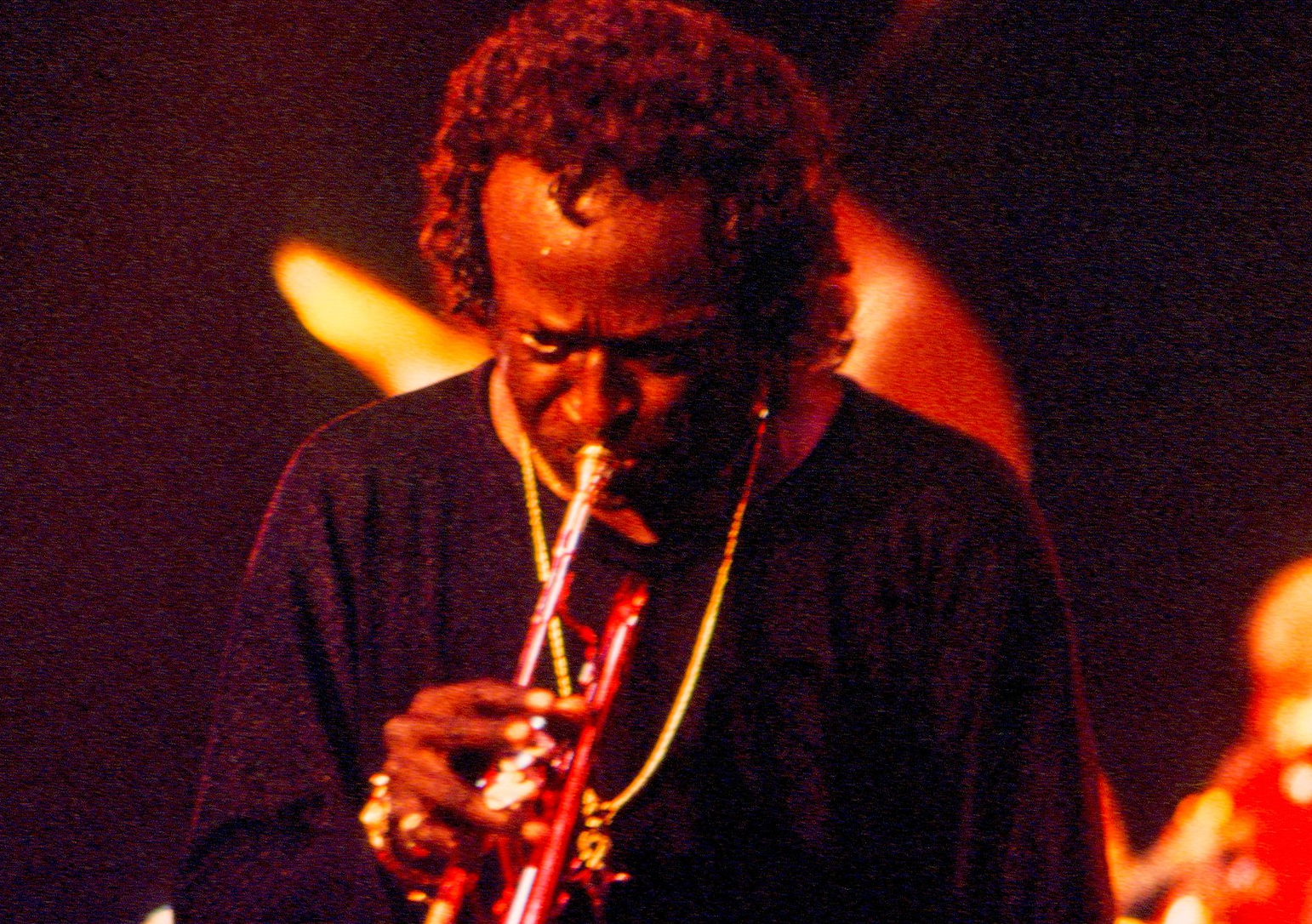
Image Source: Wikimedia Commons
Few jazz musicians have broken into the mainstream like Miles Davis. There may be some argument about who should or shouldn’t be on this list, but Miles Davis, one of the best jazz musicians of all time, inarguably belongs here.
As a jazz musician, Miles Davis remains a symbol of innovation. He constantly reinvented himself and refused to be defined by any single era or jazz genre. As a band leader, Miles Davis is responsible for discovering and nurturing young jazz talent throughout his career.
Throughout his long career as a jazz artist, Miles was known for being at the forefront of multiple jazz movements, from bebop to fusion. His uncanny ability to reinvent himself musically is unmatched.
In the late 1940s and early 1950s, Davis contributed significantly to the birth of the cool jazz movement, offering a more relaxed and intricate alternative to the fiery bebop of the era. His muted trumpet sound – subdued yet piercingly emotive – is instantly recognizable and has influenced countless trumpet players.
With Kind of Blue, Miles Davis, jazz pianist Bill Evans, and others explored modal jazz, leading to the most iconic and best-selling jazz album ever.
In the late 60s and 70s, Davis delved into fusion with albums like Bitches Brew and In a Silent Way, melding jazz with rock, funk, and global rhythms.
Davis had an eye for young talent. Through the many iterations of his band, the Miles Davis Quintet/Sextet, Davis played with many of the best jazz musicians of all time early in their careers, such as John Coltrane, Herbie Hancock, Wayne Shorter, and Chick Corea.
In his later years, Miles Davis explored collaborations across musical genres, delving into pop, R&B, and hip-hop influences. He almost made an album with rock guitarist Jimi Hendrix, but Jimmy passed away before they could record it.
Check Out Why Miles Davis is One of the Top Jazz Artists of All Time
Here, Miles Davis leads Tony Williams, Ron Carter, Herbie Hancock, and Wayne Shorter (all jazz legends in their own right) in a live performance from 1967. It perfectly sums up why Miles Davis is a jazz icon:
6. John Coltrane
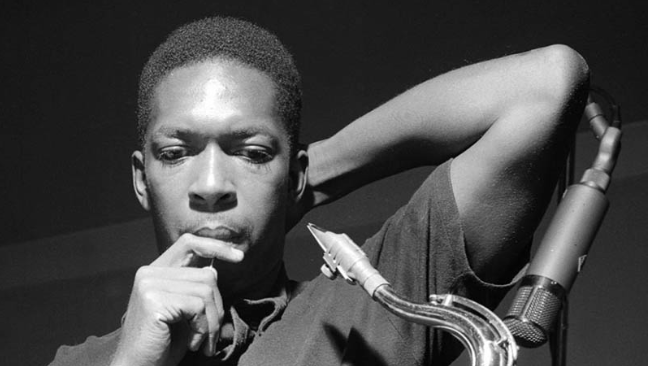
Image Source: North Carolina Music Educators Association
John Coltrane is one of the most sonically recognizable jazz artists of all time.
A true jazz musician among many great jazz musicians on this list, his relentless pursuit of musical and spiritual depth makes him an enduring and revered jazz artist among fellow jazz musicians and regular listeners.
From bebop to avant-garde, John Coltrane constantly evolved as a jazz musician. He relentlessly pursued his artistic identity, moving through different phases of musical exploration in a relatively short career that started in the years after World War II and lasted into the 1960s.
Coltrane’s innovative approach to the saxophone, with his blistering speed, complex patterns, and “sheets of sound,” makes him a contender for the most influential jazz saxophonist in jazz history.
John Coltrane’s music often feels like a quest for spiritual transcendence, and this is due to Coltrane’s strong sense of spirituality. Albums like “A Love Supreme” are not just jazz recordings but profound spiritual statements, reflecting his deep belief in the power of music to connect with the divine.
His unique approach to chord progressions, often dubbed Giant Steps or Coltrane Changes, became a new challenge and standard for aspiring jazz musicians.
Whether playing alongside Miles Davis in the Miles Davis Quintet, Thelonious Monk, or leading his own classic quartet with McCoy Tyner, Jimmy Garrison, and Elvin Jones, Coltrane was part of some of the most iconic groups and recordings in jazz.
Whether in a group or as a solo artist, John Coltrane’s contributions to jazz music make him one of the most famous jazz musicians of the genre.
Though he passed away at 40, John Coltrane’s impact on jazz music is monumental. His profound mix of spirituality, technical mastery, and explorative creativity continues to inspire countless musicians across genres.
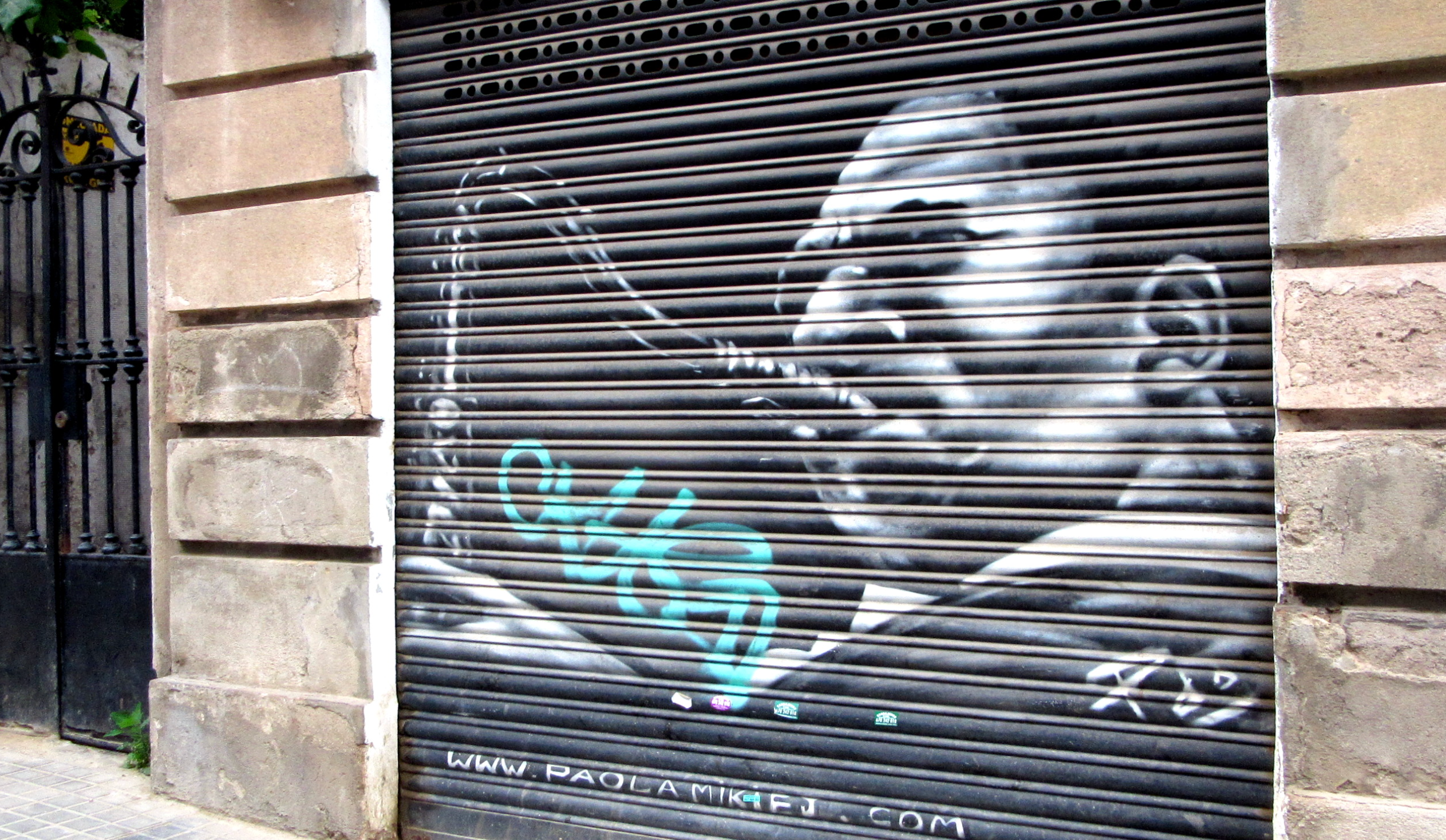
Image Source: Wikimedia Commons
Here’s Why John Coltrane is One of the Most Famous Jazz Musicians of All Time
Check out this live performance of the John Coltrane Quartet (Jimmy Garrison on bass, McCoy Tyner on piano, and Elvin Jones on drums—even more jazz legends):
7. Ornette Coleman
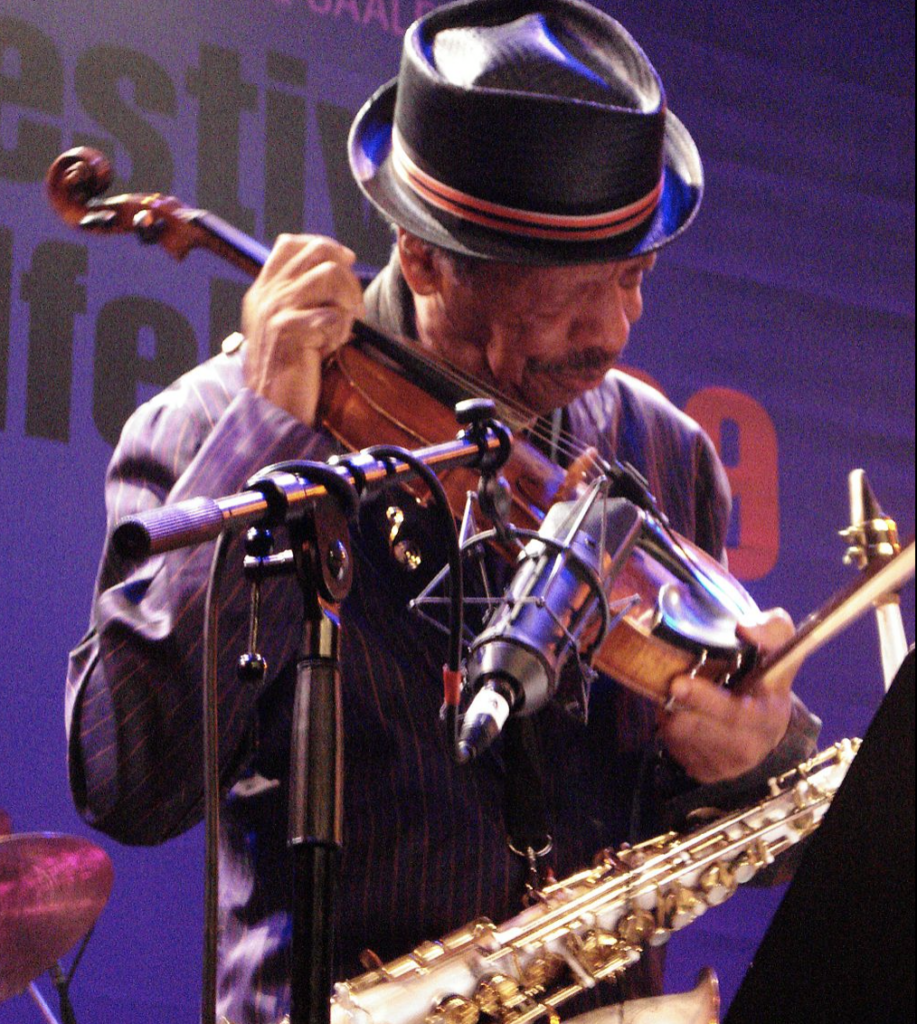
Image Source: Wikimedia Commons
Ornette Coleman’s fearless exploration into uncharted musical territories made him one of jazz’s most innovative and controversial figures. He expanded the boundaries of what was musically possible, inspiring future generations to challenge conventions and find their unique voice.
Ornette Coleman’s groundbreaking work in the late 1950s and early 1960s catalyzed the Free Jazz movement. His revolutionary ideas about structure and harmony shattered conventions of what jazz could be and paved the way for a new era of improvisational freedom.
Ornette Coleman’s “harmolodic” concept blurred the lines between melody, harmony, and rhythm, suggesting they could operate interchangeably. This theory profoundly influenced how musicians approached improvisation and composition.
His 1959 album The Shape of Jazz to Come was aptly named, foreseeing the future trajectory of jazz. Albums like Free Jazz: A Collective Improvisation took ensemble improvisation to new heights, challenging musicians and listeners.
Ornette Coleman’s alto sax tone was distinctively raw and passionate. His fierce and unorthodox approach to the alto saxophone was immediately recognizable.
He was never content with staying within the boundaries of one genre. Over the years, he collaborated with rock icons, classical music orchestras, and North African musicians, always searching for new musical relationships.
Coleman often faced criticism and skepticism from audiences and fellow musicians but remained undeterred in his musical vision. His commitment to his art form and willingness to defy tradition made him an iconic figure of artistic integrity.
Check Out Why Ornette Coleman is One of the Most Famous Jazz Musicians Ever
Here is the Ornette Coleman Sextet playing in Germany in 1978. It is an excellent example of the Free Jazz Movement in action. Watch him navigate uncharted musical territories:
8. Mary Lou Williams
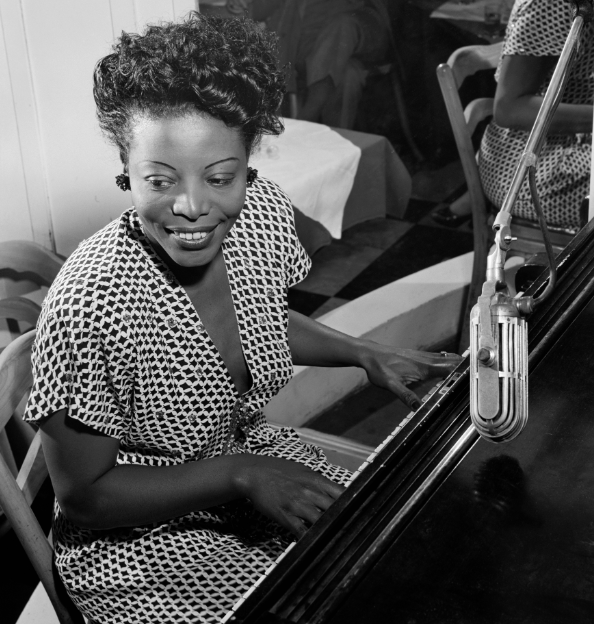
Image Source: National Women’s History Museum
Mary Lou Williams, or “The Lady Who Swings the Band,” remains an emblematic figure in jazz music. Her lifelong contributions to the genre as a jazz pianist, singer, and composer, combined with her role as a trailblazer for female musicians, ensure her place as one of the great jazz artists of the 20th century.
From blues to classical music, swing, bebop, and sacred jazz, Mary Lou Williams could adapt and contribute meaningfully to various styles of music. Her compositions and arrangements were sought after by leading bandleaders, solidifying her place as a key architect in the development of jazz.
In an era dominated by male musicians, Williams stood out as a talented jazz pianist and a formidable composer and arranger. Her presence paved the way for future female jazz artists, proving that gender was no barrier to genius.
Coming out of the Swing Era, Williams was a central figure in the formation of bebop. She mentored and collaborated with emerging icons like Thelonious Monk, Bud Powell, Dizzy Gillespie, and other famous jazz musicians. Her apartment in New York became a hub for these artists to workshop their revolutionary ideas.
She was known for contributing to jazz education and helped further the jazz’s cause.
In the 1950s, Williams experienced a spiritual reawakening, which led her to fuse jazz with liturgical themes. Works like Mary Lou’s Mass showcased her innovative approach to sacred jazz, exploring the secular and divine boundaries.
Later in life, Williams focused on educating the next generation of jazz musicians. Her dedication to preservation and jazz education led to the establishment of the Mary Lou Williams Foundation, ensuring future artists had access to resources and mentorship.
Hear Why Mary Lou Williams is One of the Best Jazz Pianists of All Time
Check out Mary Lou Williams tearing it up in Montreux in 1978:
9. Thelonious Monk
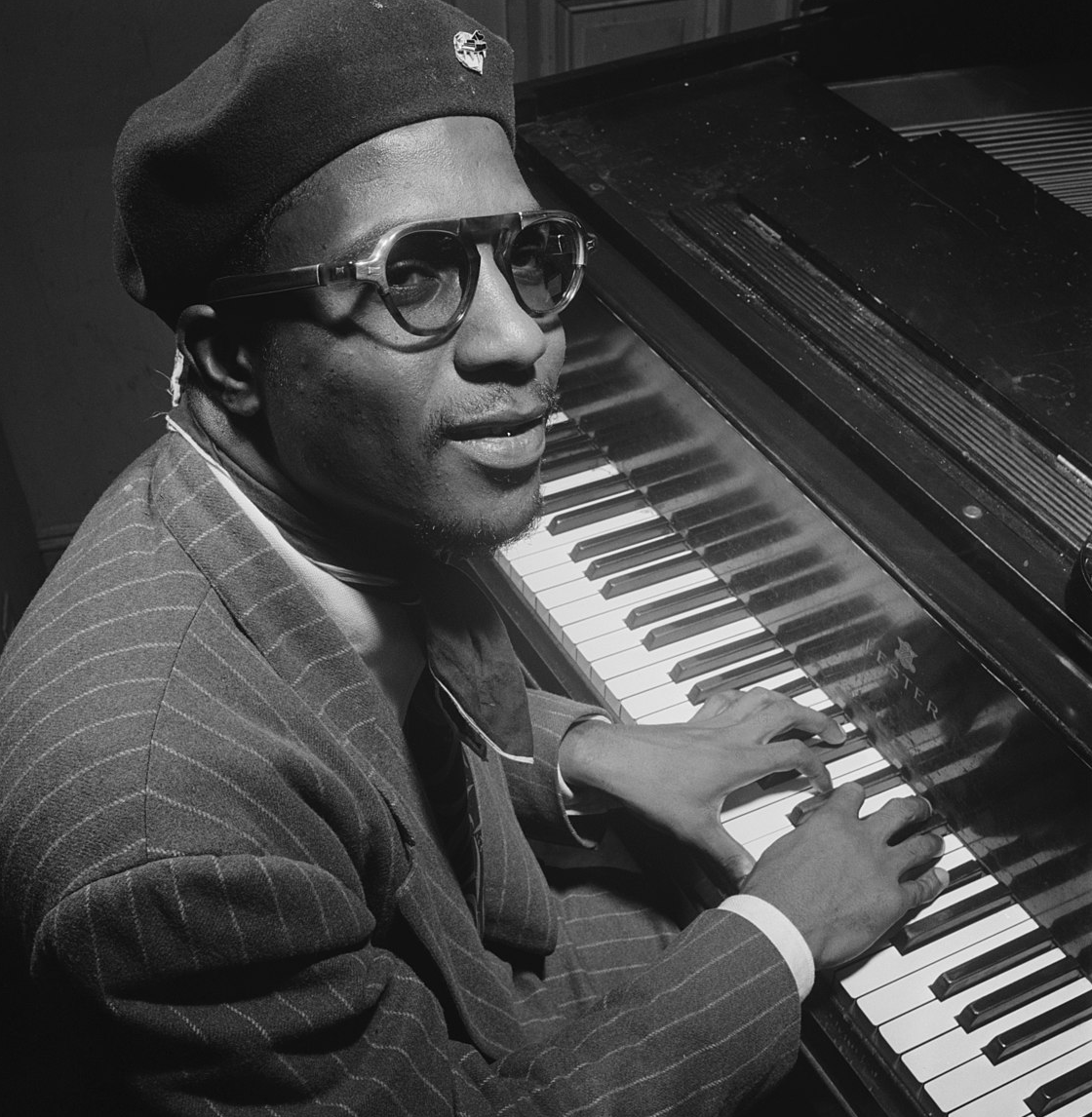
Image Source: Wikimedia Commons
Thelonious Monk’s unique piano style and unmistakable approach to jazz make him one of the genre’s most profound contributors. His musical contributions to jazz and unique musical personality make him one of the greatest jazz musicians of all time.
Monk’s compositions are cornerstones of jazz repertoire. Tunes like ”Round Midnight,” “Blue Monk,” “Straight, No Chaser,” and “Well, You Needn’t” are jazz staples that have been revisited and reinterpreted by countless musicians over the years.
Monk played piano in an extremely unique way that would leave a mark on jazz rhythm and improvisation. He incorporated a highly percussive attack with unexpected pauses, dissonant harmonies, and angular melodies.
His improvisational approach, marked by its idiosyncratic rhythm and inventive use of space, was unlike any of his contemporaries.
Despite his reputation for being enigmatic, Monk played a significant role in mentoring younger musicians. Notably, he had a considerable influence on saxophonist John Coltrane during their collaborations in the late 1950s.
Their time together resulted in some legendary recordings and was pivotal in Coltrane’s artistic development.
Monk was a music non-conformist. Few jazz musicians can say that their voice is uniquely theirs.
In an era of rapid innovation in jazz, he remained true to his voice. He resisted commercial pressures and never diluted his sound to fit into more mainstream or popular expectations of jazz—and jazz musicians love him for it.
Hear Why Thelonius Monk is One of the Greatest Jazz Pianists To Ever Play
Check out this solo performance of Thelonius Monk in 1969:
If you want to learn more about great jazz pianists, check out our article on the 50 best jazz pianists of all time.
10. Billie Holiday
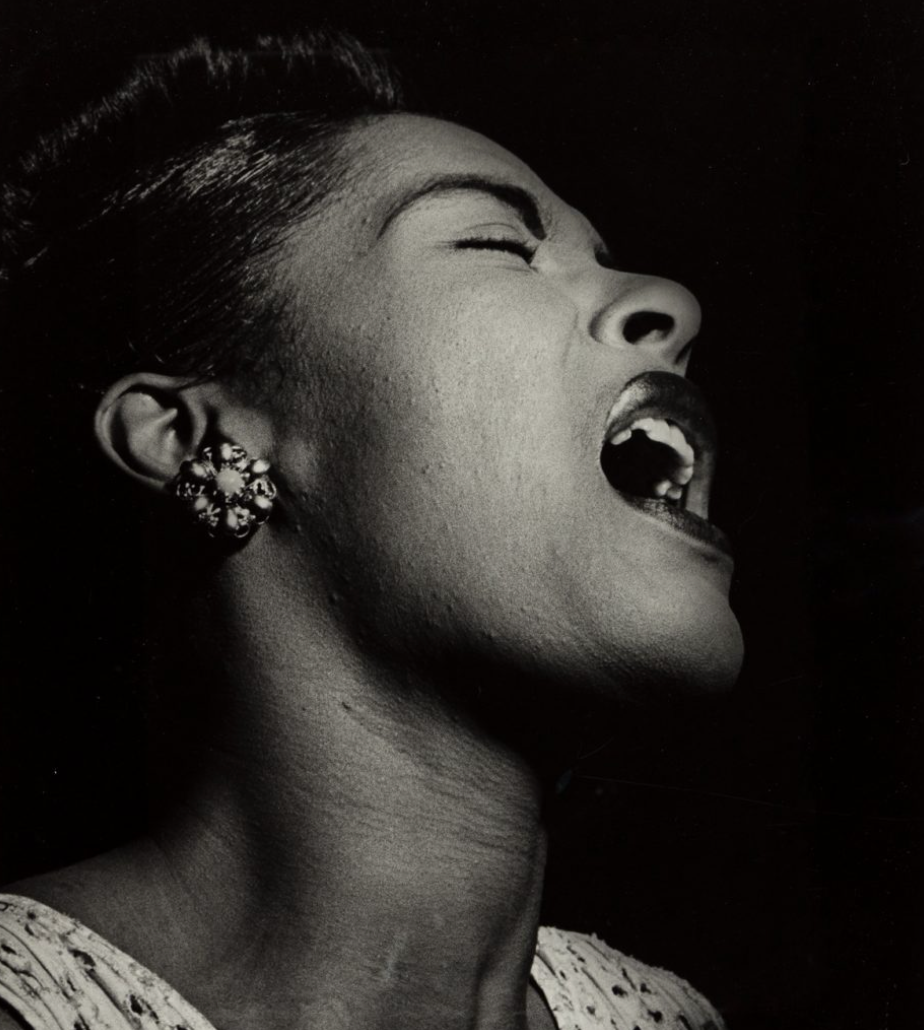
Image Source: Wikimedia Commons
Billie Holiday, known as “Lady Day,” remains one of the most influential jazz singers in jazz. Her influence reaches far beyond jazz, with many pop vocalists citing her as a major influence.
With its unique timbre and phrasing, Billie’s voice distinctively conveyed emotions. Whether singing energetic, uptempo tunes or melancholic ballads, she could evoke deep feelings in her listeners, making them feel every word.
Jazz instrumentalists heavily influenced Holiday’s approach to timing and phrasing. She treated her voice like an instrument, weaving through a song like a saxophone or a trumpet, making her a true jazz singer.
Beyond her artistry, Holiday was unafraid to tackle challenging subjects. Her recording of “Strange Fruit,” a gut-wrenching song about lynching in the American South, remains one of the most harrowing and politically charged songs in the history of American music.
Holiday worked with some of the best jazz musicians of her era, including Lester Young (who gave her the name Lady Day), Teddy Wilson, and Count Basie. These collaborations led to many timeless jazz classics and showcased her ability to seamlessly blend her voice with instruments.
Billie Holiday is not only one of the most influential jazz singers, but her passionate delivery and unique phrasing have influenced countless musicians across various genres. From R&B and soul singers to rock vocalists, many have cited Billie Holiday as a pivotal influence in their approach to singing.
Hear Why Lady Day is a Jazz Legend and Great American Jazz Singer
Here is a live Billie Holiday performance from 1958:
11. Ella Fitzgerald
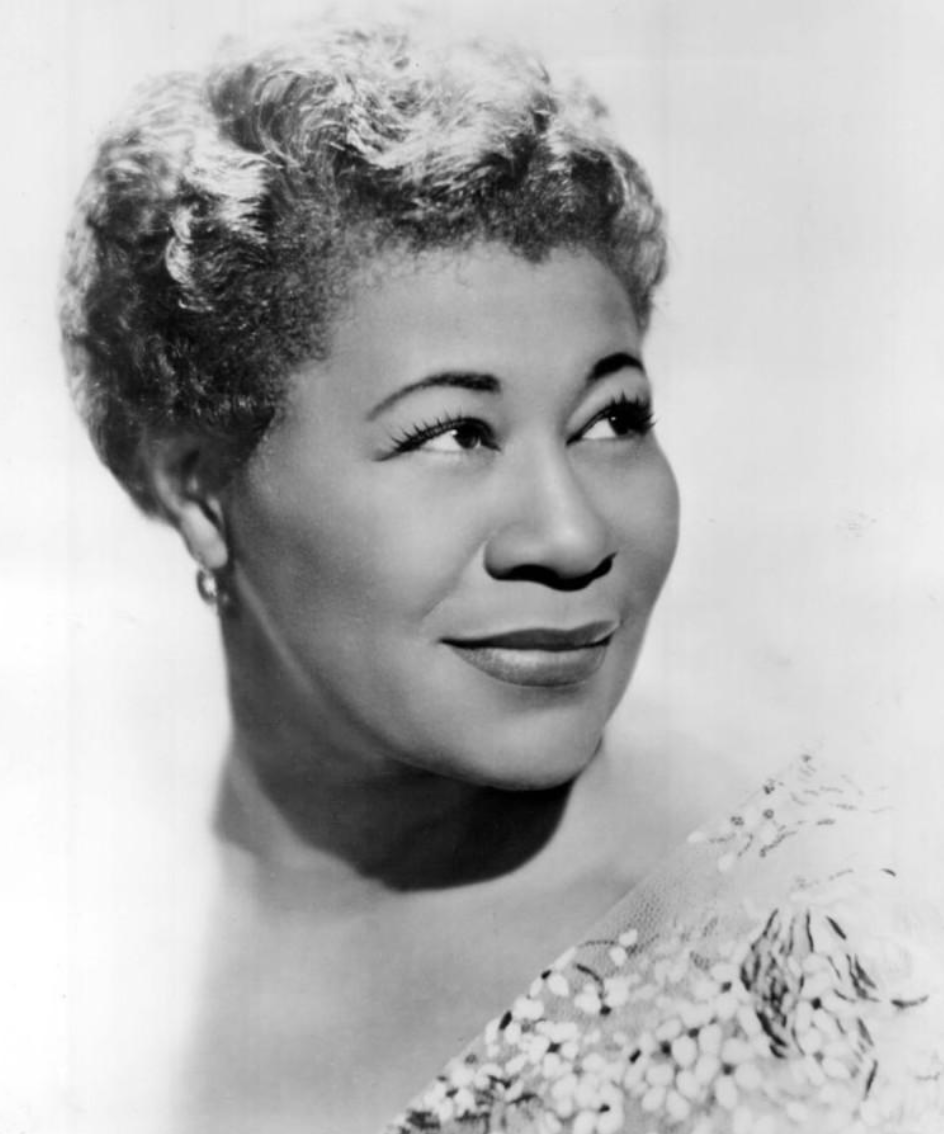
Image Source: Wikimedia Commons
Ella Fitzgerald’s luminous voice and virtuostic technique make her an instantly recognizable voice in the jazz world. Known as the “First Lady of Song,” her contributions to jazz music are vast. For jazz vocalists, she may be the most important jazz musician.
Vocal Virtuosity And Crossover Appeal
Ella’s voice was a marvel of precision, clarity, and warmth. She had an astonishing vocal range and could easily execute complex melodic lines, allowing her to traverse genres, from sultry ballads to intricate bebop tunes.
Though not the first to use scat singing, Ella Fitzgerald put it on the map. Her ability to use her voice as an instrument, improvising with syllables much like a saxophonist or trumpeter, showcased the depth of her musicality and understanding of the jazz idiom.
Ella’s songbook series, where she paid tribute to great American songwriters like Cole Porter, Duke Ellington, and the Gershwins, are considered some of the finest interpretations of the Great American Songbook.
During her long solo career, Fitzgerald worked with many jazz icons, such as Louis Armstrong, Duke Ellington, Oscar Peterson, Nat King Cole, Joe Pass, and other famous jazz musicians.
Though a jazz singer through and through, Ella’s music reached audiences far beyond the jazz world. Ella traveled the world throughout her career, introducing international audiences to her jazz singing. Her tours in Europe, Asia, and Africa played a significant role in globalizing the appeal of jazz.
Hear Why This American Jazz Singer is One of the Greatest Jazz Musicians of All Time
Here is a live performance of Ella Fitzgerald in 1974:
12. Wes Montgomery
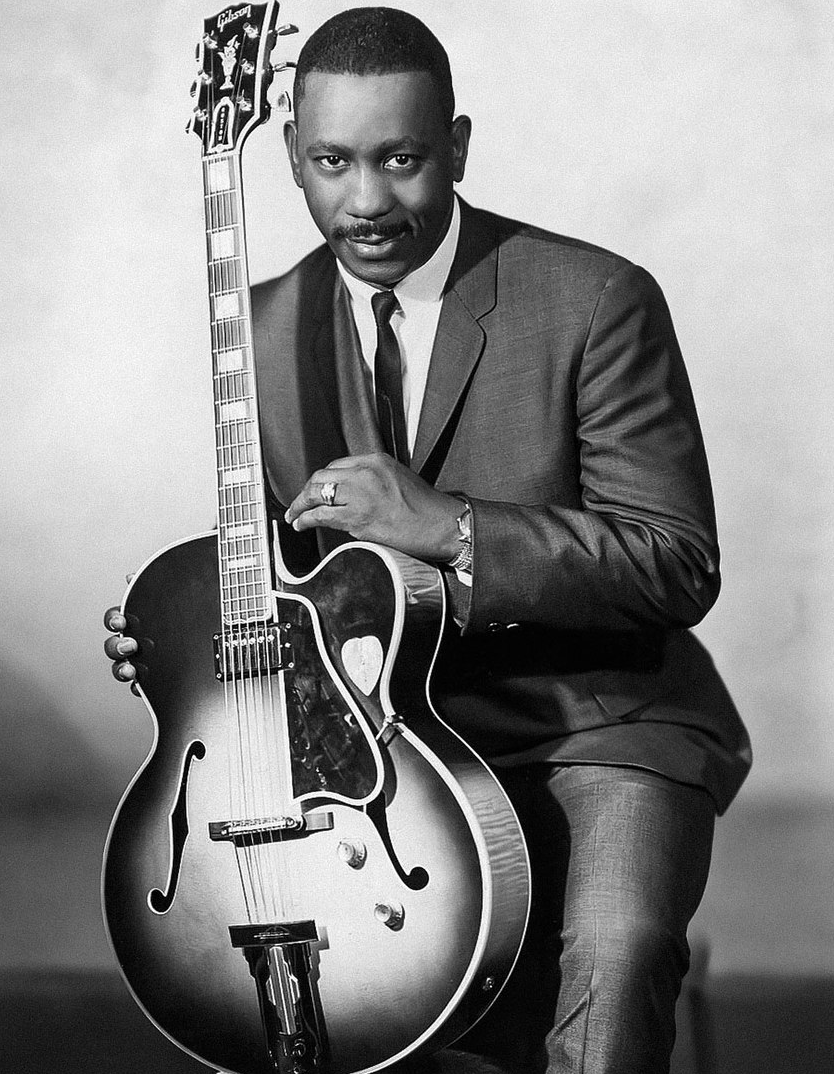
Image Source: Wikimedia Commons
Wes Montgomery’s self-taught style and innovative techniques revolutionized jazz guitar playing. Initially famous for his contributions to the West Coast cool jazz scene, Montgomery’s impact soon transcended jazz music.
His enormous impact on subsequent generations of guitarists and jazz musicians cannot be overstated. Famously, Montgomery played with his thumb rather than a pick, which gave him a distinct, warm sound.
This unique technique allowed him to execute his iconic octave and block chord solos with clarity and mellowness, which were characteristic of his style. Though not the first to use octaves, Montgomery popularized the technique and expanded its role in jazz improvisation.
His solos are instantly recognizable and have become a fundamental model for aspiring jazz guitarists. Famously, he would start with single lines, move to octaves, and then finish his solo with a blistering array of chords. His improvisational style became one of the defacto “jazz guitar” styles.
Albums like The Incredible Jazz Guitar of Wes Montgomery, Full House, and Smokin’ at the Half Note are staples for any jazz fan. They not only highlight Montgomery’s virtuosity but also his ability to navigate both hard-bop and soul jazz.
In the later stages of his career, Montgomery achieved significant commercial success without compromising his artistic integrity. While more pop-oriented, his later recordings brought jazz improvisation to a broader audience and showcased his adaptability.
Virtually every jazz guitarist who followed Montgomery was influenced by him in some way. Later jazz musicians like Pat Metheny, George Benson, and Russell Malone are just a few who have acknowledged his impact on their playing.
Hear Why Wes Montgomery is a Top-Tier Jazz Musician and One of the Greatest Jazz Guitarists of All Time
Check out this famous jazz musician live in 1965:
13. Art Blakey
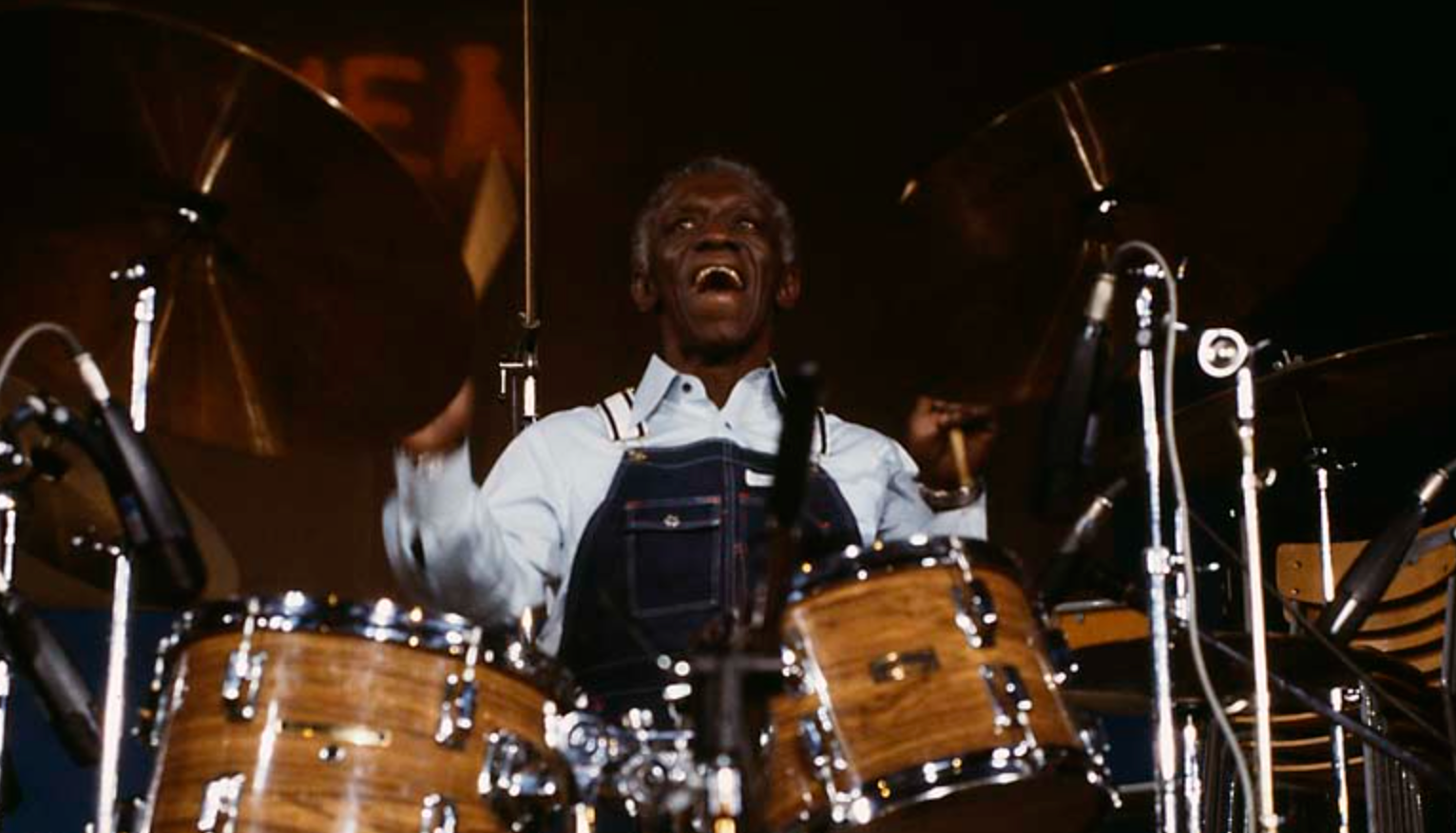
Image Source: Wikimedia Commons
Art Blakey’s legacy in jazz and jazz drumming is monumental. Through his band, The Jazz Messengers, his jazz drumming, and his mentorship of up-and-coming talent, he shaped the direction of modern jazz. That’s why Art Blakey is one of the greatest jazz artists ever.
Art Blakey’s Jazz Messengers: Hard Bop Pioneers
Art Blakey co-founded The Jazz Messengers with Horace Silver in the mid-1950s. Though the members changed, Blakey remained a signature member, leading the group for over thirty years.
Blakey is also famous for identifying and nurturing young jazz talent. Some alumni of The Jazz Messengers included future jazz legends like Lee Morgan, Wayne Shorter, Freddie Hubbard, Keith Jarrett, Wynton Marsalis, and countless other famous jazz musicians.
While bebop was characterized by its fast tempos and complex melodies, hard bop—which Blakey helped pioneer—incorporated influences from R&B, gospel, and blues, making it more soulful, grooving, and accessible to a broader audience.
Albums like Moanin’ exemplify the hard bop style.
Blakey’s discography is extensive. Albums such as A Night at Birdland, Free for All, and Ugetsu are essential for jazz lovers.
Blakey was known for his aggressive, polyrhythmic style of drumming, which featured his signature press rolls and strong swing feel. He no doubt influenced countless drummers who came after him.
Even when many jazz musicians were experimenting with electric instruments and fusion elements, Blakey kept moving forward with the acoustic jazz sound, preferring the traditional essence of acoustic jazz.
Beyond his musical skills, Blakey was known for his charisma and infectious energy. He was a bona fide mentor, teaching young musicians about the ins and outs of the music business and how to be a band leader.
Check Out Why Art Blakey is one of the Best Jazz Musicians of All Time
Check out this Art Blakey drum solo from 1979 to catch a glimpse of why he is considered to be one of the best jazz musicians ever:
14. Chet Baker
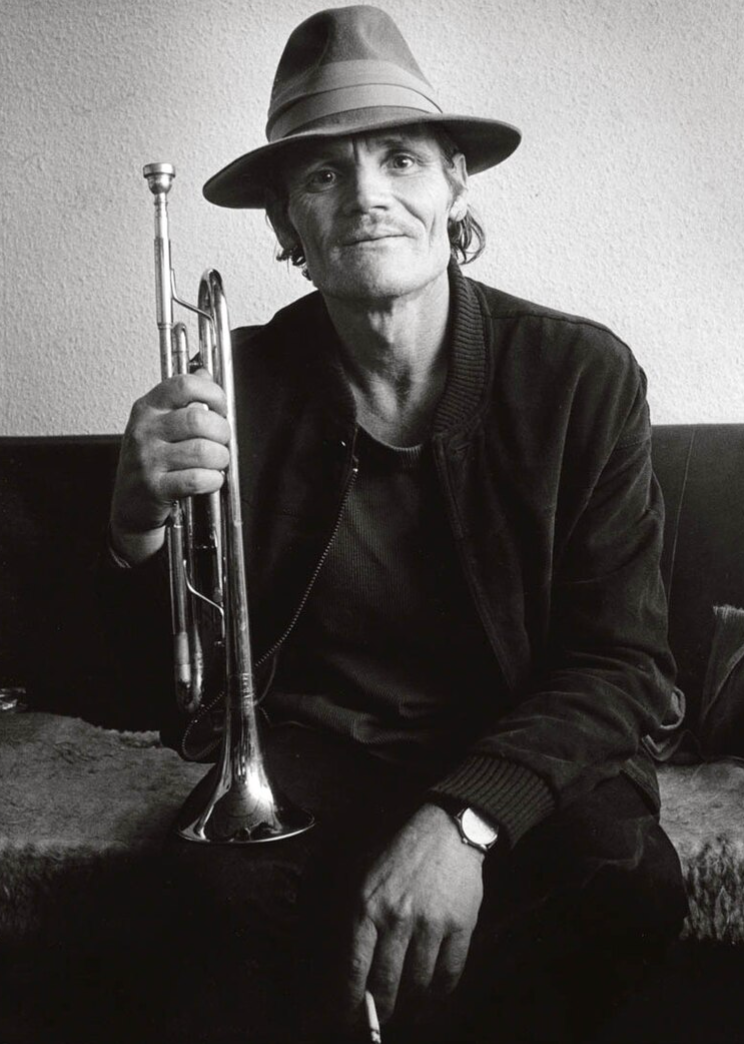
Image Source: Wikimedia Commons
Chet Baker’s mellow trumpet sound and uniquely haunting vocals left an unforgettable mark on jazz music. His ability to touch listeners’ hearts with his voice and his horn, as well as his fascinating and tragic life story, ensure that this jazz performer will endure for generations.
Chet Baker was one of the figureheads of the West Coast cool jazz movement in the 1950s. Baker’s style, characterized by its relaxed tempos and lighter sound, contrasted with the intense bebop of the East Coast. Baker’s soft, lyrical trumpet helped define this genre.
Beyond his trumpet skills, Baker had a unique singing voice—clear, nearly perfect in pitch, and barely any vibrato. His renditions of tunes like ”My Funny Valentine” and “Let’s Get Lost” became iconic and showcased his pure tone.
Early in Baker’s music career, he partnered with saxophonist Gerry Mulligan to create a novel jazz quartet. Their piano-less quartet was groundbreaking and produced music that was both intricate and accessible to a general audience.
Baker’s addiction struggles and tumultuous life added a layer of depth to his music. The raw emotion, sadness, and vulnerability infused his performance with a raw magnetism.
While his career in the U.S. had its ups and downs, Baker found appreciation in Europe. He spent significant time on the continent, especially in Italy, influencing and collaborating with European jazz musicians. Despite his struggles and complicated life, Chet Baker’s music continues to inspire.
Young jazz musicians and singers admire his ability to convey emotion with simplicity and purity. His influence extends beyond jazz into pop, rock, and other genres, where his sense of melody and phrasing is often emulated.
Check Out Why Chet Baker is one of the Best Jazz Musicians of All Time
Here is a live performance of the Chet Baker in 1964. Here, Chet Baker sings and plays the Flugel horn:
15. Sonny Rollins
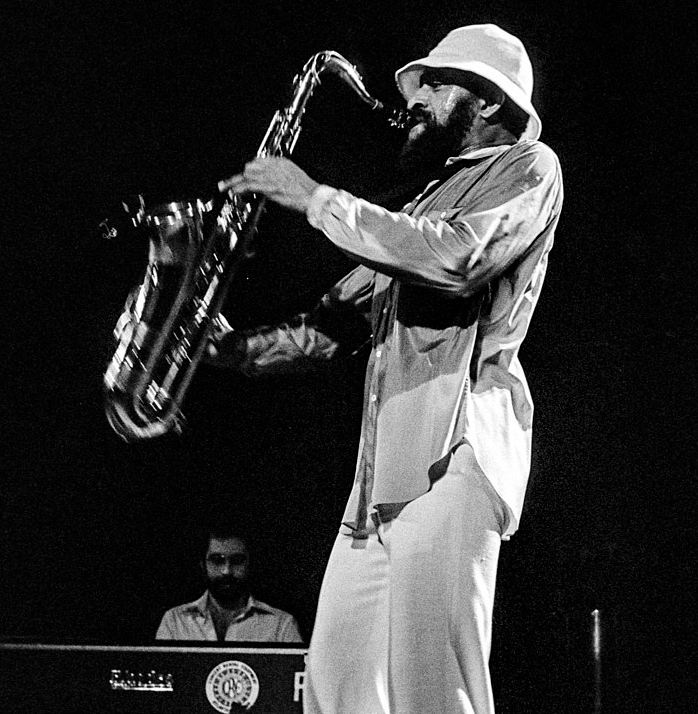
Image Source: Wikimedia Commons
Sonny Rollins’s career spans multiple decades of jazz music history, each marked by groundbreaking work and timeless recordings. His combination of raw energy, quirky individualism, deep intellect, and one-of-a-kind expression has left its mark on jazz.
Rollins is one of the most dominant figures in the long list of accomplished jazz saxophonists. His robust sound, intricate improvisations, and unique melodic ideas have made him a beacon for saxophonists across generations.
Sonny Rollins contributed to numerous iconic jazz recordings, both as a leader and as a sideman. His album Saxophone Colossus, which includes tracks like “St. Thomas” and “Blue 7,” is still considered a high point in jazz recording history.
Rollins began his music career in the bebop era, playing alongside famous jazz musicians like Thelonious Monk and Miles Davis. However, he would not stop there.
Rollins dove headfirst into various styles, including hard bop and avant-garde, and even integrated Caribbean rhythms into his music.
Known for his intense dedication to his craft, Rollins took several hiatuses from public performance to intensely practice and refine his art. One of the most famous was when he practiced on the Williamsburg Bridge in New York so as not to disturb his neighbors.
This period led to an album titled The Bridge.
Rollins is renowned for his live performances, often engaging in lengthy solos showcasing his virtuosity and profound musical ideas. He didn’t need a piano player to outline the changes with his tenor sax masterfully.
Hear Why Sonny Rollins is One of the Most Famous Jazz Musicians to Ever Live
Here is the Sonny Rollins quartet performing in 1980:
Check out our article on 37 famous jazz saxophonists for more great jazz saxophonists like Sonny Rollins.
16. Bill Evans
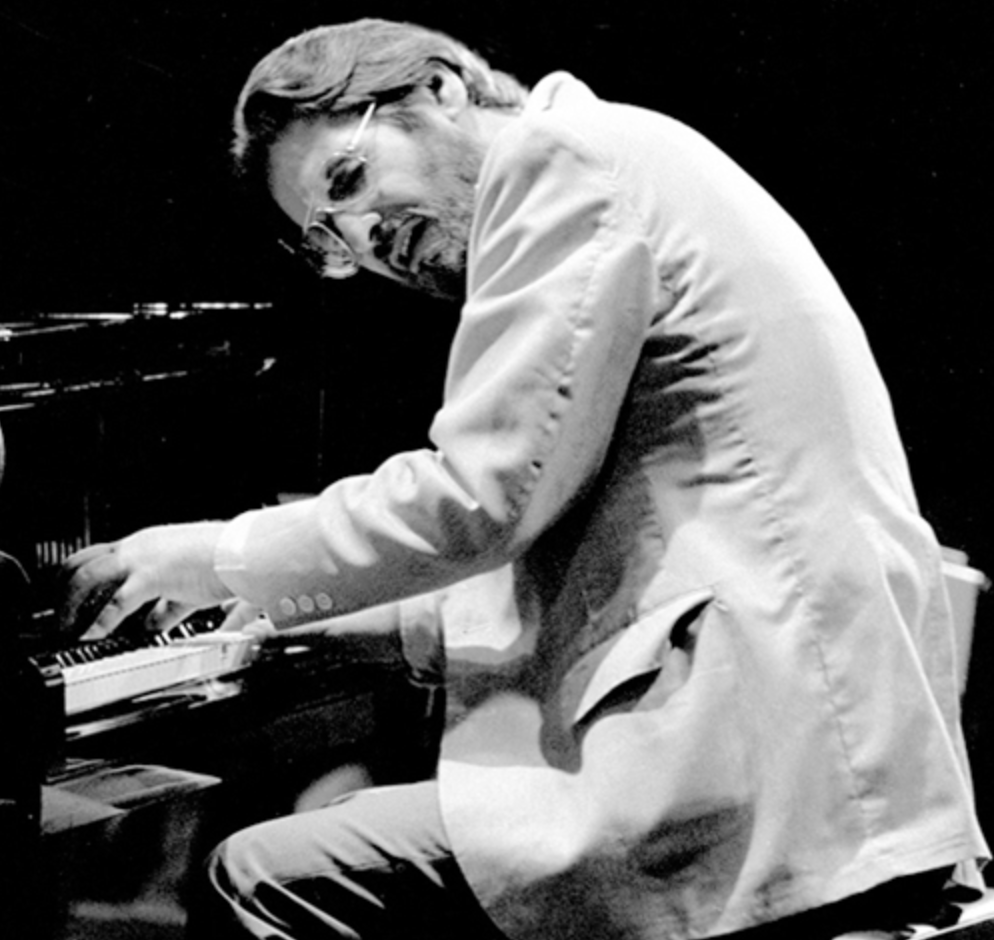
Image Source: Wikimedia Commons
Modern jazz piano owes everything to Bill Evans. Most modern jazz musicians owe a lot to Bill Evans. With his nuanced touch and profound harmonic understanding, Bill Evans stands apart as one of the pillars of jazz.
Often described as one of the most sensitive and introspective pianists in jazz history, Bill Evans brought a unique, poetic touch to the piano. He revolutionized how the instrument was played in a trio setting, emphasizing interaction and harmonic sophistication.
Evans had an intricate understanding of harmony, pushing its boundaries in jazz. This is evident in his harmonically rich reharmonizations of jazz standards and his original compositions. Pieces like “Waltz for Debby,” “Time Remembered,” and “Turn Out the Stars” showcase the ‘Bill Evans’ sound.
With the Bill Evans Trio (especially the line-up featuring Scott LaFaro and Paul Motian), Bill Evans transformed the traditional jazz trio into a highly interactive group where all instruments participated as equals.
Rather than the piano being the primary voice with bass and drums in supporting roles, all three instruments were free to interact and add to the music.
Check out the recordings “Sunday at the Village Vanguard” and “Waltz for Debby.”
Apart from his trio work, Bill Evans collaborated with many jazz greats. His album with saxophonist Cannonball Adderley, Know What I Mean? is a great example.
However, his work with jazz legend and trumpeter Miles Davis on the classic jazz album “Kind of Blue” is perhaps the most celebrated, particularly his contribution to “Blue in Green.”
Bill Evans’ life was filled with personal struggles, including battles with drug addiction. However, his music remained an outlet for deep emotional and intellectual exploration through all his challenges.
Listen To One of the Great Jazz Piano Players of All Time
Here is a live Bill Evans Performance from 1980:
17. Tony Williams
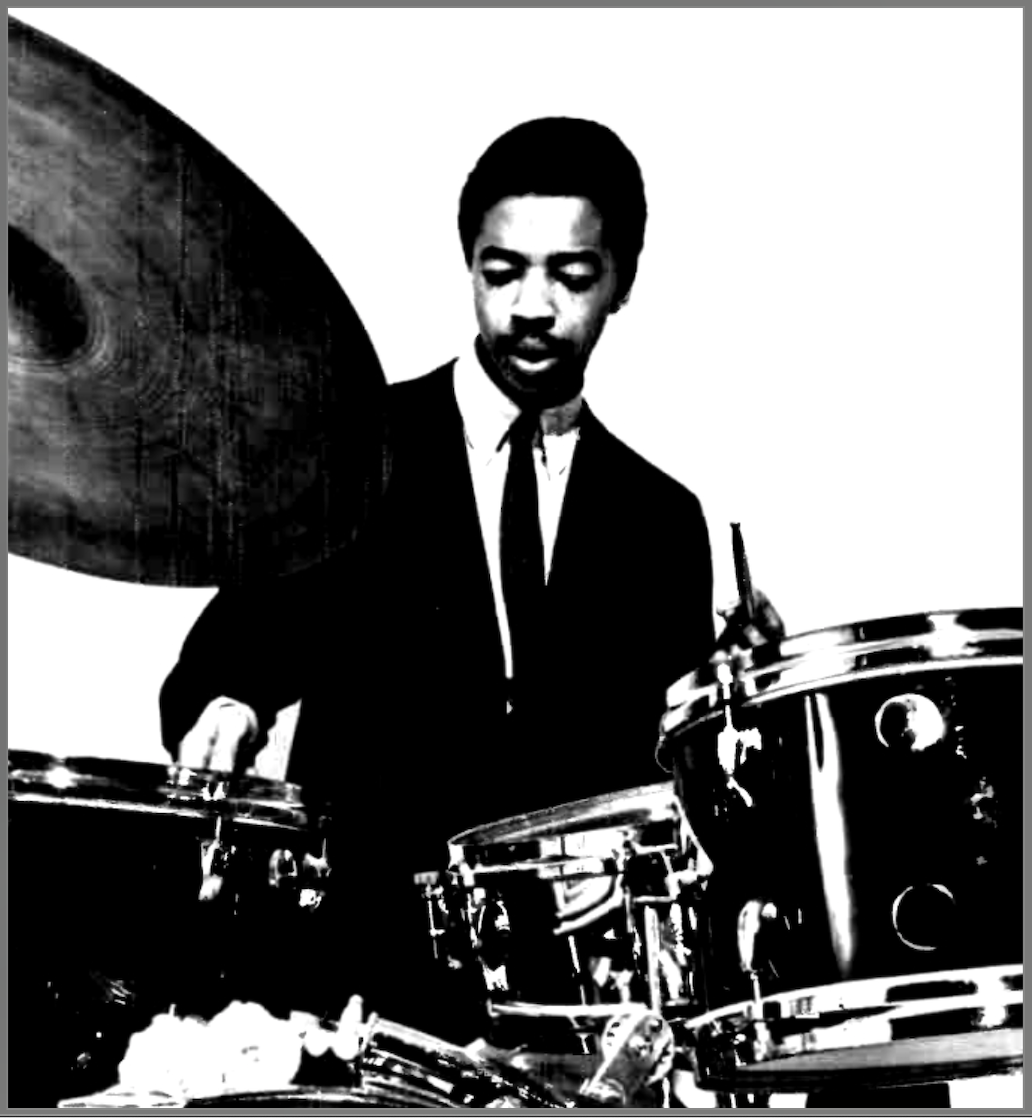
image source: Wikimedia Commons
Tony Williams was born in Chicago, Illinois, on December 12th, 1945. He was considered a child prodigy on the drums, studying under the influential jazz drummer Alan Dawson at age eleven. His professional career began shortly thereafter—at thirteen, he played professionally with Sam Rivers.
A pioneer in modern jazz drumming, Williams joined Miles Davis’ Second Great Quintet at just 17 years old. He contributed to landmark albums such as E.S.P., Miles Smiles, and Nefertiti. He also led the fusion group Tony Williams Lifetime, which blended rock and jazz elements.
Tony Williams played with Miles Davis, Chet Baker, Herbie Hancock, Ron Carter, Wayne Shorter, McCoy Tyner, Sonny Rollins, John McLaughlin, and other famous jazz musicians. He released many albums as a bandleader but appeared on countless other classics as a sideman.
Hear Why Tony Williams is One of the Best Jazz Musicians Ever
Check out this incredible drum solo during a performance by the Tony Williams Quintet in 1989:
18. Dave Brubeck
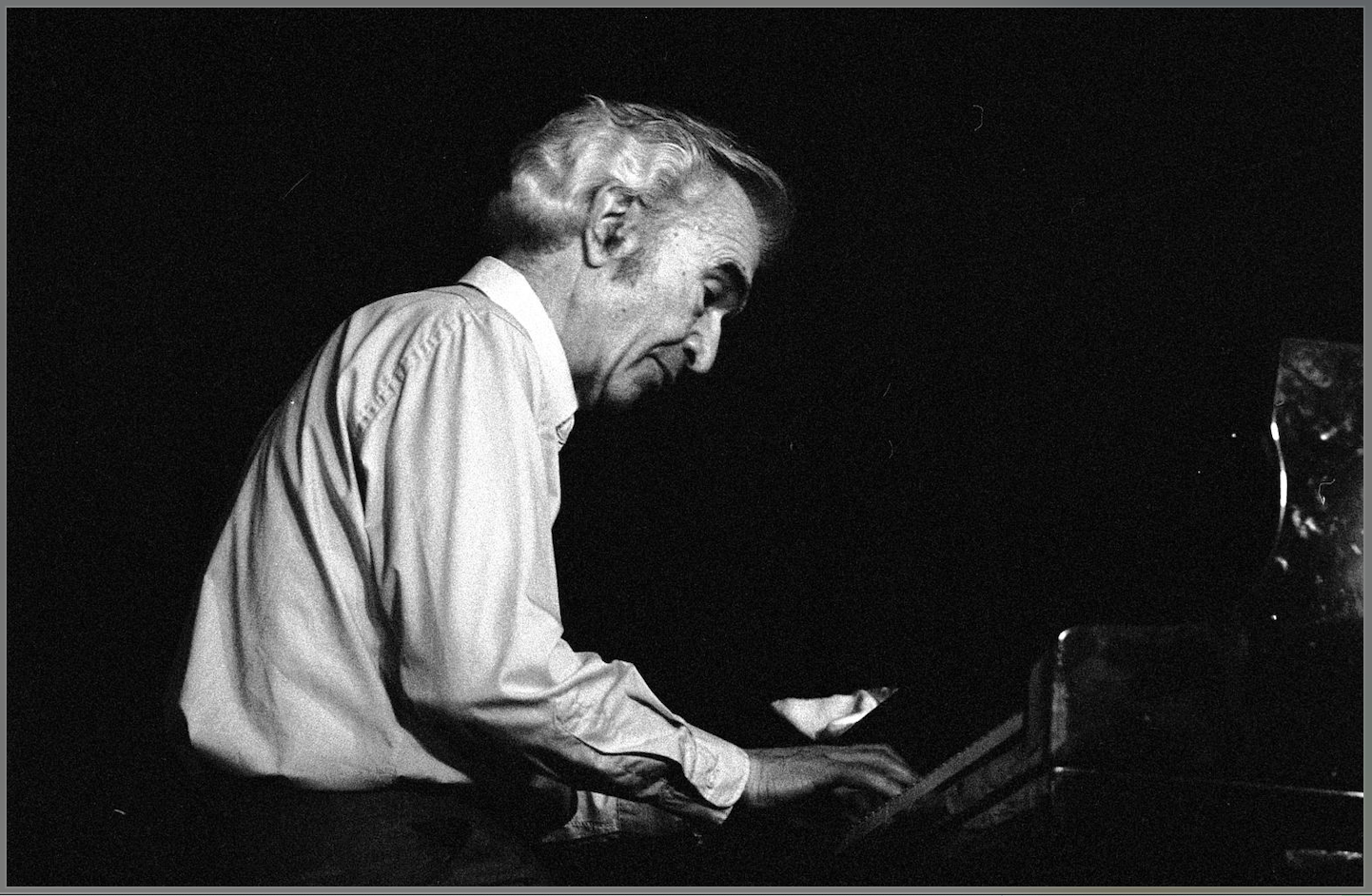
image source: Wikimedia Commons
Dave Brubeck was born in Concord, California, on December 6th, 1920. His father was a rancher, and his mother was a piano teacher, but Brubeck initially decided to become a veterinarian! However, he soon switched to music and studied under composer Darius Milhaud.
After playing a successful set for a Red Cross event, Brubeck served in the military after college but was spared a combat role. While serving in 1944, he formed one of the first racially integrated Army bands and met his lifelong musical partner, Paul Desmond.
He formed the Dave Brubeck Quartet in 1951 and became a pioneering American jazz pianist and composer throughout the 1950s and 1960s, especially with the Dave Brubeck Quartet.
Dave Brubeck’s music is known for its innovative use of time signatures. Brubeck’s Time Out album (1959) included “Take Five,” one of jazz’s most famous tracks (though Desmond wrote this).
Most importantly, his music brought jazz to a broader audience and bridged jazz with classical forms. Dave Brubeck and his recordings are responsible for shepherding in a new generation of jazz fans who might not have given jazz a chance otherwise.
Listen To Why Dave Brubeck is One of the Most Famous Jazz Musicians of All Time
Here is the Dave Brubeck Quartet live in Belgium in 1964:
19. Stan Getz
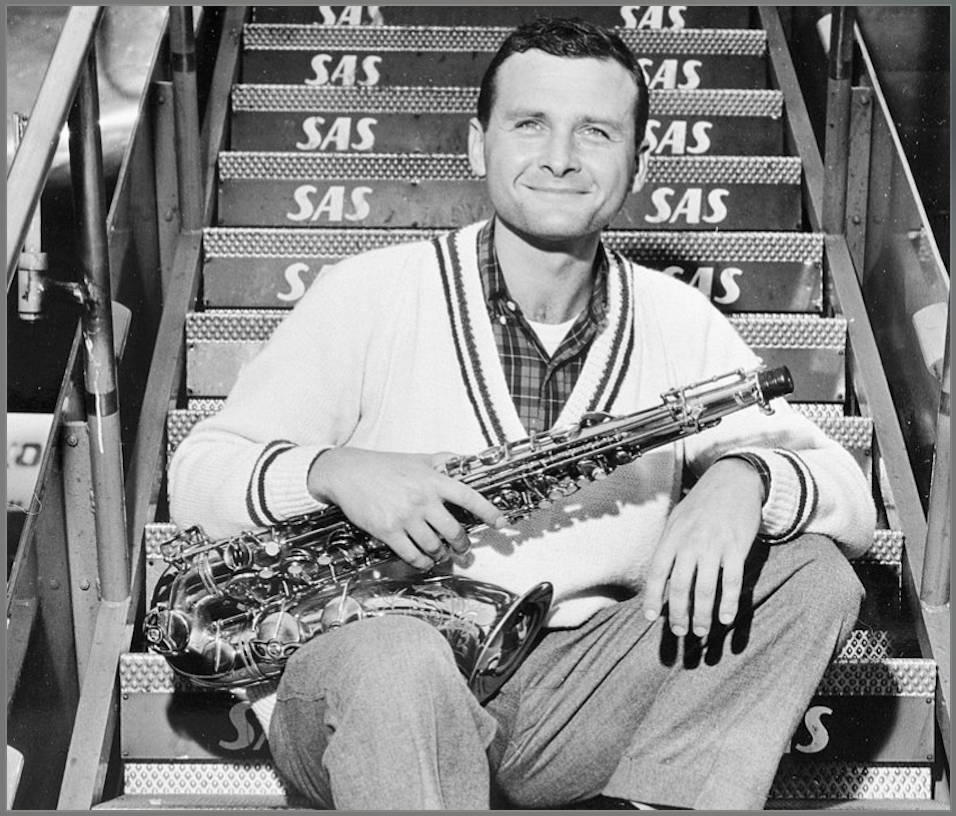
Stan Getz was born in Philadelphia, Pennsylvania, on February 2nd, 1927, but his family relocated to New York City to find better employment opportunities during the Great Depression soon after.
Getz was a gifted saxophonist and musician from a very young age, though he officially only had six months of music lessons and never studied music theory or harmony.
By age 16, he had played with Nat King Cole and Jack Teagarden. Before launching a successful solo career, he played with big bands, including Jimmy Dorsey, Benny Goodman, and Woody Herman.
He soon found prominence and played with other jazz legends like Horace Silver, Al Haig, Duke Jordan, Roy Haynes, Max Roach, and guitarists Jimmy Raney and Johnny Smith. However, he is most famous for his warm tone inspired by Lester Young and the Bossa Nova invasion in the 1960s!
Getz popularized bossa nova in the U.S. through collaborations with Antônio Carlos Jobim and João Gilberto, notably on Getz/Gilberto (1964), which included the hit “The Girl from Ipanema.”
Hear Why Stan Getz is One of the Most Famous Jazz Musicians Ever
Check out Stan Getz playing the Bossa Nova hit “Wave” in the 1970s.
20. Bud Powell
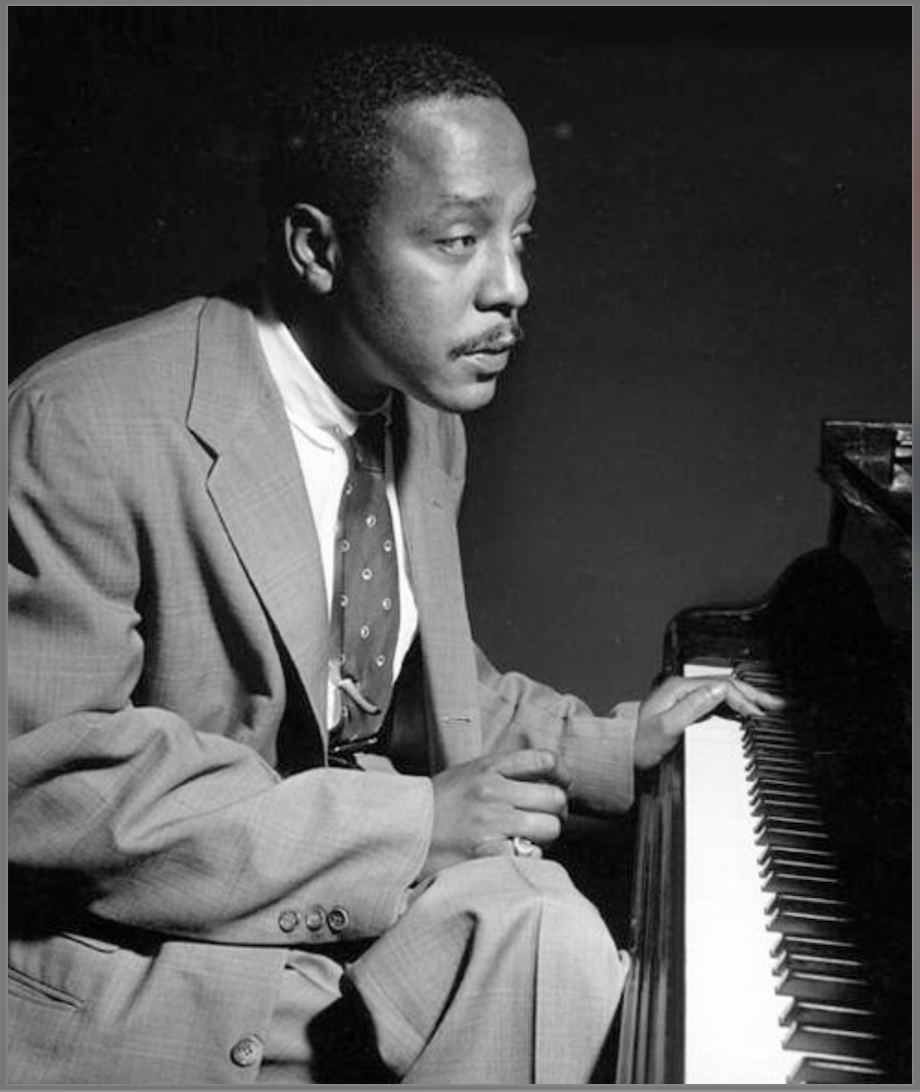
image source: budpowelljazz.com
Bud Powell was born in Harlem, New York, on September 27th, 1924, during the Harlem Renaissance. Powell was a piano prodigy from a young age and could be found playing in Harlem jazz clubs while only a teenager!
Influenced by Thelonious Monk and Art Tatum, Powell became a central bebop figure in his day. His virtuosic, horn-like phrasing and complex improvisations revolutionized jazz piano, which were groundbreaking at the time and still impress today.
Check out the album The Amazing Bud Powell to hear what I mean!
Powell worked with Charlie Parker, Dizzy Gillespie, Max Roach, and other bebop pioneers. His career spanned from the early 1940s until he died in 1966.
Powell is remembered for advancing the complexity of jazz harmony and influencing bebop language and the jazz piano style.
Hear Why Bud Powell is One of the Great Jazz Artists
Check out Bud Powell playing the Rhythm Changes tune “Anthropology” in Copenhagen in 1962:
21. Wayne Shorter
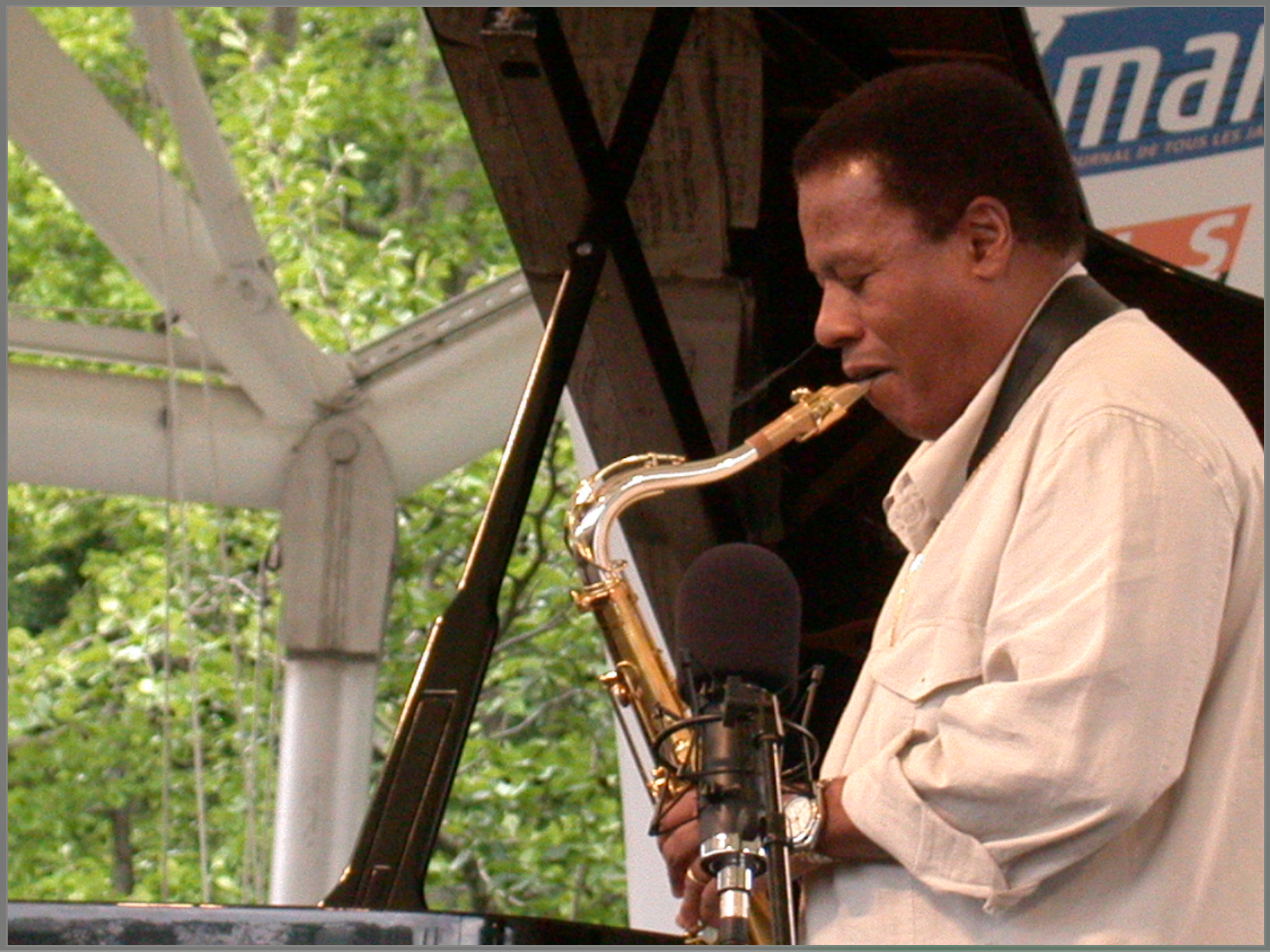
image source: Wikimedia Commons
Wayne Shorter was born in Newark, New Jersey, on August 25th, 1933. Compared to other jazz greats on this list, Shorter started playing music relatively late—at sixteen! Shorter studied music at New York University and gained notoriety as a member of Art Blakey’s Jazz Messengers in the late 1950s.
During his four-year stint with Art Blakey’s Jazz Messengers, he became the group’s music director and leading composup. He was soon recognized by Miles Davis and joined his Second Great Quintet, composing pieces for that group, too!
In addition to being a gifted jazz composer, Shorter was an incredible saxophone player with a unique approach to improvisation. His career lasted beyond Miles Davis, too. He co-founded the famous jazz fusion group Weather Report and has released many albums as a band leader.
His compositions, such as “Footprints” and “Speak No Evil,” are bonafide jazz standards.
Hear Why Wayne Shorter is One of the Great Jazz Legends
Check out Wayne Shorter playing with Miles Davis on the Shorter composition “Footprints:”
22. “Philly” Joe Jones
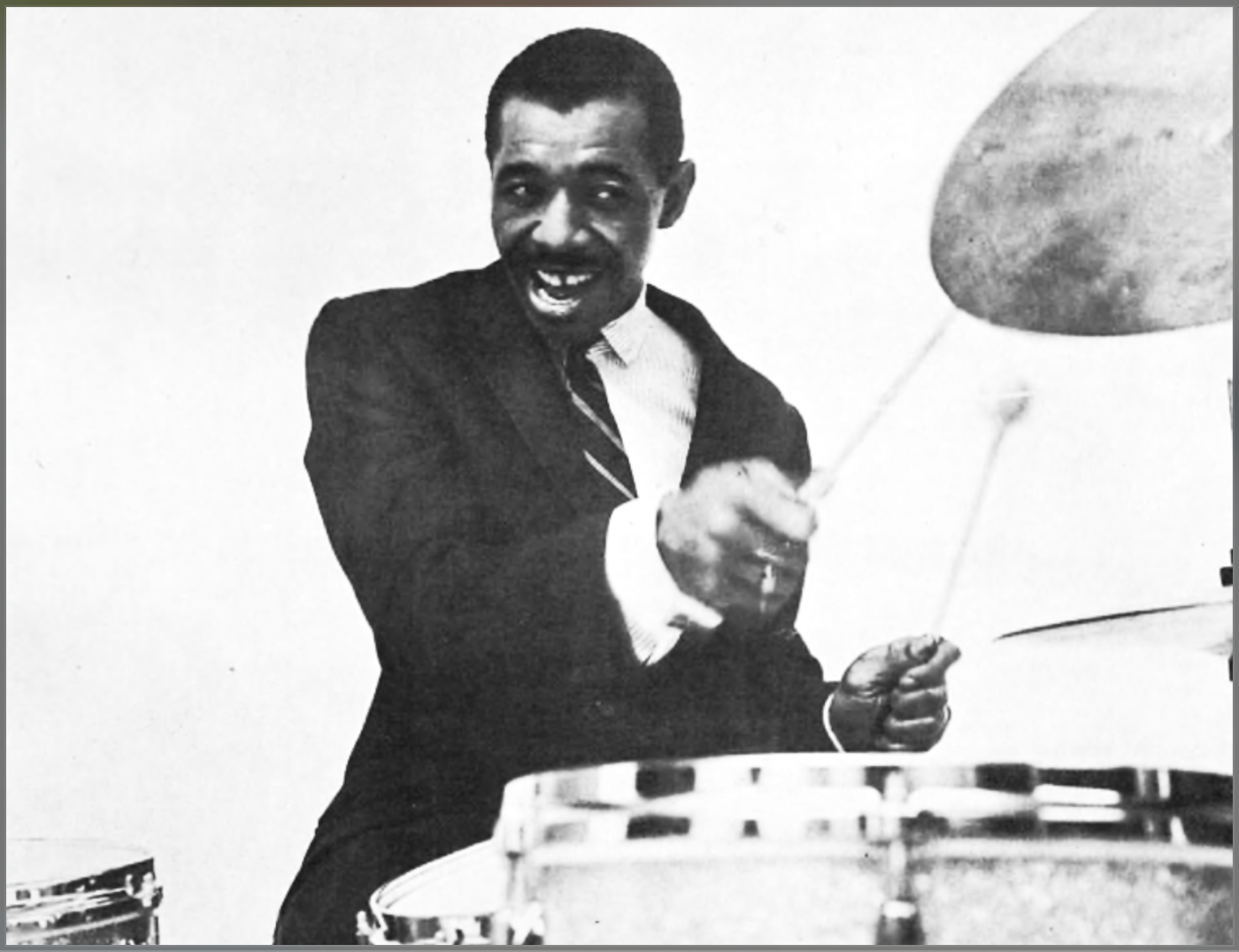
image source: Wikimedia Commons
“Philly” Joe Jones (whose real name was Joseph Rudolph Jones) was born in Philadelphia, Pennsylvania, on July 15th, 1923. As a child, he was a tap dancer and took piano lessons before switching to drums in his teens.
Later, he served in WWII in the U.S. Army.
After the war, he became a house drummer for New York City’s Café Society, where Miles Davis scouted him. He would join the Miles Davis Quintet shortly after, contributing his impeccable, loose-yet-tight triplet-based swing feel.
The “Philly” Joe Jones sound became a staple of straight-ahead jazz in the 1950s and 1960s. “Philly” Joe played with Miles Davis, John Coltrane, Bill Evans, and Red Garland, among many other jazz legends. Throughout his long career, he was a sideman for many great jazz musicians.
Hear Why “Philly” Joe Jones is One of the Most Famous Jazz Musicians
Check out this live “Philly” Joe drum solo:
23. Frank Sinatra
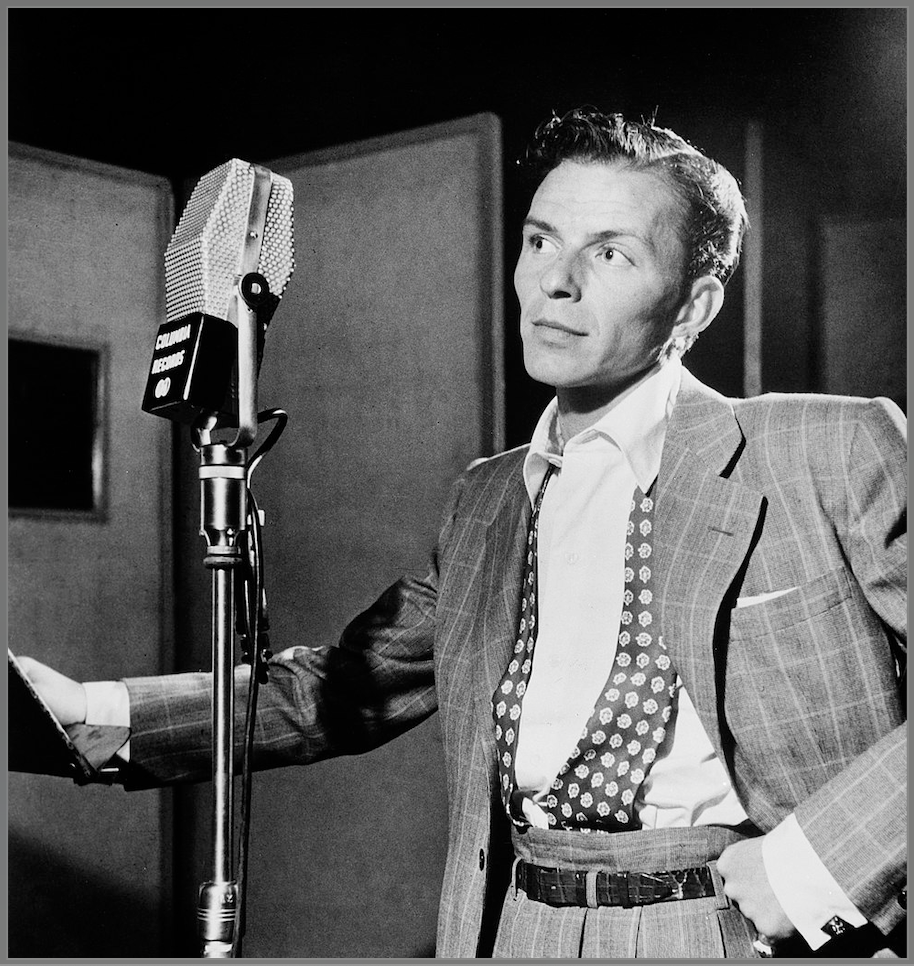
image source: Wikimedia Commons
Frank Sinatra was born to Italian immigrants in Hoboken, New Jersey, on December 12th, 1915.
Sinatra began his music career as a crooner in big bands. In the late 1930s and early 1940s, he sang in the orchestras of Harry James and Tommy Dorsey before his breakthrough debut album, The Voice of Frank Sinatra (1946).
Sinatra’s voice is synonymous with American nostalgia. That’s why one of his Christmas albums topped the charts in 2024, a quarter of a century after his death!
While primarily a “pop vocalist,” Sinatra influenced vocal jazz through his phrasing, timing, and general attitude. Albums like In the Wee Small Hours and Songs for Swingin’ Lovers! are emblematic of his contributions to vocal jazz.
Frank Sinatra worked with countless jazz legends, including Count Basie, Nelson Riddle, Quincy Jones, Antônio Carlos Jobim, Duke Ellington, and other famous jazz musicians.
Hear Why Frank Sinatra is One of the Greatest Jazz Musicians of All Time
Check out Frank Sinatra singing “You Make Me Feel So Young” in 1962:
Also, check out this list of the best Frank Sinatra songs!
24. Art Pepper
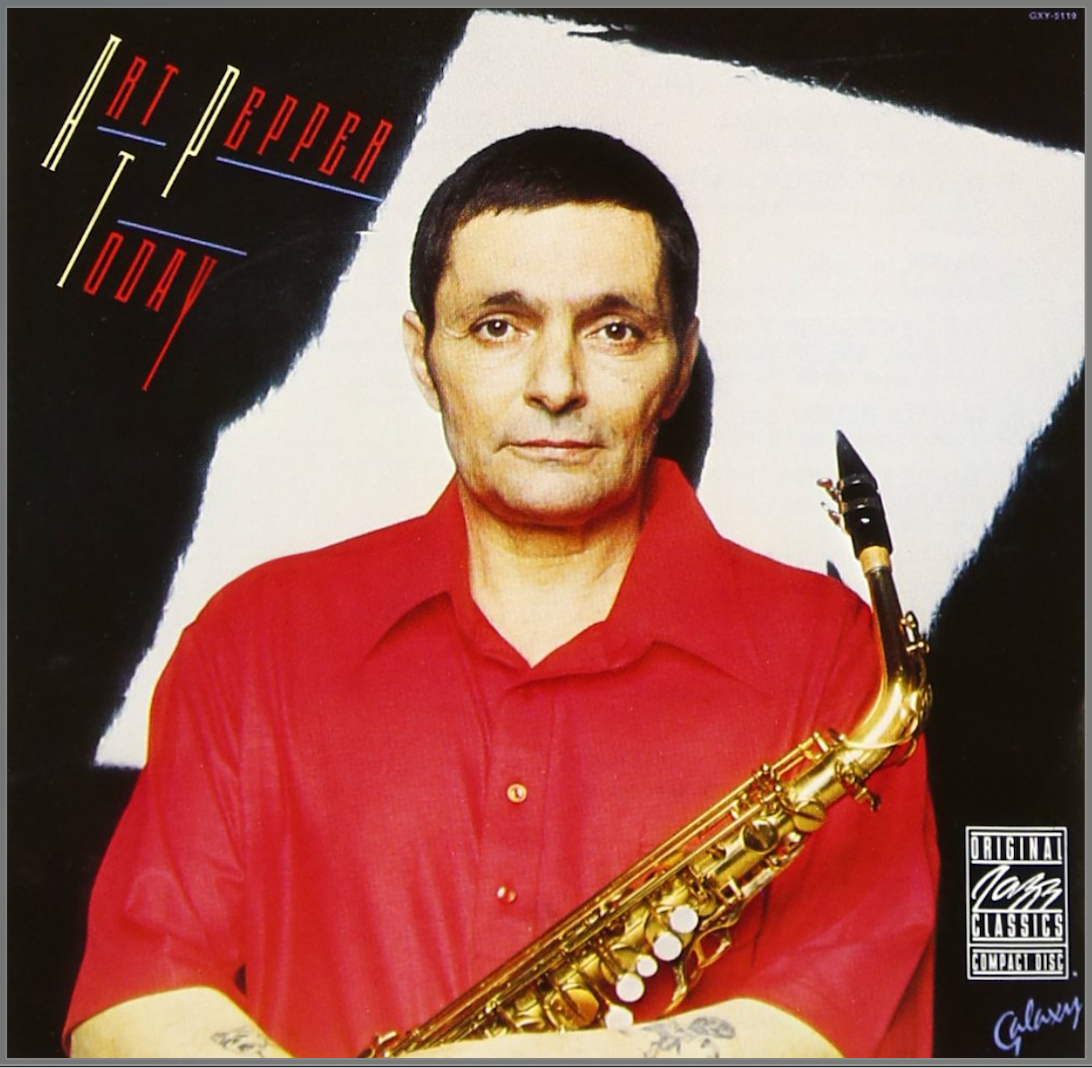
Image Source: Wikipedia
Arthur Edward Pepper Jr. was born in Gardena, California, on September 1st, 1925. His parents were both troubled alcoholics, and Pepper was sent away to live with his paternal grandmother when he was young.
Interested in music from a young age, he began playing the clarinet as a child before switching to alto saxophone in high school. He was jamming in nightclubs in Los Angeles at thirteen. By seventeen, he was performing with Benny Carter and soon thereafter joined the Stan Kenton Orchestra in the 1940s.
After being drafted and serving in WWII, he rejoined the Stan Kenton Orchestra and continued with his music career. DownBeat Magazine voted him the second-best alto saxophonist after Charlie Parker.
Art Pepper is known as a key figure in West Coast jazz—specifically for his lyrical and emotionally intense alto saxophone playing. Despite his career successes, Pepper suffered from substance abuse issues and had several stints in prison.
Hear Why Art Pepper is One of the Most Famous Jazz Musicians
Check out this cool backstage and performance footage of Art Pepper in 1980:
25. Chick Corea
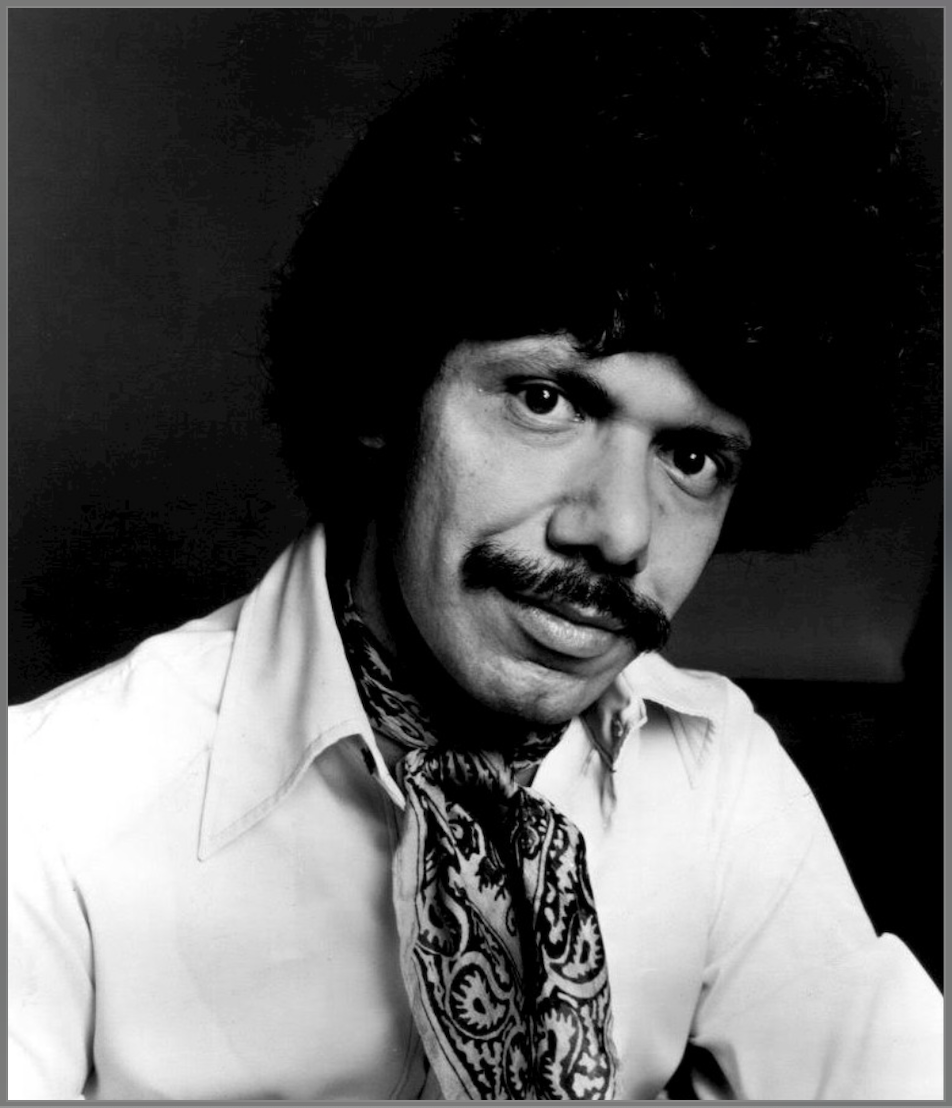
image source: Wikimedia Commons
Chick Corea was born in Chelsea, Massachusetts, on June 12th, 1941. This iconic and influential jazz pianist and composer was introduced to jazz at an early age by his father, a Dixieland jazz trumpeter.
He played drums and piano as a child but would truly excel on the piano. He eventually studied music at Columbia University and then at the Juilliard School while playing professionally. However, he dropped out to pursue music professionally full-time.
His incredible career lasted sixty years and spanned the evolution of jazz from the hard bop of the 1960s through the fusion era of the 1970s and 80s and into the modern era. Some of my favorites of his work come from his jazz fusion era with his fusion group Return to Forever.
However, he was also a master of acoustic piano and known for incredible piano trio albums like Now He Sings, Now He Sobs (1968).
Hear Why Chick Corea is One of the Most Famous Jazz Artists Ever
Check out Chick playing in piano trio format at the Tokyo Jazz Festival in 2019:
26. Clifford Brown
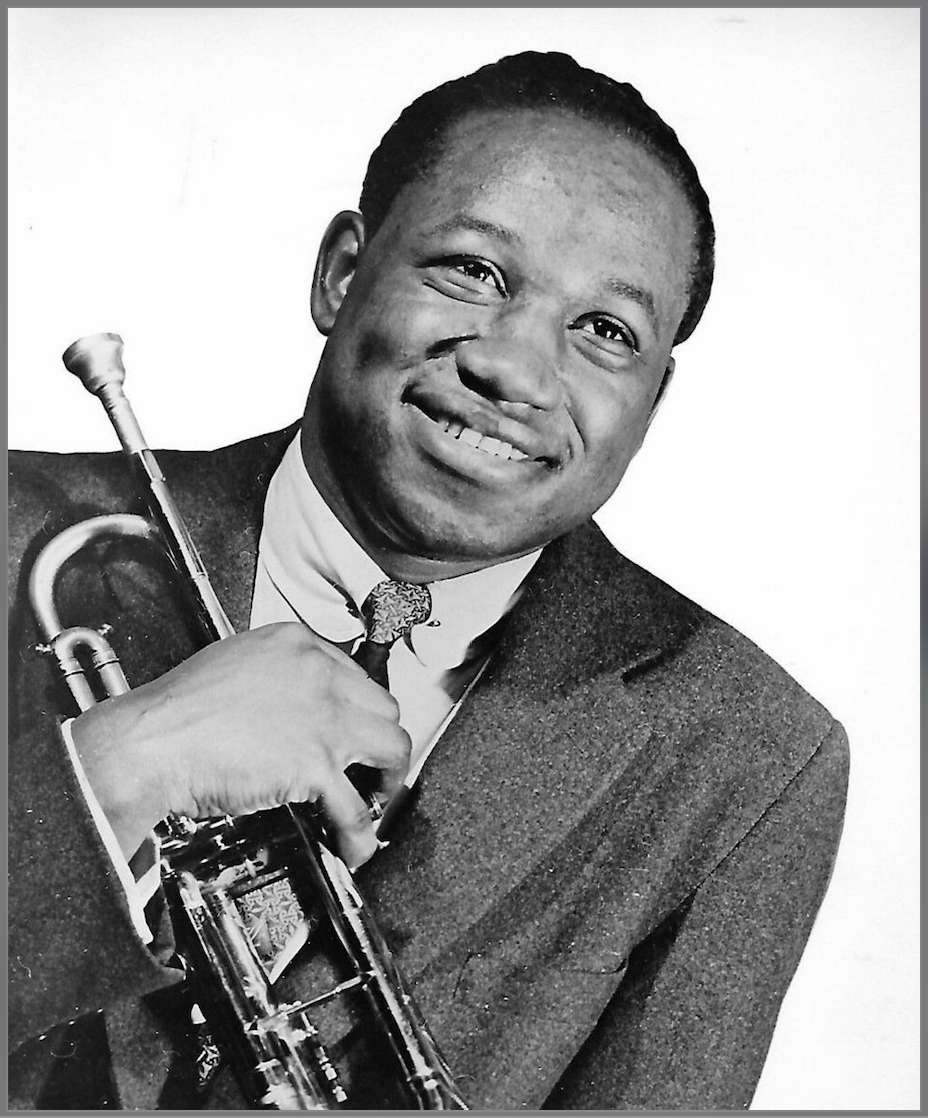
image source: Wikimedia Commons
Clifford Brown was born in Wilmington, Delaware, on October 30th, 1930. Tragically, his life was cut short in a car accident in 1956 when he was only twenty-five years old. That short span of twenty-five years saw the rise of one of the greatest jazz trumpet players!
As a youth, Clifford Brown showed early talent on the trumpet and gained notoriety in the jazz scene, playing around the Philadelphia area. Jazz legends like Dizzy Gilespie encouraged him to pursue music full-time.
His first official recordings were with Chris Powell’s Blue Flames in the early 1950s. It wasn’t long before he was jamming in New York City. Soon thereafter, he was a founding member of Art Blakey’s quintet, which would become the Jazz Messengers.
However, he is known for his influential albums with jazz drummer Max Roach. Throughout his short career, this jazz performer played with many incredible jazz legends and would have gone on to have an incredible music career if not for the car crash that took his life.
Hear Why Clifford Brown is One of the Most Famous Jazz Musicians Ever
Check out this iconic recording of “Stompin’ At The Savoy” from the classic album Brown and Roach Incorporated:
27. Charlie Christian
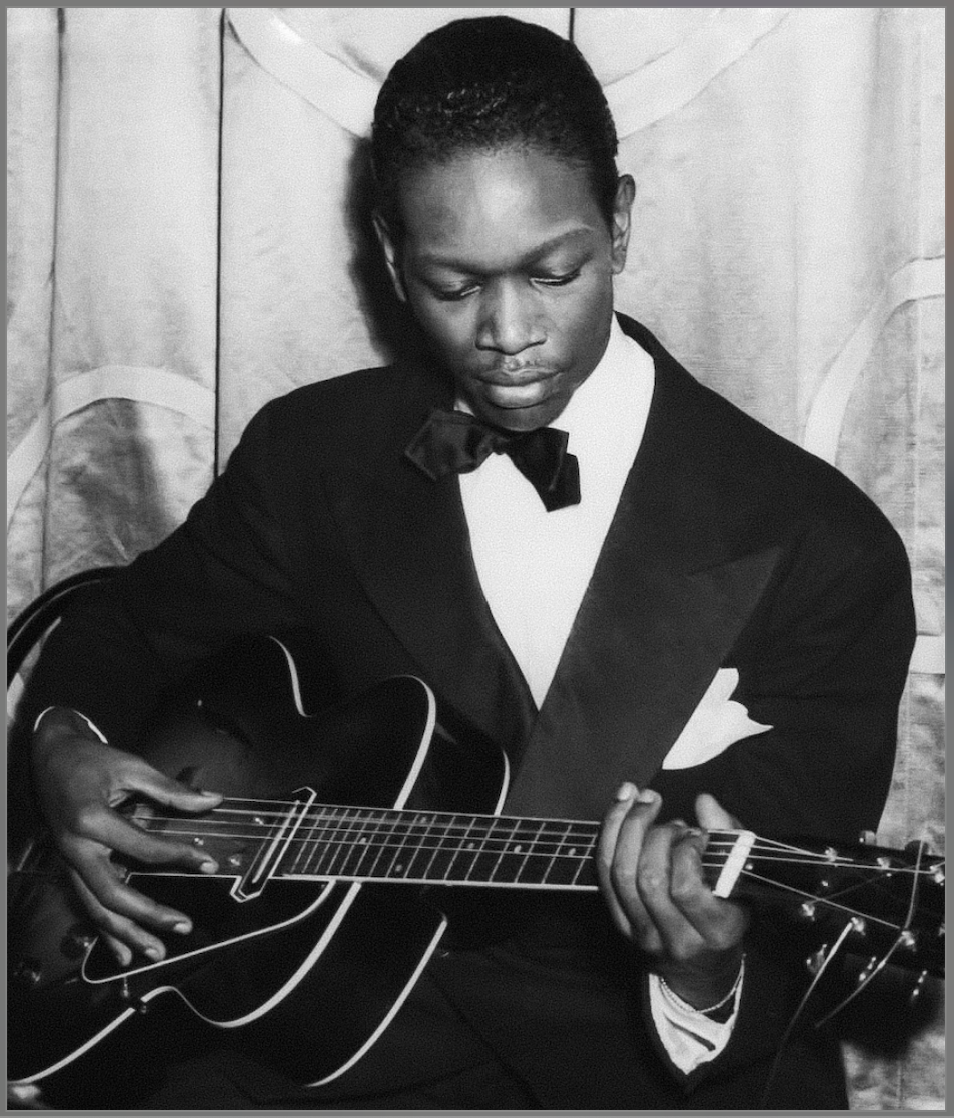
image source: Wikimedia Commons
Charlie Christian was born in Bonham, Texas, on July 29th, 1916. He started playing guitar as a teenager and made a name for himself in Oklahoma City before joining Benny Goodman’s sextet in 1939.
Christian was an incredibly influential figure in bebop and, specifically, jazz guitar. Though Charlie Christian wasn’t the first electric guitarist in jazz, his incredible technical prowess and musical presence solidified the guitar as a jazz instrument that could solo.
His single-note lines helped influence bebop and jazz vocabulary. Many jazz guitar legends who came after him credited him as a key influence on their playing style.
Christian was a bebop pioneer like Charlie Parker and Dizzy Gilespie, but his life and short-lived musical career was cut short at age twenty-five by tuberculosis.
Check Out Why Charlie Christian is One of the Greatest Jazz Musicians Ever
Hear this incredible electric jazz guitar recording from 1941!
28. Herbie Hancock
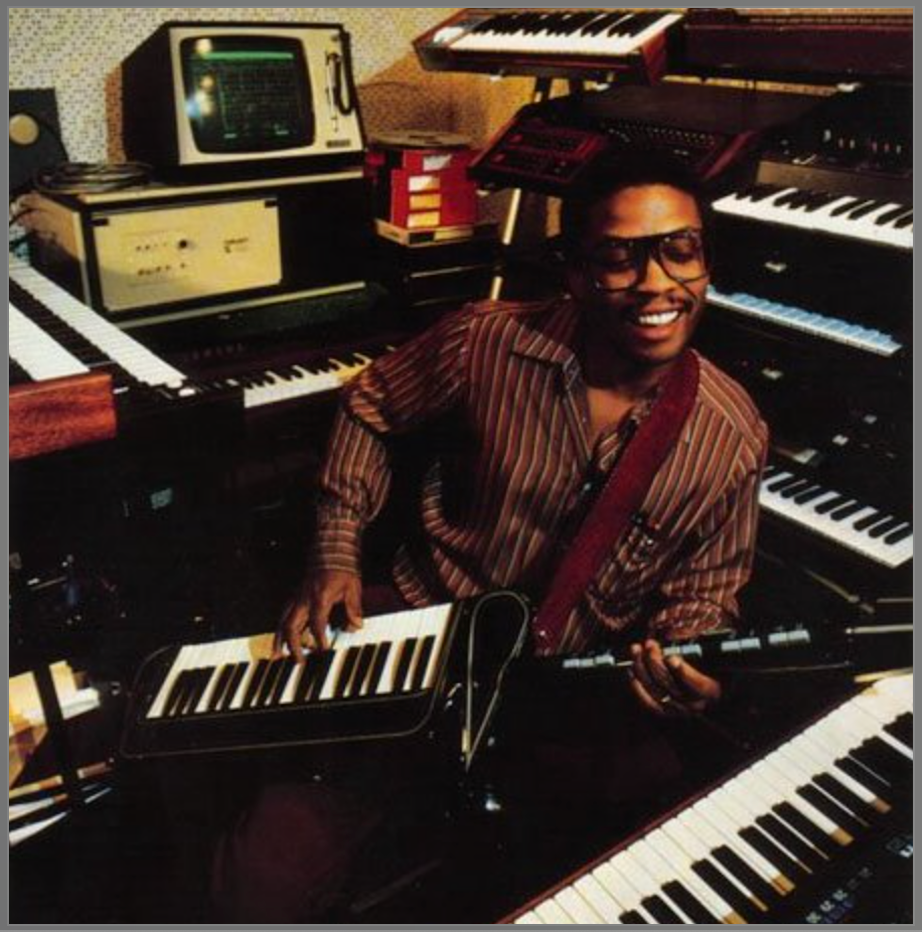
image source: Wikimedia Commons
Herbie Hancock was born Herbert Jeffery Hancock on April 12th, 1940, in Chicago, Illinois. He was considered a child prodigy and had a very early start to his professional career—he performed with the Chicago Symphony at eleven years old!
Though he started with classical music, he discovered jazz in his early teens and began performing with Donald Byrd and Coleman Hawkins. At twenty-two, he released his debut solo album, Takin’ Off, in 1962!
Around this time, Miles Davis discovered and recruited him into the Miles Davis Quintet, a career move that would set him on course to become one of the greatest and most famous jazz musicians!
After his incredible work with the Miles Davis Quintet, Herbie went on to work with many incredible jazz greats and enjoyed massive success. In fact, as of this article’s publish date, Herbie is still performing at 84 years old, making his career an incredibly long one—eight decades!
Hear Why Herbie Hancock is Considered One of the Best Jazz Musicians of All Time
Check out this rare live recording of Herbie Hancock and the Mwandishi Sextet in 1972:
29. McCoy Tyner
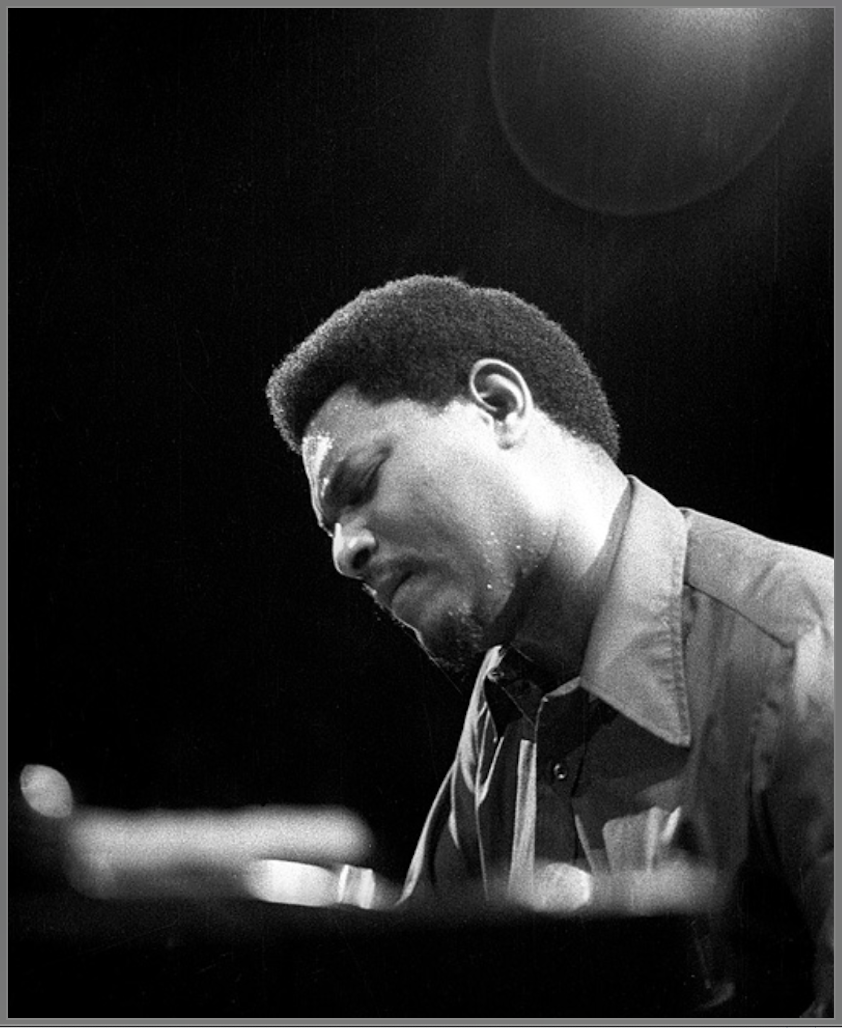
McCoy was born in Philadelphia, Pennsylvania, on December 11th, 1938. Encouraged by his mother, Tyner started playing piano at a young age and soon took lessons with the great Bud Powell, who, along with Thelonius Monk, significantly influenced the young pianist.
He began playing professionally in Philadelphia with Benny Golson and Art Farmer’s Jazztet. Being active in the Philly jazz scene, he worked closely with emerging jazz saxophonist John Coltrane and was part of Coltrane’s classic quartet.
In addition to his work as a side man, Tyner was also a prolific bandleader, releasing many pivotal jazz albums that helped redefine jazz piano and pushed traditional harmonic boundaries, unlike any pianist before him.
Hear McCoy Tyner’s Incredible Harmonic Innovations
Check out this incredible live performance from 1975:
30. Sonny Stitt
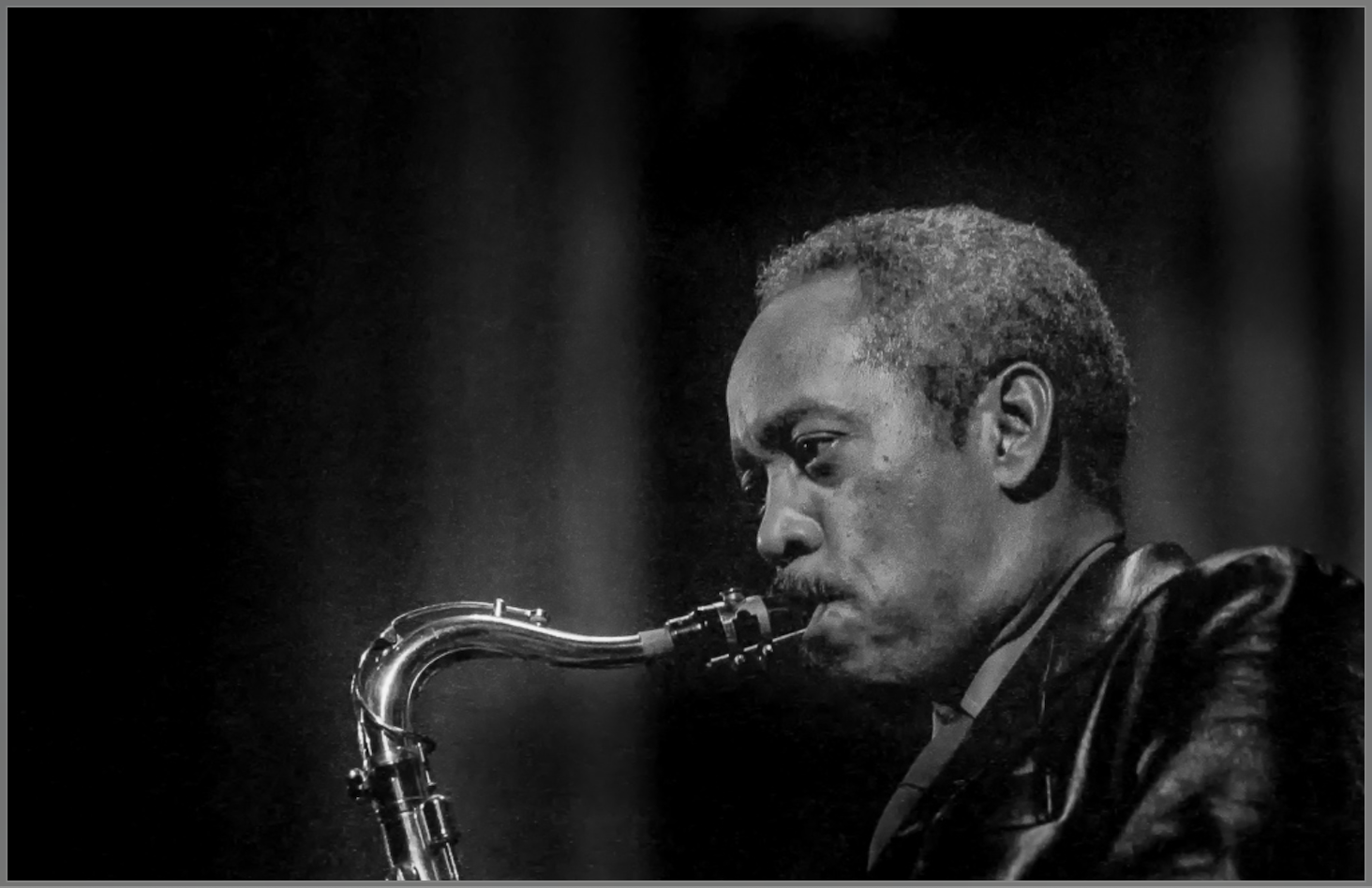
image source: Wikimedia Commons
Sonny Stitt was born to a musical family in Boston, Massachusetts, on February 2nd, 1924. However, he was put up for adoption and raised in Saginaw, Michigan. Despite this, he remained involved with music as a child, starting with clarinet and switching to saxophone as a teenager.
Stitt gained recognition in the mid-1940s during the bebop era. Because of their similar styles, he was often compared to Charlie Parker. However, Stitt developed his own voice, excelling on both alto and tenor saxophones.
He played in big bands early on, including Billy Eckstine’s orchestra, Tiny Bradshaw’s big band, and Dizzy Gillespie’s big band. Stitt was a prolific recording artist and band leader, recording over 100 albums across his career! Check out Stitt Plays Bird and The Sonny Side of Stitt.
Stitt’s rapid, fluid improvisation made him a key figure in bebop and hard bop, as well as one of the most respected jazz saxophonists. He collaborated with Dizzy Gillespie, Bud Powell, Gene Ammons, Art Blakey, and other famous jazz musicians.
Listen To This Great Jazz Performer Live
Check out Sonny Stitt blowing over the blues:
31. Elvin Jones
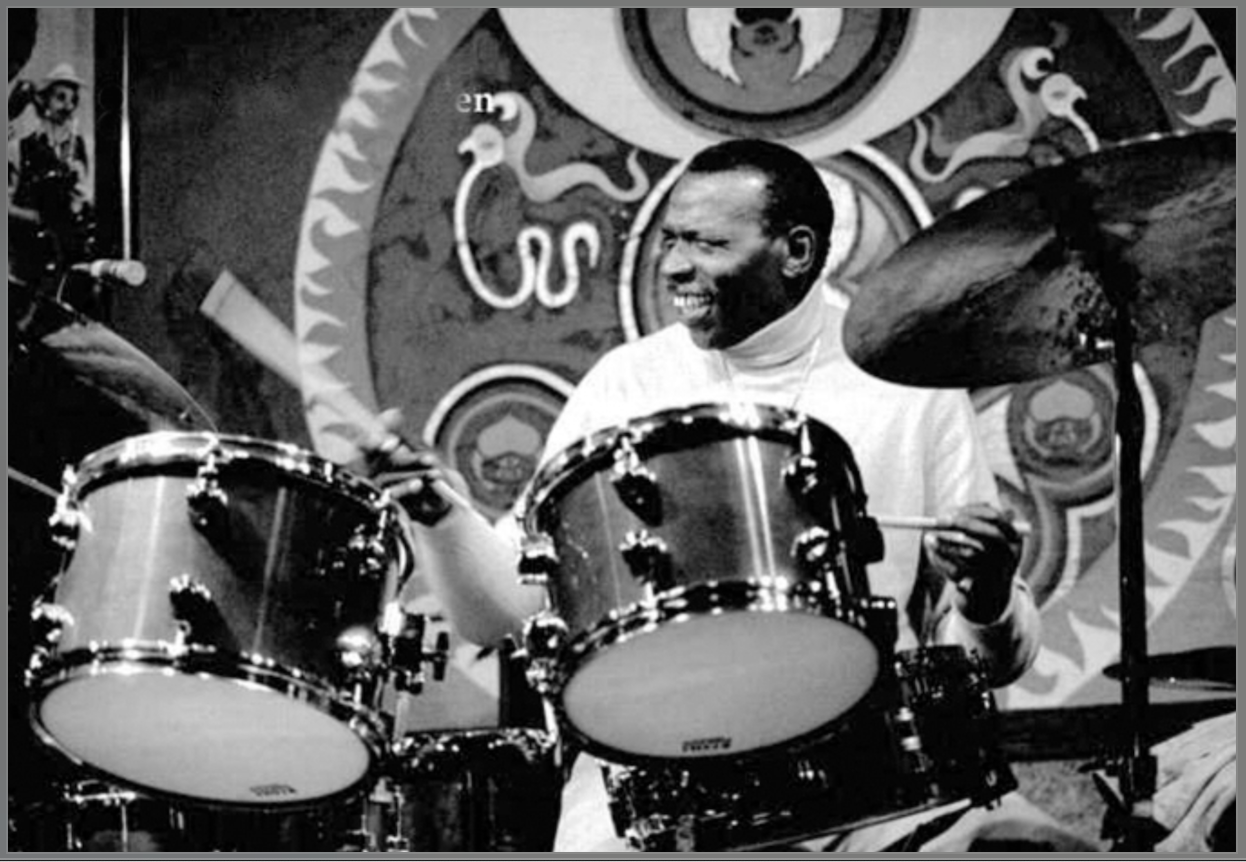
image source: Wikimedia Commons
Elvin Jones was born in Pontiac, Michigan, to a musical family on September 9th, 1927. His brothers, Hank and Thad Jones, also became famous jazz musicians! Elvin began playing drums as a teenager and played in a marching band.
Jones began his professional music career after serving in the military from 1946 to 1949. In the 1950s, he gained recognition as a drumming innovator. In 1960, he joined John Coltrane’s classic quartet and became a jazz legend.
His work on albums like A Love Supreme and My Favorite Things helped elevate the role of the drummer to that of a fully expressive, equal participant in a jazz ensemble.
Beyond his work with Coltrane, Elvin Jones led his own groups and performed with other jazz greats, including Miles Davis, Wayne Shorter, McCoy Tyner, Sonny Rollins, and other famous jazz musicians. He was a drumming pioneer who developed a unique and iconic approach to jazz drumming.
Discover Why Elvin Jones is One of the Best Jazz Musicians Ever
Check out this Elvin Jones drum solo from 1991:
32. Antônio Carlos Jobim
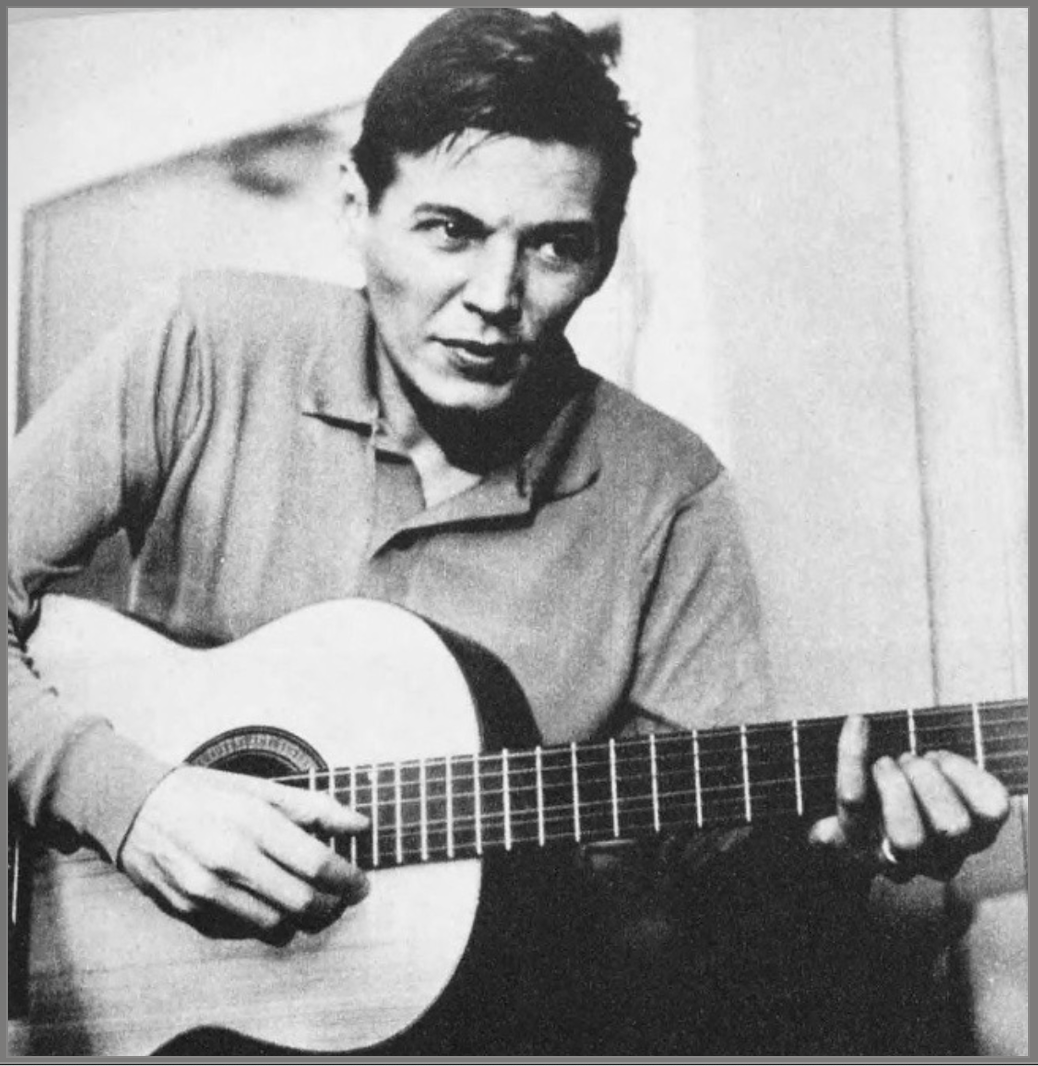
image source: Wikimedia Commons
Antônio Carlos Jobim was born in Rio de Janeiro, Brazil, on January 25, 1927. Like many other entrants, Jobim was raised in a musical household. He initially studied architecture before fully focusing on music.
He would become a world-class composer, guitarist, pianist, and singer!
Jobim was a key figure in the creation of bossa nova, which blended traditional Brazilian samba rhythms with jazz harmony and melodies. His compositions, such as “The Girl from Ipanema” and “Desafinado,” became international hits and introduced bossa nova to audiences worldwide.
In the 1960s, Jobim gained fame in the United States, collaborating with famous jazz musicians like like Stan Getz, João Gilberto, and Frank Sinatra. His album Getz/Gilberto (1964) helped popularize the genre and won multiple Grammy Awards in the process!
Listen to Why Antônio Carlos Jobim is One of the Most Famous Jazz Musicians Ever
Check out this live performance of Jobim playing his classic Bossa Nova composition “Chega de Saudade:”
Check out this article to learn more about bossa nova chord progressions and learn classic Jobim tunes.
33. Nat King Cole
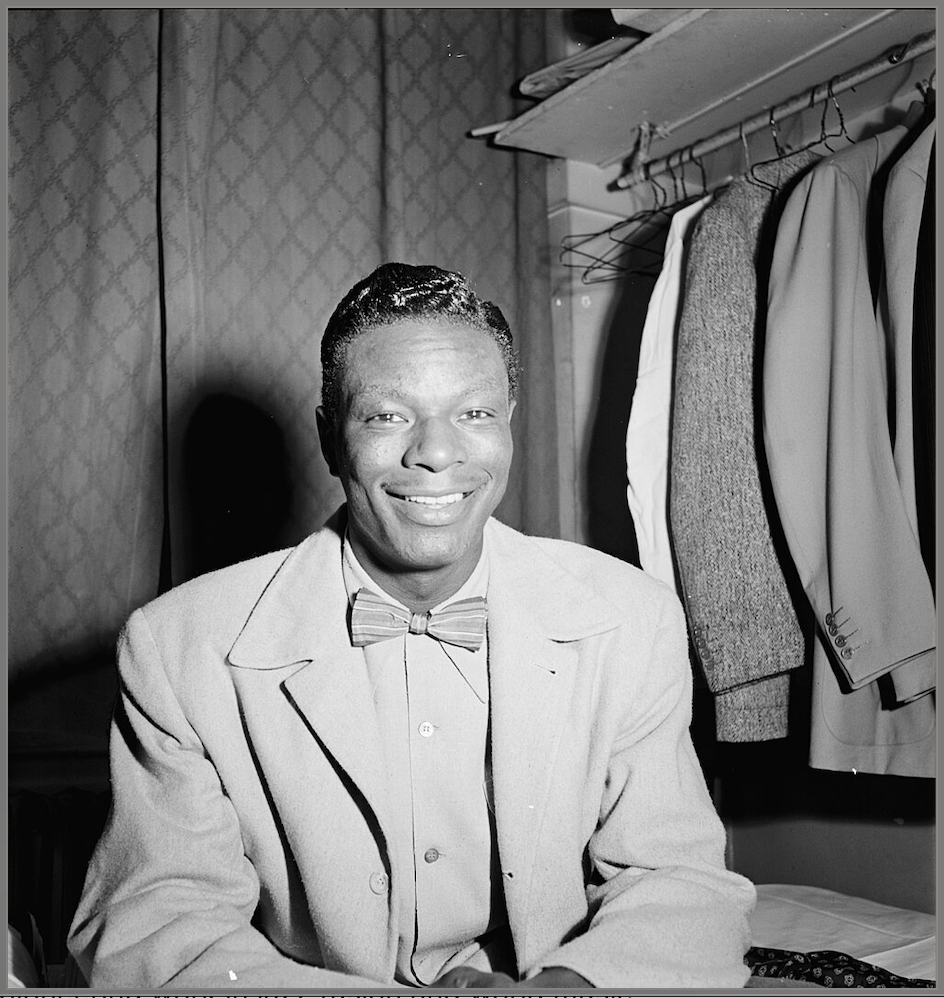
image source: Wikimedia Commons
Nat King Cole was born in Montgomery, Alabama, on March 17th, 1919, but grew up in Chicago, Illinois. He started playing the piano as a child and performed in his father’s church.
Though he first gained recognition as a jazz pianist with the Nat King Cole Trio in the late 1930s, he achieved international acclaim with his smooth, baritone voice. It wasn’t long before Cole transitioned into one of the most popular jazz vocalists of his time.
Throughout his career, Nat King Cole recorded over 100 pop standards and contributed significantly to jazz with his innovative trio work. You’ll likely know many of his tunes, such as “Unforgettable” and “Mona Lisa.”
This crossover pop sensation worked with many jazz and big band legends, including Lester Young and Nelson Riddle. Cole also broke racial barriers as one of the first African American performers to host a national television show in the U.S.
Plus, his jazz piano chops are incredible!
Learn Why Nat King Cole Was One of the Most Famous Jazz Musicians of All Time
Check out Nat King Cole singing and playing piano on the little-known jazz standard, “Sweet Lorraine:”
34. Charles Mingus
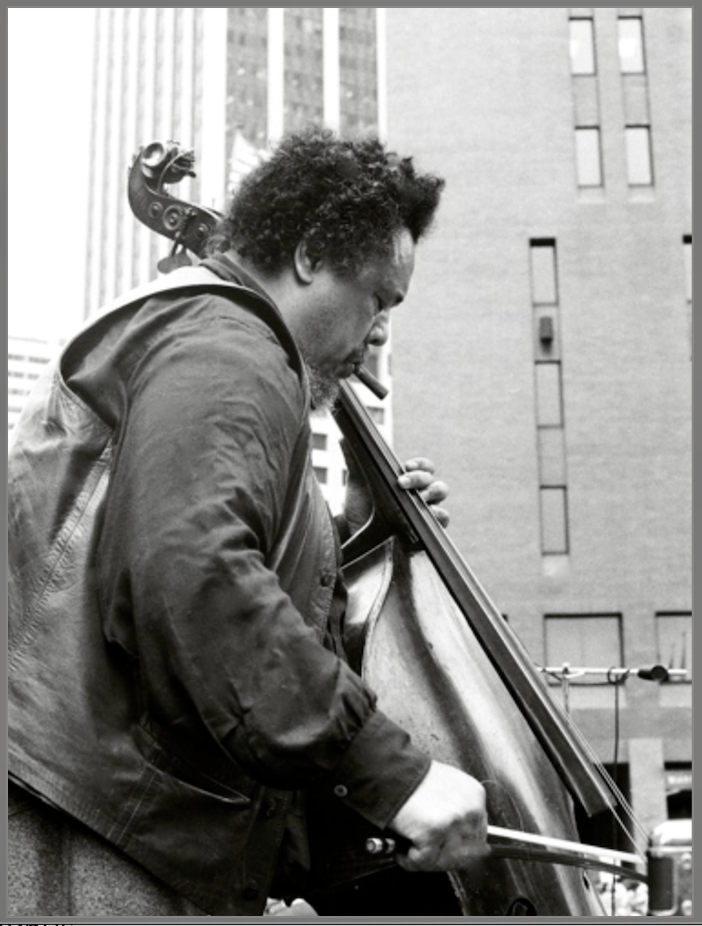
image source: Wikimedia Commons
Charles Mingus was born in Nogales, Arizona, on April 22nd, 1922, but grew up in Los Angeles. He started playing bass in high school after initially studying trombone and cello. Due to poor education, he initially couldn’t read music and felt separated from his classically trained peers.
Despite these challenges, Mingus became one of jazz’s most influential composers and bandleaders. He blended blues, gospel, and modern classical influences with traditional jazz and composed complex musical pieces in high school. Mingus was considered a bass prodigy.
He started performing professionally with Barney Bigard, Duke Ellington’s clarinetist. In the mid-1940s, he played with Louis Armstrong and Russell Jacquet. By the 1950s, he played with Charlie Parker, who profoundly influenced him.
Mingus was known for pushing his bands to their limits, bringing out raw emotion and intensity, and emphasizing collective improvisation. He was also an early proponent of free jazz.
Listen To Why Charles Mingus Was A Jazz Legend
Check out this Charles Mingus bass solo from 1964:
35. Scott LaFaro
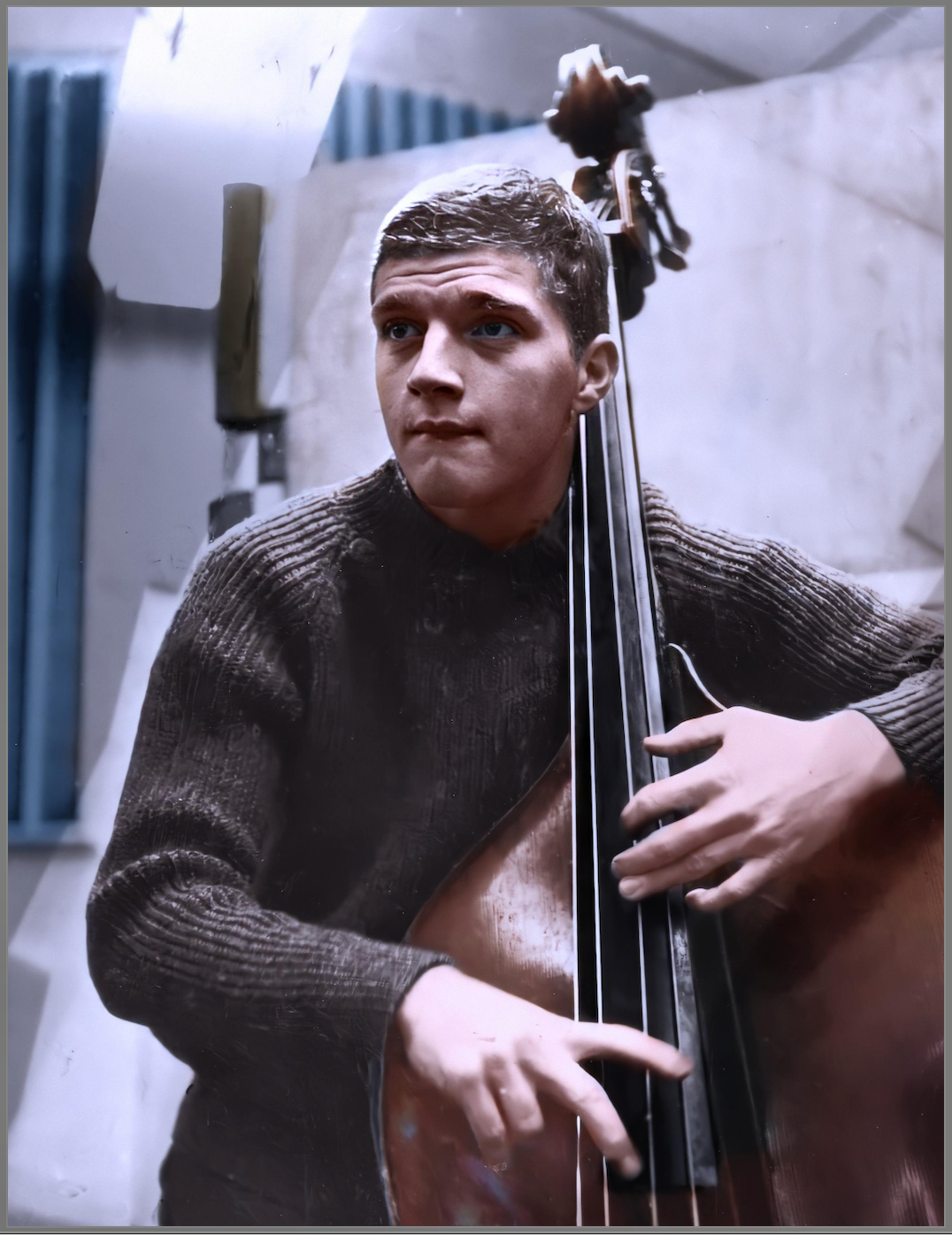
image source: Wikipedia
Scott LaFaro was born in Newark, New Jersey, on April 3rd, 1936, but grew up in Geneva, New York. Initially playing piano, clarinet, and tenor saxophone, LaFaro didn’t play bass until college at age eighteen!
LaFaro’s professional career began in the late 1950s. He gained renown playing with Chet Baker, Ornette Coleman, and Stan Getz. But his groundbreaking work with Bill Evans in the Bill Evans Trio made him a jazz legend!
Scott LaFaro made the bass a lead voice, redefining its role in jazz. Under LaFaro, the double bass was an equal voice in the trio.
Although his career was tragically cut short when he died in a car accident in 1961 at twenty-five, his influence on jazz music remains profound—he only played bass for seven years and achieved an unparalleled standard of excellence!
Check out Sunday at the Village Vanguard and Waltz for Debby to hear Scott LaFaro’s bass innovations in action!
Check Out Why Scott LaFaro Was One of the Best Jazz Musicians Ever
Check out this live performance of the Bill Evans Trio with Scott LaFaro on Bass:
36. Pat Metheny
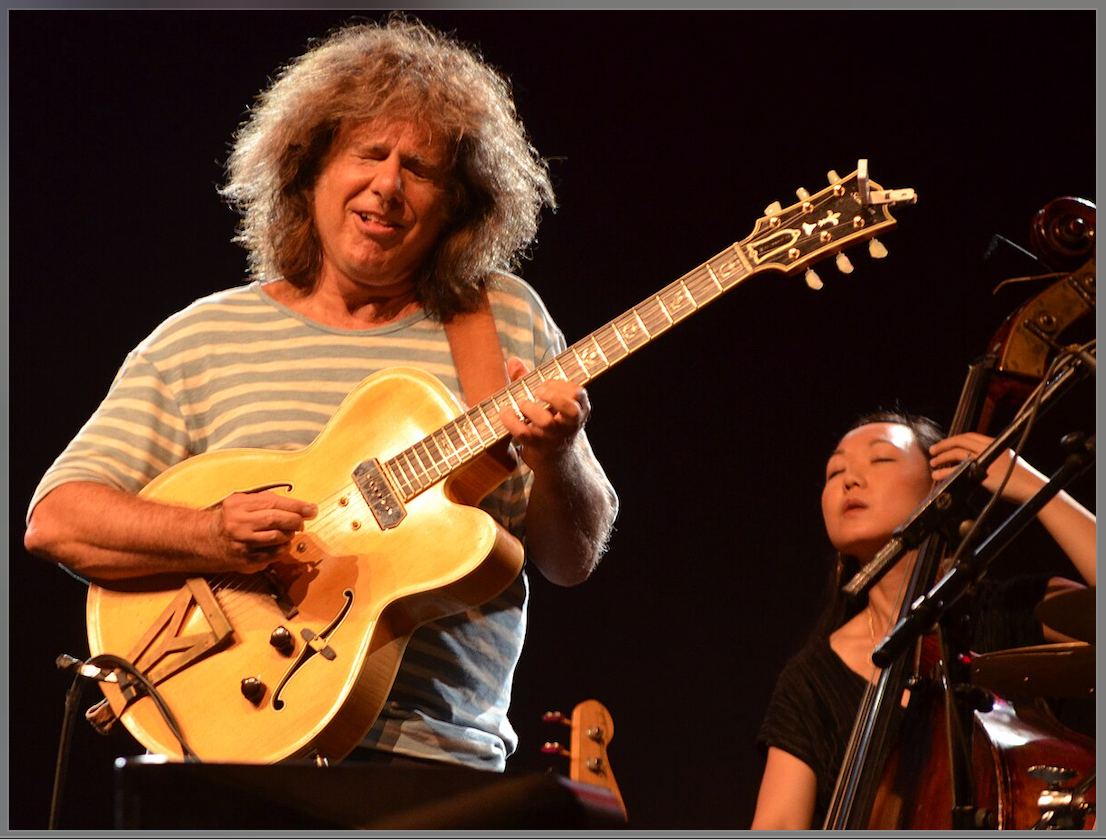
image source: Wikimedia Commons
Pat Metheny was born in Lee’s Summit, Missouri, on August 12th, 1954. He played trumpet as a child but switched to guitar at age twelve. It wasn’t long before he was considered a prodigious talent in his hometown.
Metheny was offered a scholarship to study at the University of Miami, but the dean considered him so talented that he was offered a job teaching guitar instead! Before long, he was hired by Berklee College of Music and studied under Gary Burton.
He played with Burton and other friends from the scene, such as Jaco Pastorius. But, his professional career took off in 1976 when he released his debut album, Bright Size Life. This album redefined jazz guitar by blending it with rock, folk, and world music influences.
He soon formed the Pat Metheny Group, whose fusion of styles and use of cutting-edge technology has won them multiple Grammy Awards. In addition to his unique phrasing and technical mastery, Metheny is also an incredible composer and bandleader who has constantly redefined himself and his sound.
You can tell I’m a big fan. But it’s no exaggeration to say that Pat Metheney is among the most influential living jazz musicians.
His many collaborations include work with Jaco Pastorius, Lyle Mays, Brad Mehldau, Ornette Coleman, Joni Mitchell, Jim Hall, Joshua Redman, Herbie Hancock, Gary Burton, and other famous jazz musicians.
Listen To Why Pat Metheny is One of the Greatest Modern Jazz Musicians
Check out Pat Metheny playing his signature 42-string Pikasso guitar:
37. Ron Carter
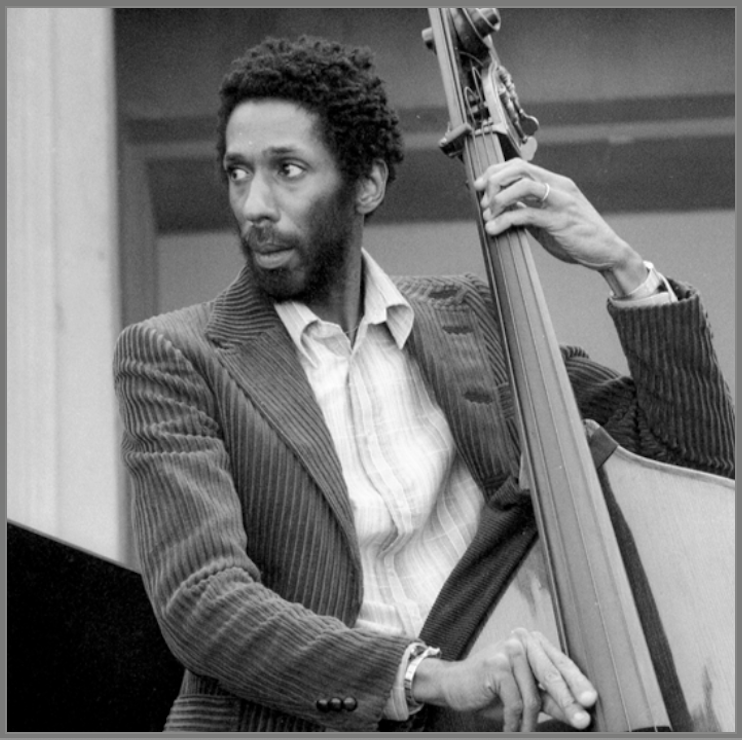
image source: Wikimedia Commons
Ron Carter was born in Ferndale, Michigan, on May 4th, 1937. He began his musical journey on the cello before officially switching to bass in high school. He received a Bachelor’s degree from the Eastman School of Music and a master’s from the Manhattan School of Music.
Ron Carter and jazz bass are essentially synonymous. He is the most recorded jazz bassist ever, appearing on over 2,000 albums! Though he was a top-call sideman, he also released several albums as a band leader.
Ron came into his own in the 1960s as the bassist for Miles Davis’ Second Great Quintet. His innovative, melodic approach to bass playing is featured on iconic albums like E.S.P., Miles Smiles, and Nefertiti.
Carter’s collaborations include work with Herbie Hancock, Wayne Shorter, Jim Hall, Tony Williams, Freddie Hubbard, and countless other jazz greats, solidifying his place as one of the most influential bassists ever.
Listen To Why Ron Carter is Considered One of the Best Jazz Musicians Ever
Check out Ron Carter holding it down with Elvin Jones in this recording of the Miles Davis Quintet in 1964:
38. Chick Webb
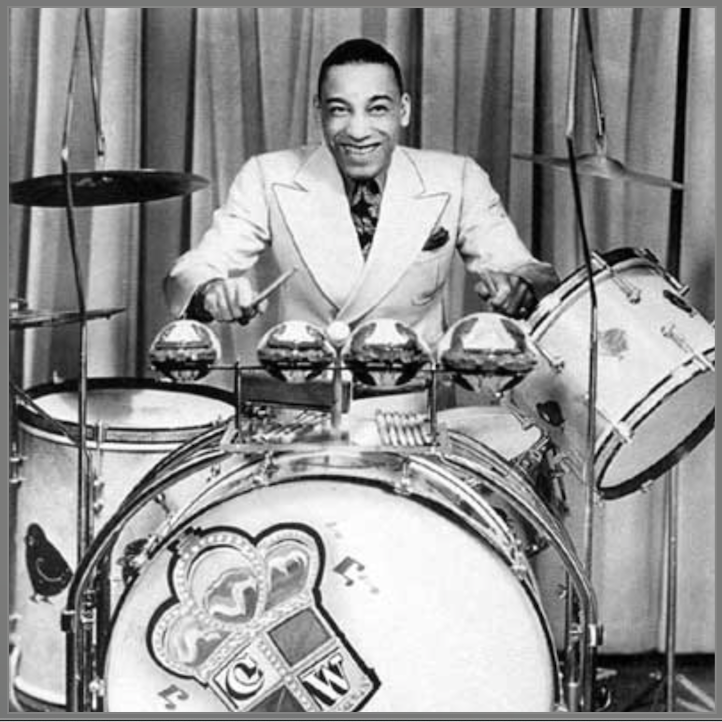
image source: Wikimedia Commons
Chick Webb was born in Baltimore, Maryland, on February 10th, 1905, 1907, or 1909! His birth record is contested, and he has various birthdates! Webb suffered an injury as a child that resulted in tuberculosis of the spine, which led to permanent disfigurement.
However, a doctor suggested Webb take up an instrument to help loosen his bones. From that moment on, Webb was destined to be a jazz drummer. He excelled at drums and quickly developed a reputation for an incredible sense of rhythm and energy.
Webb moved to New York City in the mid-1920s, formed his own band, and became a regular performer at Harlem’s Savoy Ballroom. The Chick Webb Big Band became one of the most popular swing bands of the 1930s, known for its tight arrangements and electrifying performances.
Webb also helped launch the career of Ella Fitzgerald, who joined his orchestra as a vocalist. Their recordings, including “A-Tisket, A-Tasket,” became hits and set Fitzgerald on a path to jazz stardom.
Webb’s powerful drumming and leadership skills set the standard for swing-era drummers and fig band leaders. Though he passed away in 1939 at just thirty-four, his influence on jazz and big band music remains significant.
Listen To Why Chick Webb Was One of the Most Famous Jazz Musicians Ever
Check out this Chick Webb drum solo from 1938!
39. Jim Hall
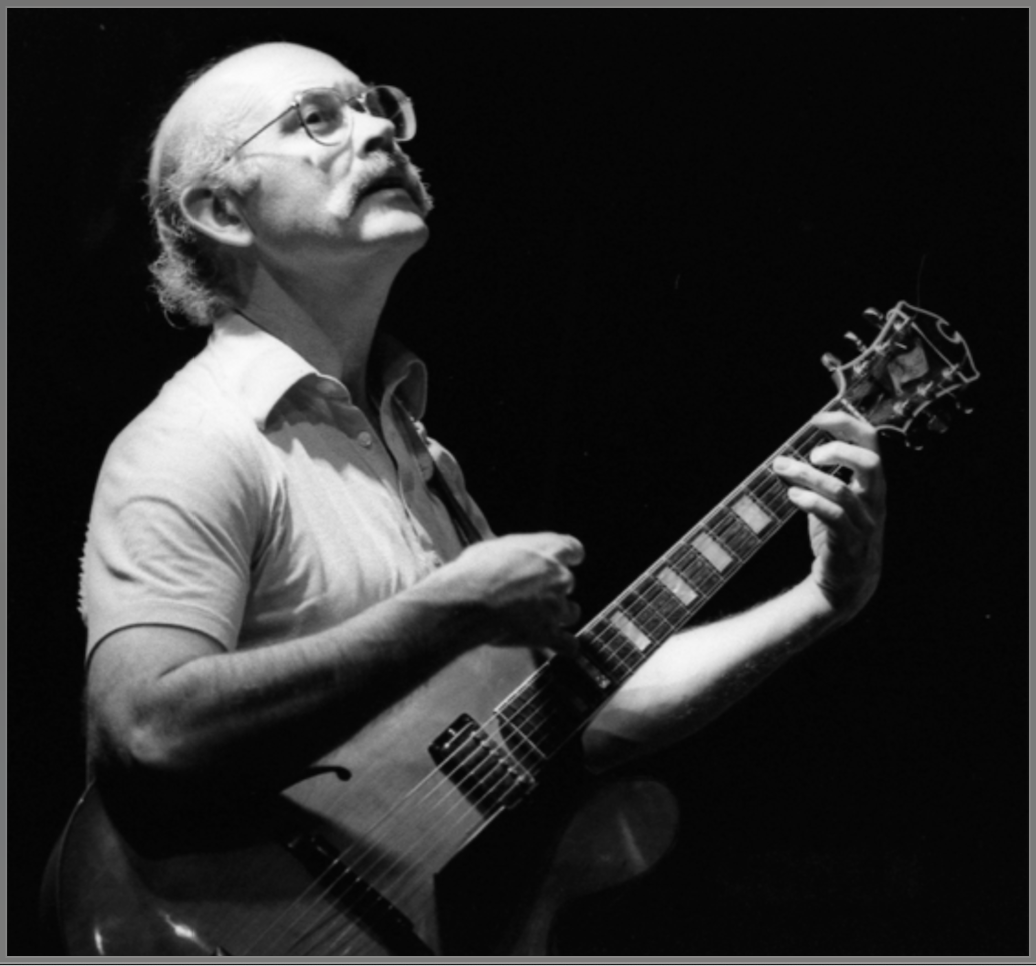
image source: Wikimedia Commons
Jim Hall was born in Buffalo, New York, on December 4th, 1930, to a musical family, but moved to Cleveland, Ohio, as a small child. Hall started playing guitar at ten years old, focusing on classical music and music theory.
He got his professional start playing with the Chico Hamilton Quintet and quickly gained a reputation as an innovative and unique-sounding jazz guitarist. His playing was highly influential on the modern jazz guitar tradition.
His melodic and intellectual approach to jazz guitar emphasized tone, space, and interaction over technical flash. His 1957 debut album, Jazz Guitar, showcased his cerebral style and creative phrasing.
Over his long career, Hall played with some of jazz’s most respected musicians, including Sonny Rollins, Bill Evans, Art Farmer, and Paul Desmond. His works with Bill Evans, especially on the album Undercurrent, are considered milestones in the jazz duo format.
Discover Why Jim Hall is One of the Most Famous Jazz Musicians Ever
Listen to this live performance of Jim Hall and Sonny Rollins playing on the Rollins tune “The Bridge:”
40. Michael Brecker
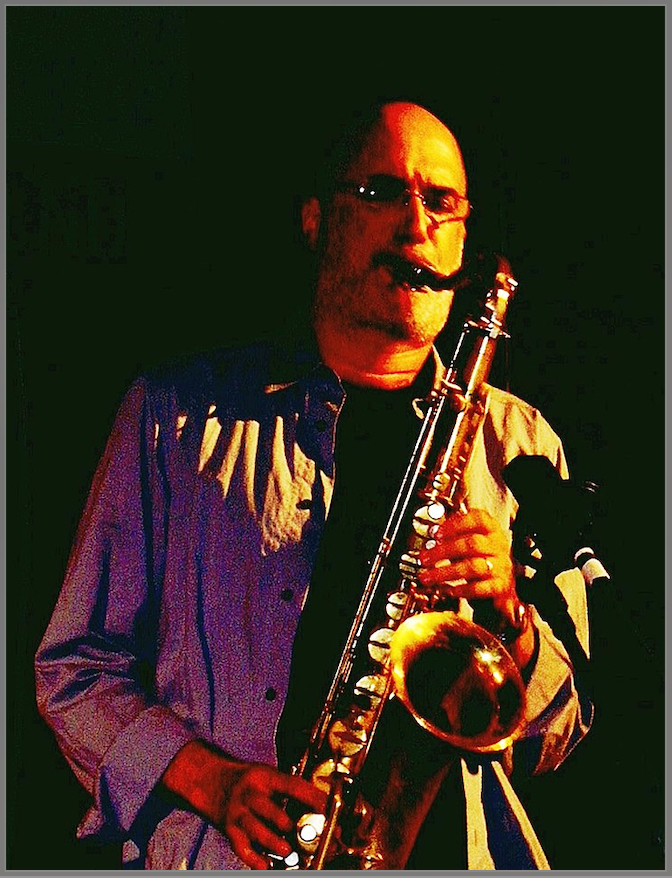
image source: Wikimedia Commons
Michael Brecker was born in Philadelphia, Pennsylvania, on March 29th, 1949, and grew up in an artistically-minded family. He started playing clarinet at six, alto saxophone at thirteen, and finally tenor saxophone at fifteen.
His older brother, Randy Brecker, was a trumpet player who attended Indiana University in Bloomington, Indiana. Michael followed him there, and together, they started a musical career that would take each to jazz stardom!
The brothers formed the group the Brecker Brothers, which was a prominent jazz fusion band. In addition to leading his own projects, Brecker collaborated with a wide range of musicians, including Herbie Hancock, Pat Metheny, Chick Corea, and Joni Mitchell.
Brecker’s virtuosity and innovative use of electronic effects expanded the possibilities of the saxophone in modern jazz. Despite his untimely passing in 2007, he remains one of the most influential jazz improvisers of the contemporary era.
Listen to Why Micheal Brecker is One of the Best Jazz Musicians Ever
Check out Michael Brecker playing “Naima” completely solo!
41. Lennie Tristano
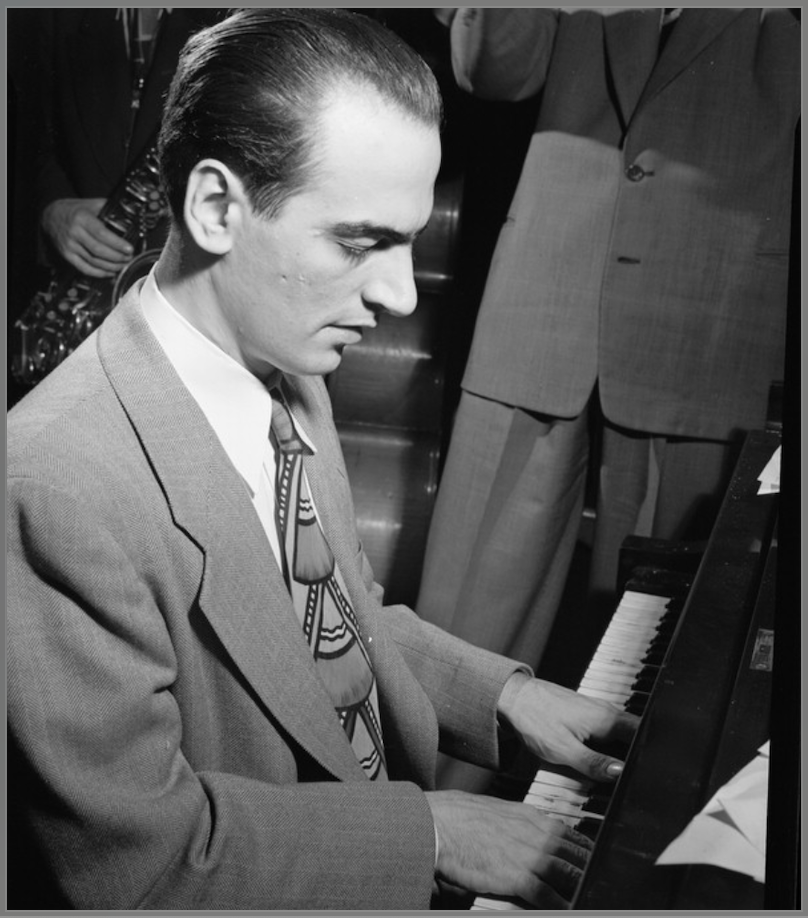
image source: Wikimedia Commons
Lennie Tristano was born in Chicago, Illinois, on March 19th, 1919. Although blind from a young age, he studied music formally, focusing on piano and composition, and earned a degree from the American Conservatory of Music.
Tristano became known for his intellectual and innovative approach to jazz. He pioneered cool jazz and free improvisation, emphasizing harmonic complexity and rhythmic experimentation. His recordings, such as Intuition and Line Up, pushed the boundaries of jazz at the time.
As a teacher, Tristano influenced a generation of jazz musicians, including Lee Konitz and Warne Marsh. His teaching focused on ear training and improvisational techniques, emphasizing individual expression.
Though his style was more understated than many of his contemporaries, Tristano’s contributions to jazz theory and practice left a lasting impact on the genre.
Listen to Why Lennie Tristano is One of the Greatest Jazz Musicians Ever
Check out this solo performance from 1965:
42. Freddie Hubbard
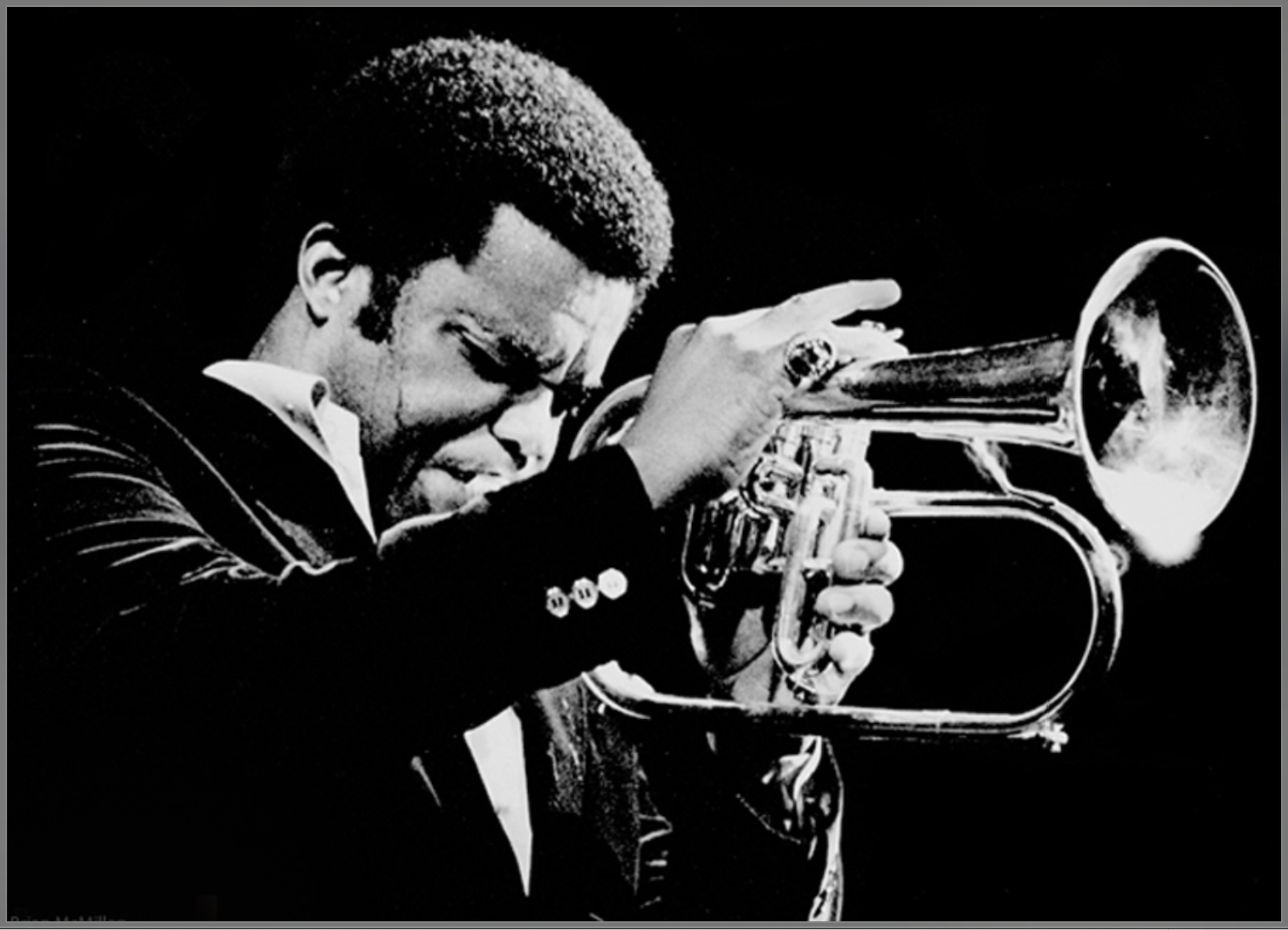
image source: Wikimedia Commons
Freddie Hubbard was born in Indianapolis, Indiana, on April 7th, 1938. He started playing the trumpet in high school and studied at the Arthur Jordan Conservatory of Music. As a teen, he played with brothers Wes and Monk Montgomery.
When he was twenty, he moved to New York and started performing with some of the best jazz players of the era, including “Philly” Joe Jones, Sonny Rollins, Quincy Jones, and Eric Dolphy! It wasn’t long before Hubbard became one of the leading trumpeters in jazz.
He was known for his powerful tone, technical skill, and bebop, hard bop, and post-bop sensibilities. His early work included recordings with Art Blakey and the Jazz Messengers and appearances on classic albums like John Coltrane’s Olé Coltrane and Herbie Hancock’s Maiden Voyage.
Hubbard also released several acclaimed albums as a band leader, including Hub-Tones and Red Clay. His ability to craft memorable solos and explore new directions in jazz made him a key figure in the transition to jazz fusion during the 1970s.
Listen To Why Freddie Hubbard is One of the Greatest Jazz Musicians Ever
Check out Freddie Hubbard crushing it with Art Blakey and the Jazz Messengers (with Stanley Jordan on guitar):
43. Lee Morgan

image source: Wikimedia Commons
Lee Morgan was born in Philadelphia, Pennsylvania, on July 10th, 1938. Inspired by Clifford Brown, he began playing the trumpet at a young age and quickly gained recognition for his prodigious talent.
Morgan joined Dizzy Gillespie’s big band at just 18 years old and later became a prominent member of Art Blakey’s Jazz Messengers, where he solidified his reputation as a leading voice in hard bop.
As a bandleader, Morgan released numerous influential albums, including The Sidewinder (1964), which featured the title track that became a crossover hit and a jazz standard. His fiery playing, bluesy phrasing, and ability to craft catchy compositions made him one of the defining trumpeters of his era.
Morgan worked with many jazz greats, including Hank Mobley, Wayne Shorter, and John Coltrane. Tragically, his life was cut short when he was fatally shot in 1972, but his contributions to jazz remain legendary.
Discover Why Lee Morgan is Among the Most Famous Jazz Musicians of All Time
Check out Lee Morgan playing with Art Blakey and the Jazz Messengers on the tune “I’ll Remember Clifford:”
44. Keith Jarret
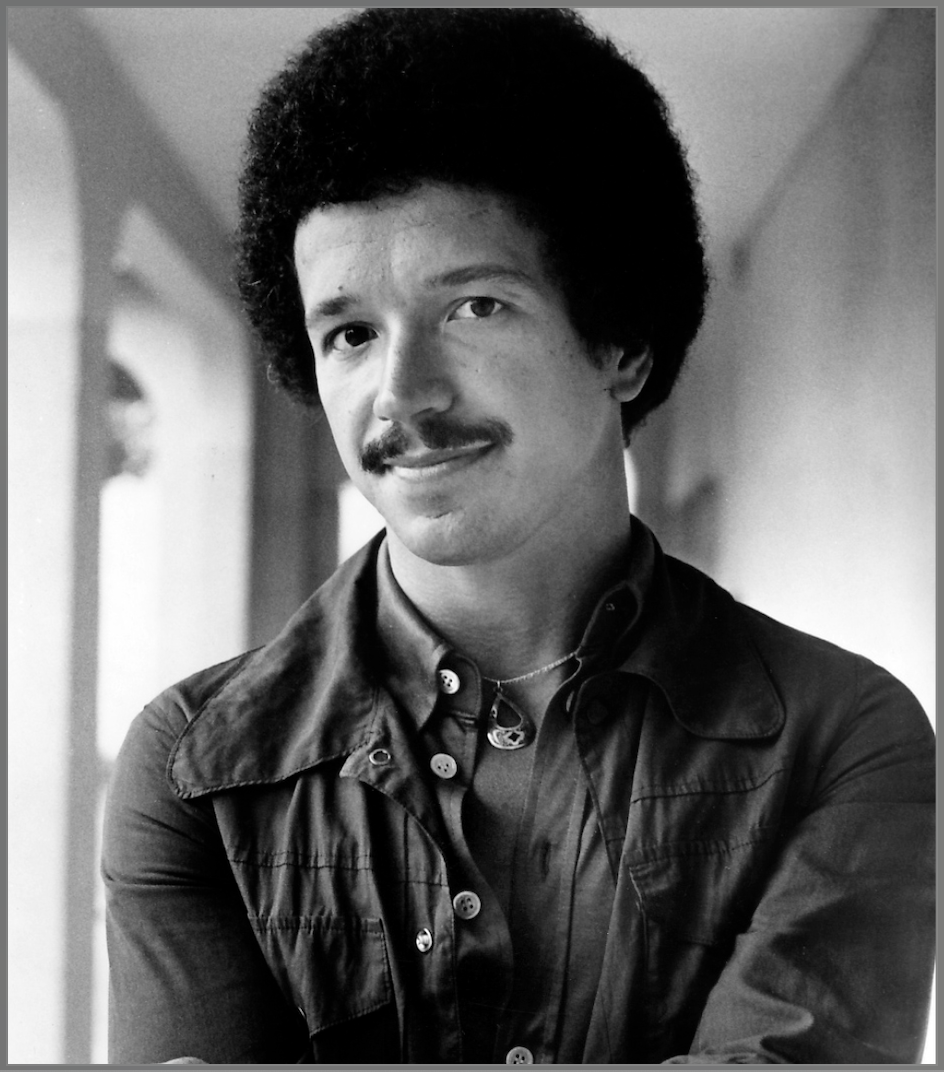
image source: Wikimedia Commons
Keith Jarrett was born in Allentown, Pennsylvania, on May 8th, 1945. A prodigious talent, he began playing piano at age three and gave formal recitals by seven, blending classical training with early improvisational explorations.
Jarrett’s career took off in the 1960s when he joined Art Blakey’s Jazz Messengers, followed by stints with Charles Lloyd and Miles Davis. He gained widespread acclaim as a bandleader and solo artist in the 1970s, particularly for The Köln Concert (1975), a landmark recording of entirely improvised solo piano.
Known for his emotional depth and technical mastery, Jarrett is equally celebrated for his work in small groups, especially his Standards Trio with Gary Peacock and Jack DeJohnette. His music spans jazz, classical, and world influences, making him one of history’s most versatile and innovative pianists.
Jarrett’s improvisational style and ability to connect deeply with his audience have cemented his place as one of the most iconic figures in modern jazz.
Check Out Why Keith Jarret is One of the Most Famous Jazz Musicians Ever
Here is Keith Jarret playing the classic song “Somewhere Over the Rainbow” in Tokyo in 1984:
45. Max Roach
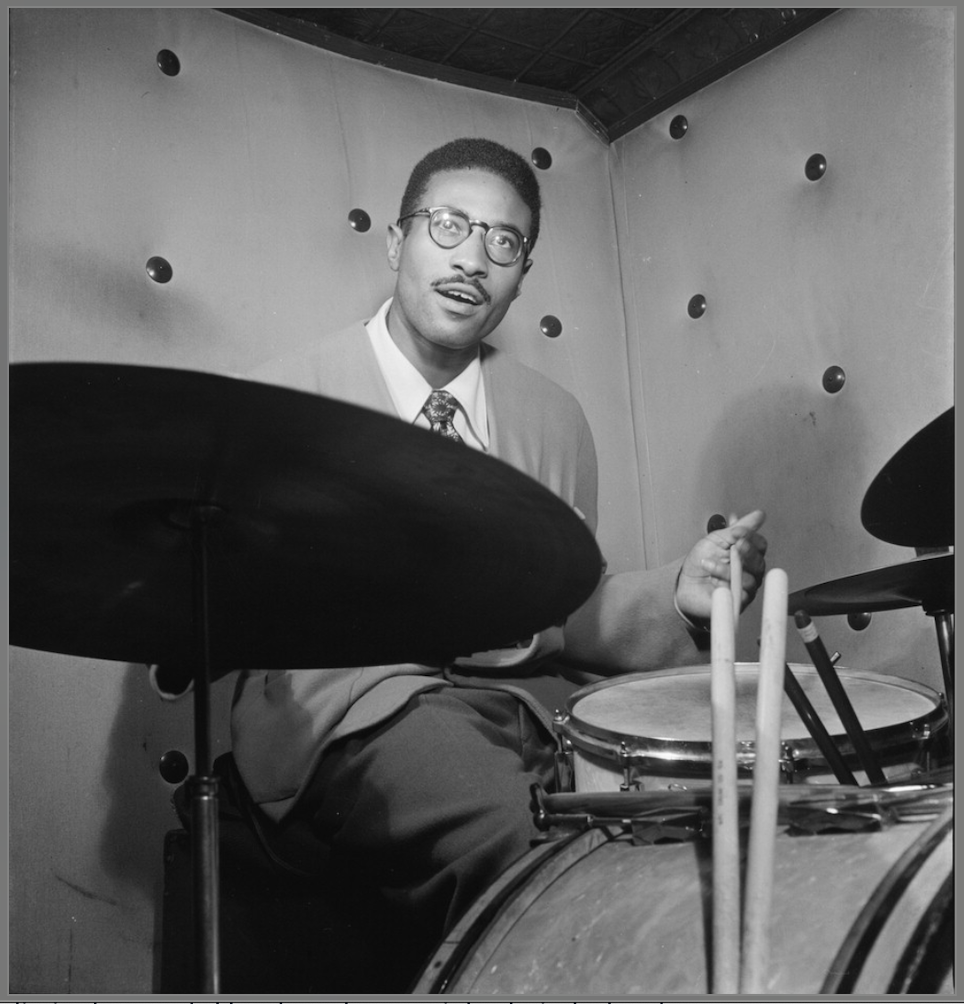
image source: Wikimedia Commons
Max Roach was born in Newland, North Carolina, on January 10th, 1924, and grew up in Brooklyn, New York. He started playing drums as a child and began performing professionally in his teens, joining the bebop movement in the 1940s.
Roach was a trailblazer in jazz drumming, transforming the role of the drums from a purely rhythmic foundation to a fully expressive and melodic instrument. He was a crucial figure in the development of bebop, working with Charlie Parker and Dizzy Gillespie on landmark recordings.
As a bandleader, Roach released influential albums like We Insist! Freedom Now Suite, which addressed civil rights themes and expanded the boundaries of jazz composition. His innovative use of time signatures and polyrhythms set new standards for jazz drumming.
Roach collaborated with numerous jazz greats throughout his career, including Clifford Brown, Sonny Rollins, and Abbey Lincoln. His contributions to jazz rhythm and composition have left an indelible mark on the genre.
Listen To Why Max Roach is Revered As One of the Most Famous Jazz Musicians of All Time
Check out this crazy Max Roach drum solo:
46. Lee Konitz
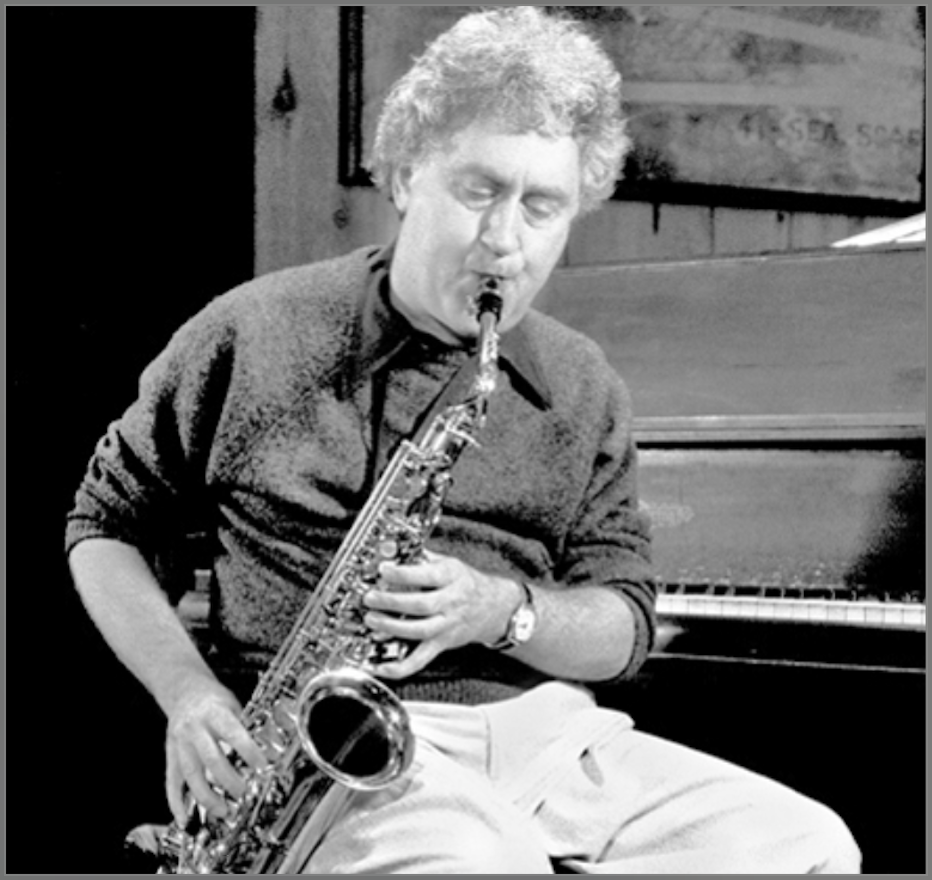
image source: Wikimedia Commons
Lee Konitz was born in Chicago, Illinois, on October 13th, 1927. He started on clarinet before switching to alto saxophone in his teens and became known for his cool, airy tone and innovative approach to improvisation.
Konitz was a key figure in the cool jazz movement and contributed to Miles Davis’ Birth of the Cool sessions in the late 1940s. Unlike many saxophonists of his era, Konitz developed a style distinct from Charlie Parker’s dominant influence.
As a bandleader and collaborator, Konitz recorded extensively and worked with jazz luminaries like Lennie Tristano, Warne Marsh, and Gerry Mulligan. His album Subconscious-Lee is considered a cornerstone of cool jazz.
Konitz’s career spanned over seven decades, making him one of the most enduring and influential saxophonists in jazz history.
Here’s Why Lee Konitz is One of the Best Jazz Musicians Ever
Check out Lee Konitz and Lennie Tristano playing the bebop classic “Donna Lee:”
47. Roy Haynes
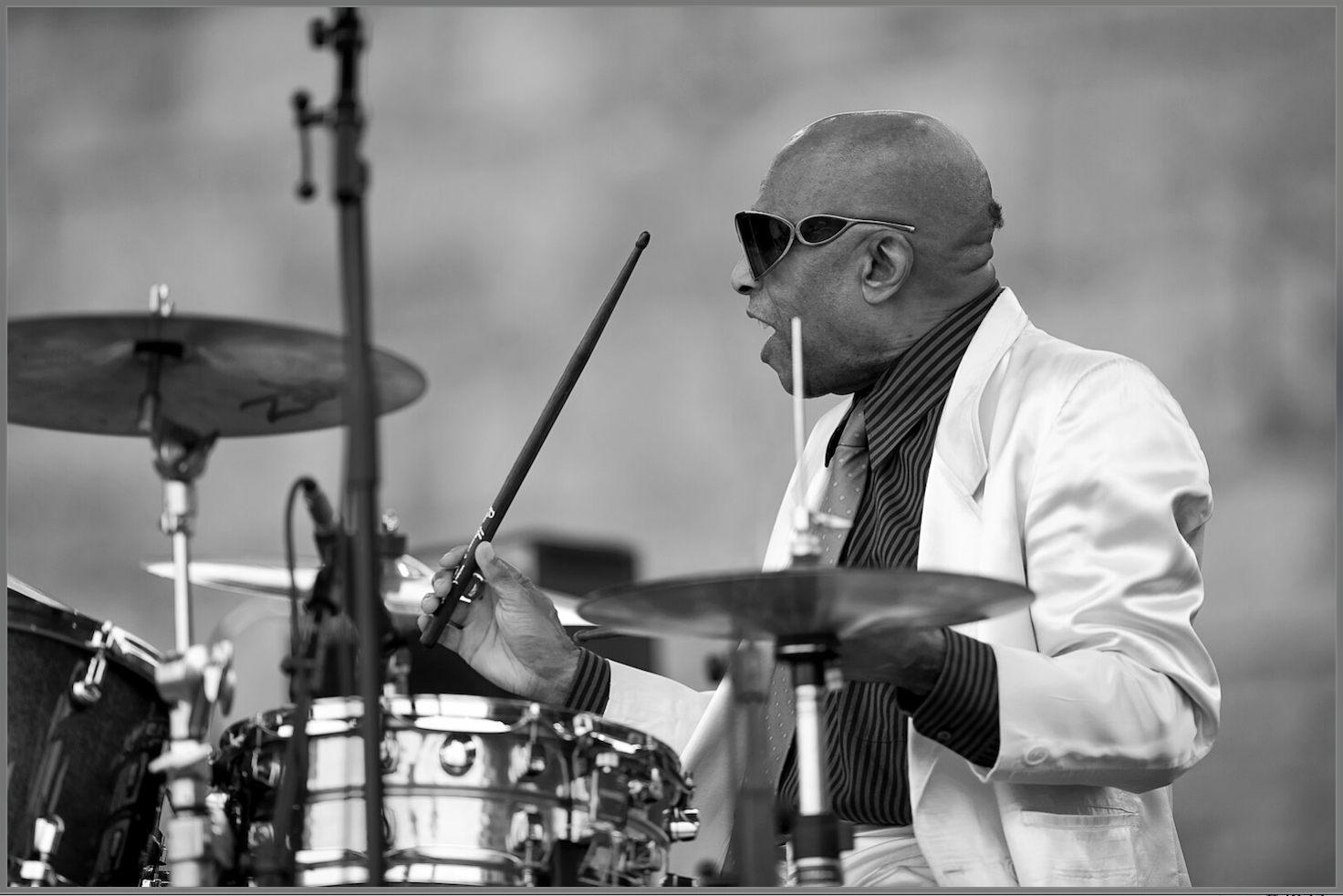
image source: Wikimedia Commons
Roy Haynes was born in Roxbury, Massachusetts, on March 13th, 1925. He began playing drums as a teenager and quickly gained recognition in Boston’s jazz scene before moving to New York in the 1940s.
Haynes’s career took off when he joined Lester Young’s band in 1947, and he later worked with Charlie Parker, becoming one of the most sought-after drummers of the bebop era. Known for his crisp, dynamic drumming and ability to adapt to various styles, Haynes earned the nickname “Snap Crackle.”
Over his long career, Haynes played with a wide range of jazz legends, including John Coltrane, Miles Davis, Sarah Vaughan, Chick Corea, and Pat Metheny. His versatility allowed him to excel in bebop, hard bop, avant-garde, and fusion.
Haynes’s contributions to jazz rhythm and his innovative approach to drumming have cemented his status as one of the greatest and most influential drummers in jazz history.
Hear Why Roy Haynes is Considered One of the Best Jazz Musicians Ever
Check out Roy Haynes playing with Chick Corea and Miroslav Vitous at the White House in 1982:
48. Stanley Clarke
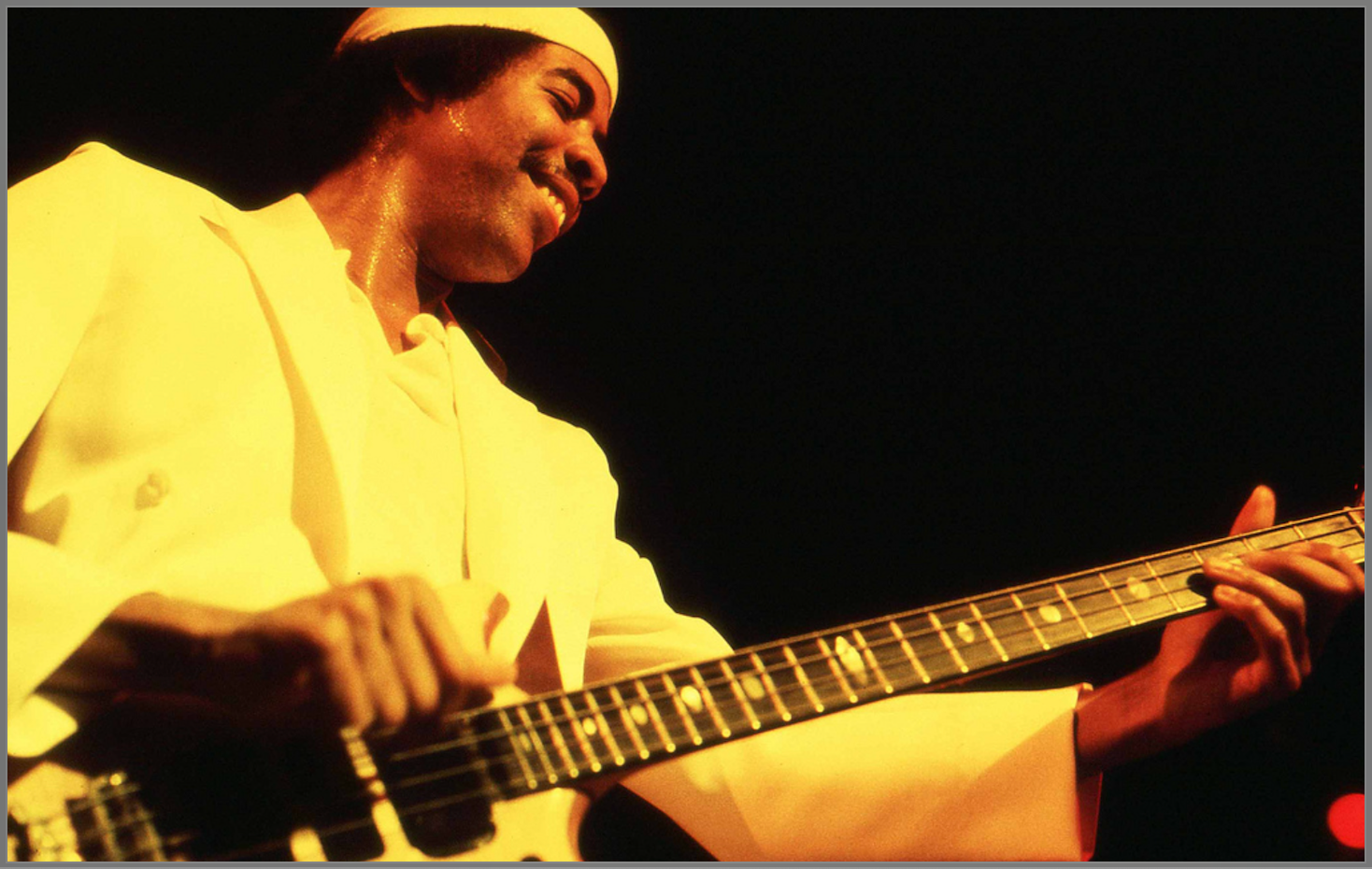
image source: Wikimedia Commons
Stanley Clarke was born in Philadelphia, Pennsylvania, on June 30th, 1951. He began his musical journey on violin and cello before switching to bass during his teenage years.
Clarke gained recognition in the 1970s as a founding member of Chick Corea’s groundbreaking jazz fusion group, Return to Forever. His virtuosic bass playing, both upright and electric, set a new standard for the bass-playing in jazz.
Albums like School Days showcased his unique approach to the bass’s role, influencing a generation of bass players.
In addition to his work with Return to Forever, Clarke has led a successful solo career, blending jazz with rock, funk, and world music. He has also composed scores for film and television, further expanding his artistic reach.
Clarke’s contributions to jazz and fusion and his technical mastery have made him one of music history’s most celebrated and influential bassists.
Hear Why Stanly Clarke is Considered One of the Most Famous Jazz Musicians Ever
Check out Stanley Clarke playing his classic fusion tune “School Days” in 1981:
49. Jaco Pastorius
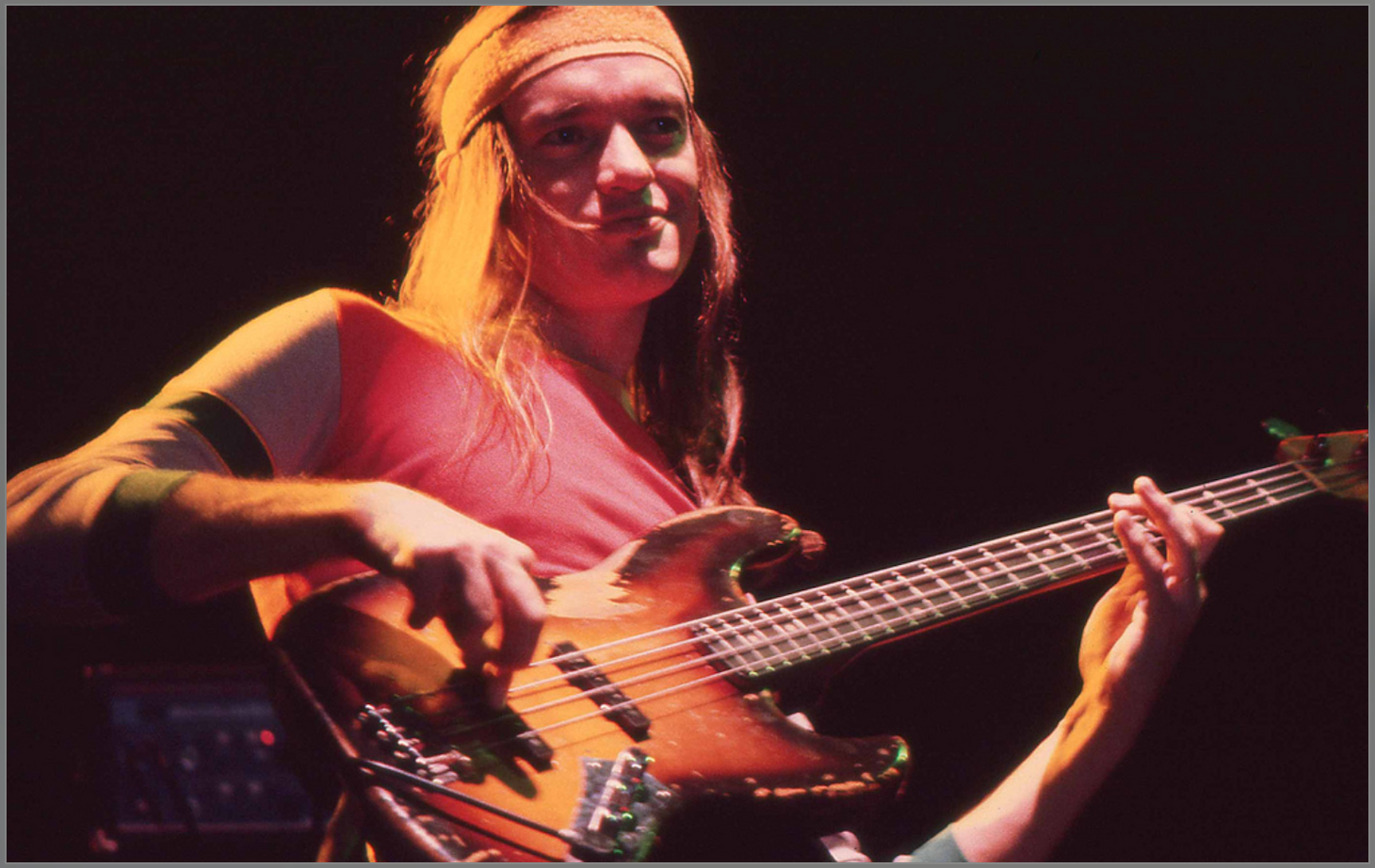
image source: Wikimedia Commons
Jaco Pastorius was born in Norristown, Pennsylvania, on December 1st, 1951, and grew up in Fort Lauderdale, Florida. Originally a drummer, he switched to bass as a teenager after an injury. He quickly developed a revolutionary approach to the instrument.
Pastorius gained fame in the 1970s for his virtuosic bass playing, which redefined the role of the electric bass in jazz. His groundbreaking self-titled debut album included iconic tracks like “Portrait of Tracy” and “Donna Lee,” showcasing his lead bass playing.
As a member of Weather Report, Pastorius contributed to some of the group’s most celebrated albums, including Heavy Weather, which featured the hit “Birdland.” He collaborated with artists like Pat Metheny, Herbie Hancock, and Joni Mitchell.
Pastorius’s career ended in 1987, but his profound influence on jazz and modern bass playing remained.
Discover Why Jaco Pastorius is One of the Most Famous Jazz Musicians to Ever Live
Check out Jaco Pastorius playing on the classic Herbie Hancock tune “Dolphin Dance:”
50. Paul Chambers
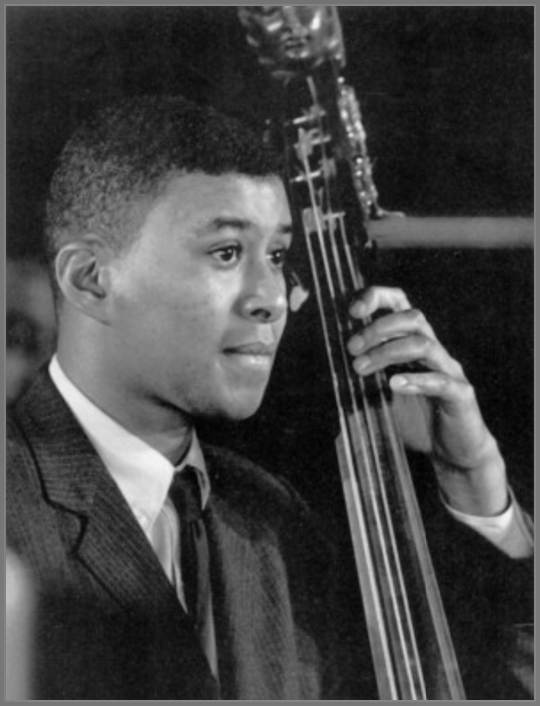
image source: Wikipedia
Paul Chambers was born in Pittsburgh, Pennsylvania, on April 22nd, 1935, and raised in Detroit, Michigan. He began his musical studies on the baritone horn before switching to double bass as a teenager.
Chambers became one of the most sought-after bassists in jazz during the 1950s and 1960s, known for his warm tone, impeccable time, and ability to take lyrical, arco (bowed) solos. He was a cornerstone of the rhythm section in Miles Davis’s First Great Quintet, contributing to iconic albums like Kind of Blue, Milestones, and Round About Midnight.
In addition to his work with Davis, Chambers recorded extensively as a sideman and led several albums of his own, including Bass on Top and Chambers’ Music. His collaborations spanned the spectrum of jazz, working with John Coltrane, Cannonball Adderley, Wynton Kelly, and Art Blakey.
Chambers’ melodic approach and contributions to the evolution of modern jazz bass have made him one of the most influential bassists in jazz history.
Here’s Why Paul Chambers is One of the Best Jazz Musicians Ever
Check out this awesome bowed bass solo over the classic standard “On Green Dolphin Street:”
A Famous Photograph of Famous Jazz Musicians!
There have been so many jazz greats throughout jazz history; this list has but a small sample of them! Here’s a famous photo of fifty-eight jazz legends who gathered at the call of photographer Art Kane in 1958. Recognize any of these famous jazz musicians?
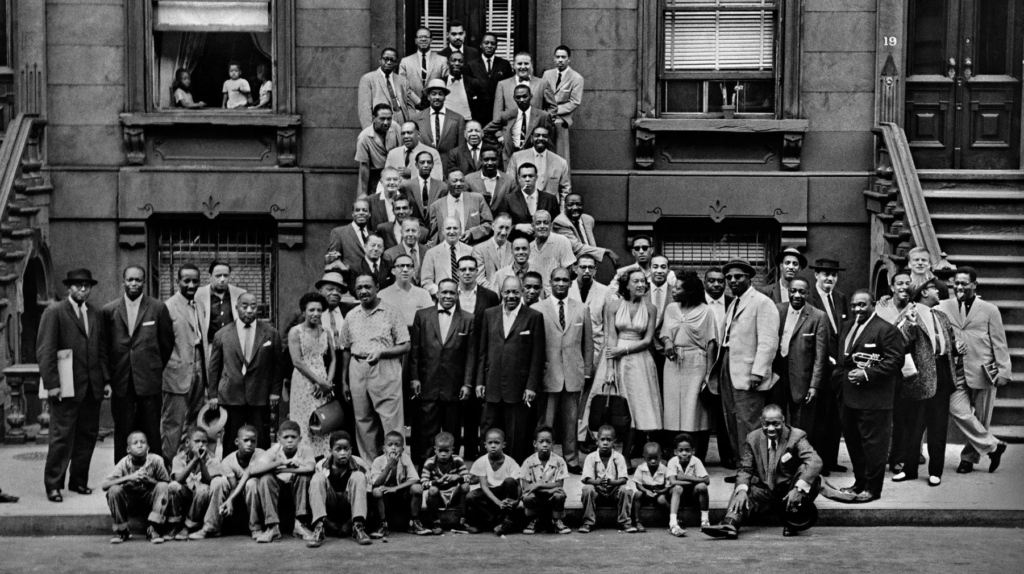
Image Source: New York Times
There are many other important and influential jazz musicians, but these fifty jazz performers are particularly important. If you are unfamiliar with these iconic jazz musicians, it’s time to explore their music!
Become The Best Jazz Musician You Can Be. Join the Learn Jazz Standards Inner Circle!
Feeling inspired by this list of jazz greats? Are you looking for a comprehensive and structured approach to mastering jazz music so you can join the ranks of these famous jazz musicians?
If your answers are yes and yes, you must check out the Learn Jazz Standards Inner Circle. We’ll help you become the best jazz musician you can be!
Improve in 30 Days or Less. Join the Inner Circle!


